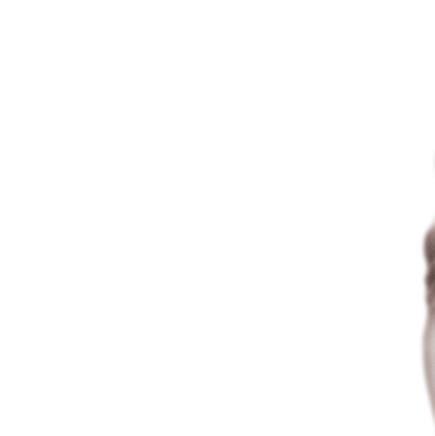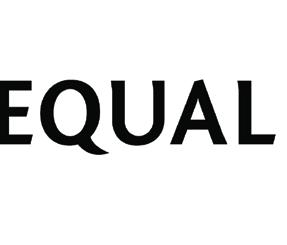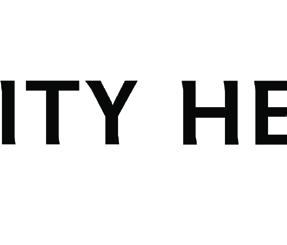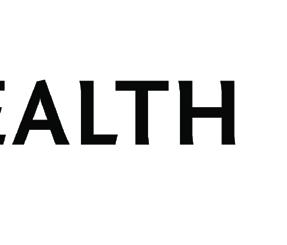


















The SUV for the electric age is here. With a range of up to 300 miles, the all-electric Polestar 3 is designed to create remarkable range and an unmistakable look.
Visit our showroom in Fashion Square Mall.

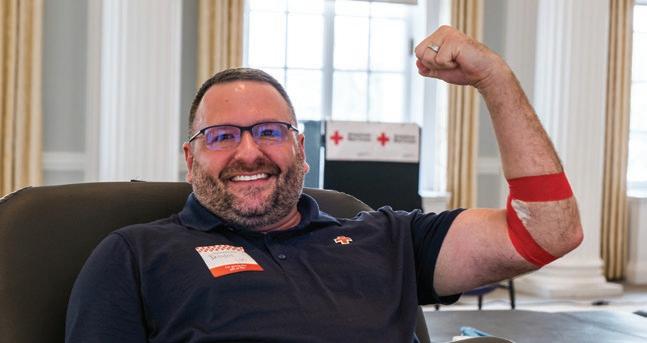
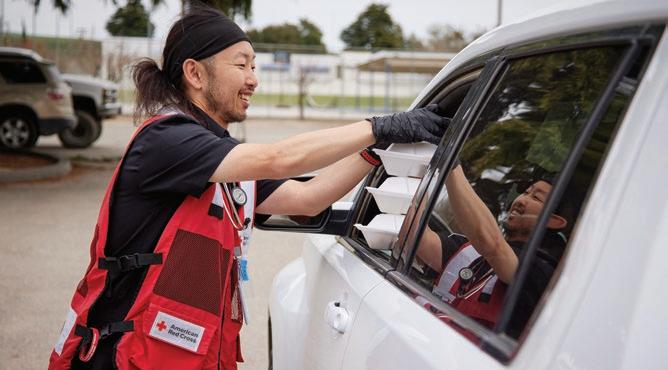

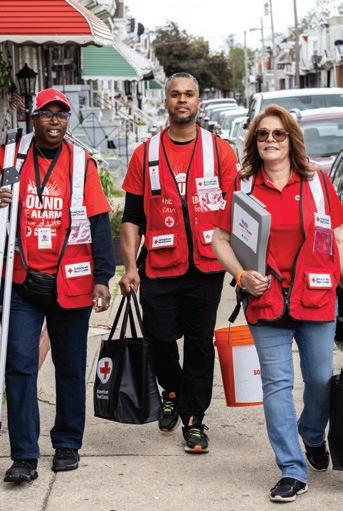

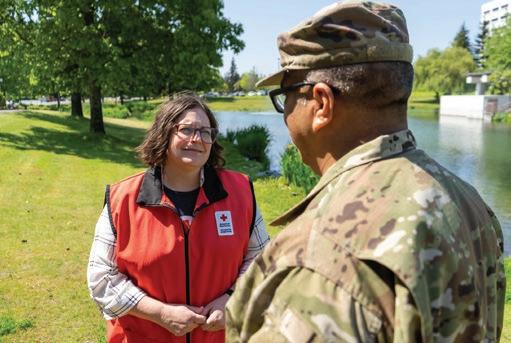

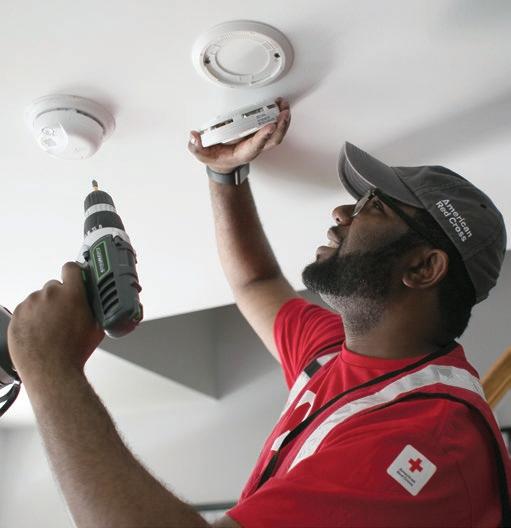
We invite you and others to join the American Red Cross mission by volunteering, giving blood, learning lifesaving skills or making a financial donation. Your support helps ensure families don’t face emergencies alone.
We invite you and others to join the American Red Cross mission by volunteering, giving blood, learning lifesaving skills or making a financial donation. Your support helps ensure families don’t face emergencies alone.
We invite you and others to join the American Red Cross mission by volunteering, giving blood, learning lifesaving skills or making a financial donation. Your support helps ensure families don’t face emergencies alone.
Volunteer. Give Blood. Donate. Take a Class. Visit redcross.org/AZNM to learn more.
Volunteer. Give Blood. Donate. Take a Class. Visit redcross.org/AZNM to learn more.
Volunteer. Give Blood. Donate. Take a Class. Visit redcross.org/AZNM to learn more.








44
Arizona Lottery: Empowering Arizona through Philanthropy
This month spotlighting the Arizona Lottery, Tyler Butler’s series explores the myriad ways businesses give back and the positive ways their programs impact our community.

COVER STORY
28 Trending in 2025:
Forecasting strengths and challenges in our key economic sectors In Business Magazine reached out to leaders of businesses in our community for their thought leadership in areas at the very foundation of our economy.
9 Guest Editor
Rick McCartney, president of InMedia Company and publisher of In Business Magazine, introduces the “Business Forecast 2025” issue.
10 Feedback

Dr. Tricia Loscher, Johnathan Meade and Sam Saks respond to In Business Magazine’s burning business question of the month: What AI application(s) have you adopted into your business operations over the past year?
12 Briefs
“Looking Ahead: Arizona’s Cannabis Market in 2025” “Dailies Top Stories,” “Local Standouts Recognized for Achievements and Philanthropy,” “Co-working Kitchen Concept Welcomes Culinary Entrepreneurs” and “Collaborative Inspiration Creates Unique Coffee Bar Showroom”
15 By The Numbers
Real-time pricing agility, known as dynamic pricing, is reshaping the e-commerce landscape.
16 From the Top
Pairing learning and collaboration with experience and perspective, Chris Kirch rose from intern to president at Kitchell Contractors.
17 CRE
“Innovation in CRE: Taking Risks Is the Only Way to Win the Game,” “Affordable Housing Integrates Workforce Development,” “Glendale New-Build Divisible for Small Businesses” and “Mixed-Use Neighborhood Designed Car-Free”
20 Semi Insights
“AI, Arizona Investments and the Uncertain Road Ahead,” “JX Advanced Metals USA Opens State-of-the-Art Facility in Mesa” and “Semiconductors Drive Arizona’s Electric Vehicle Market”
38 How AI Can Help Future-proof the Workforce
Nicole Neumarker discusses how the true potential of AI lies in its capacity to empower and uplift the workforce
24 Healthcare
“HonorHealth Advances Supplier Diversity” and “3 Healthcare Coverage Strategies That Give Employers a Competitive Edge and Better Cost Control
26 Technology
“Combine Organizational Learning and AI-Specific Learning to Better Manage Uncertainty” and “Aligning Benefits and Retention: Technology’s Role in Benefits Literacy and Employee Satisfaction”
39 Books
New releases give fresh insights on business thinking.
40 Economy
Kyle McMillian discusses construction financing and the questions every construction company should ask its banker.
42 Legal
Andrea Marconi and Claire MacCallum examine key considerations of clickwrap agreements as binding contracts.
46 Nonprofit
Samantha McIntosh discusses how to maximize visibility and brand recognition by using social media to connect and enhance partnerships
47 Assets
2025 Lucid Gravity Grand Touring SUV Plus: Fast-fixes for marketing and events exposure
48 Powerlunch

Kellie Walenciak speaks from the heart about the value of authentic commitment in her candid note on performative empathy.
66 Roundtable
Holly Rollo examines challenges and strategies in maintaining a company culture while adapting to the generational shift now underway
“Cheers to a new year and another chance for us to get it right.” —Oprah Winfrey









































































































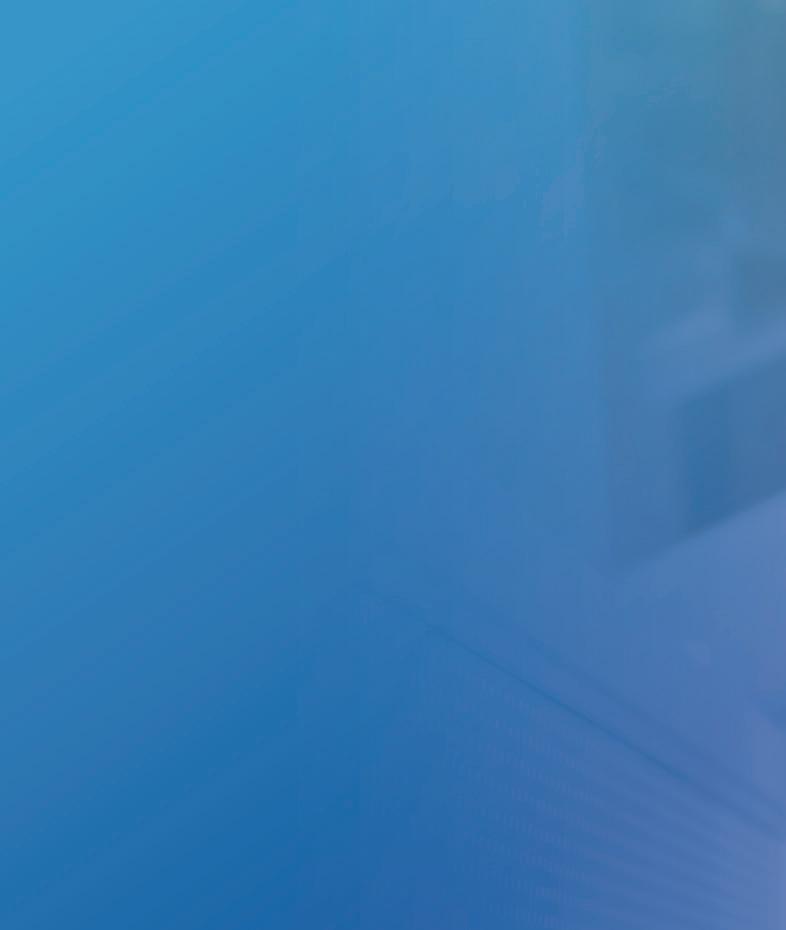



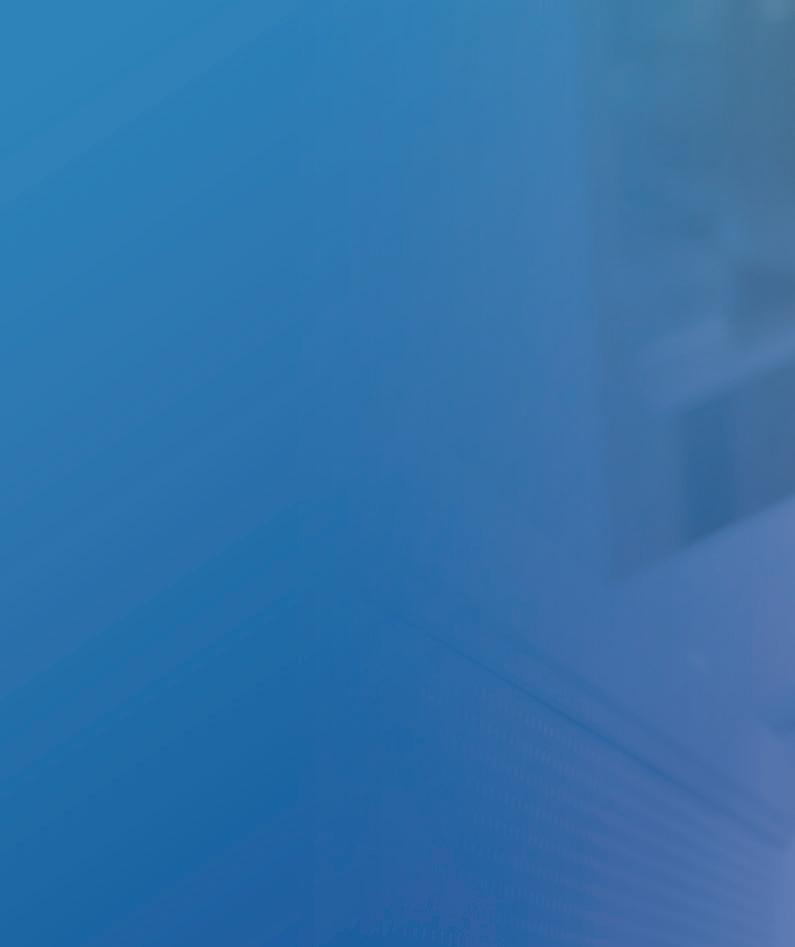
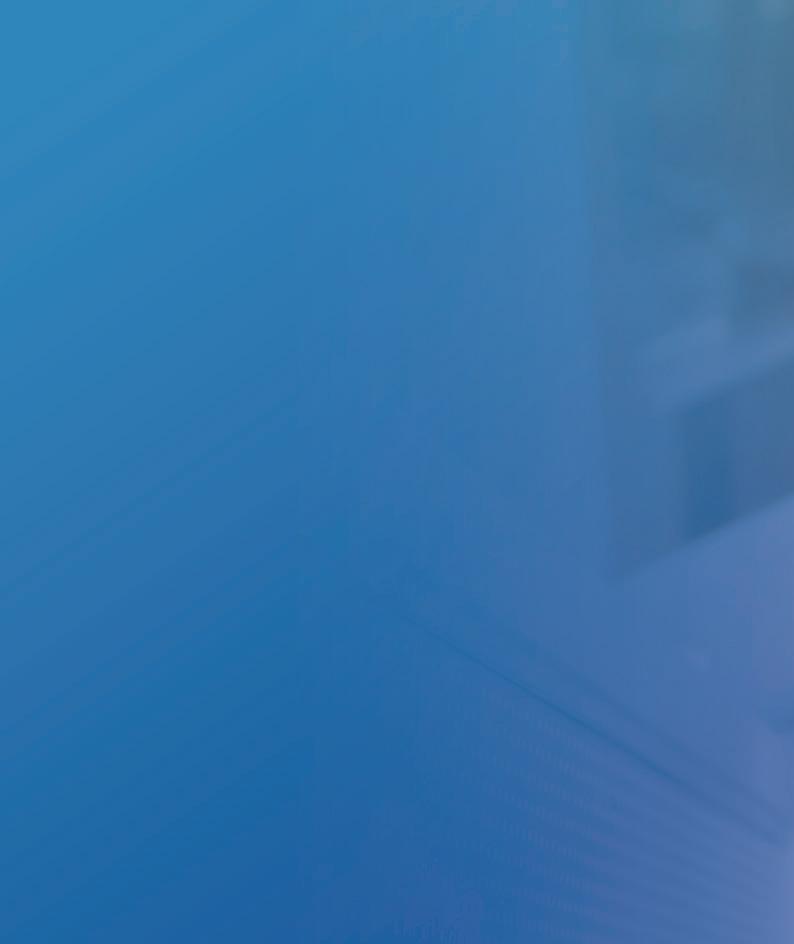






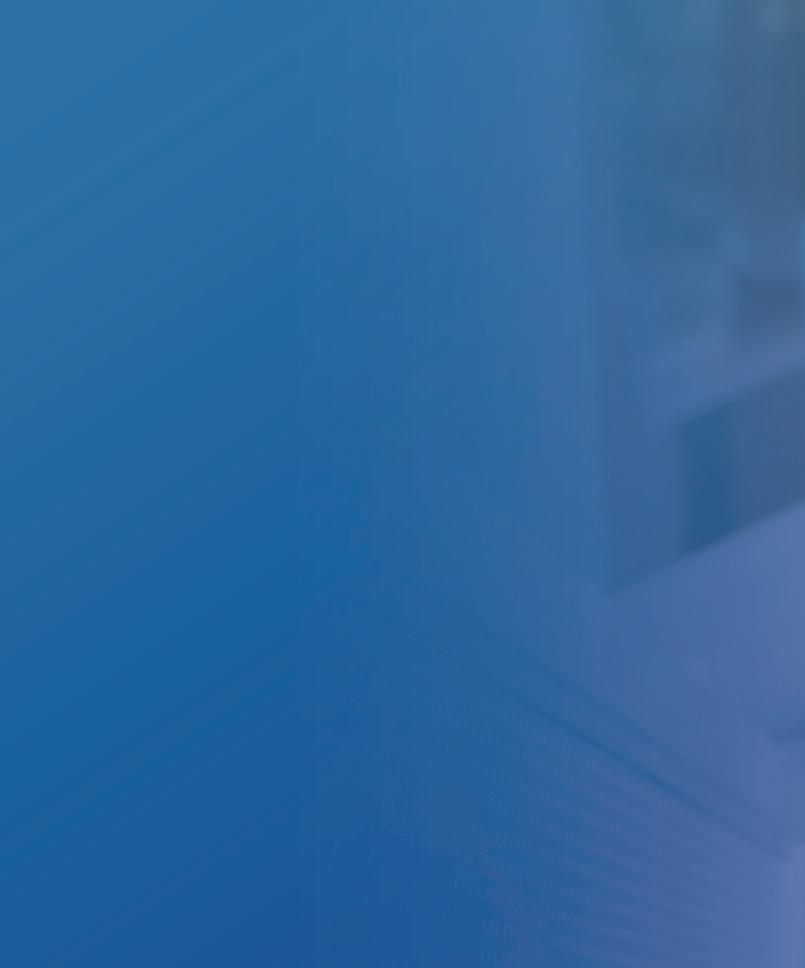
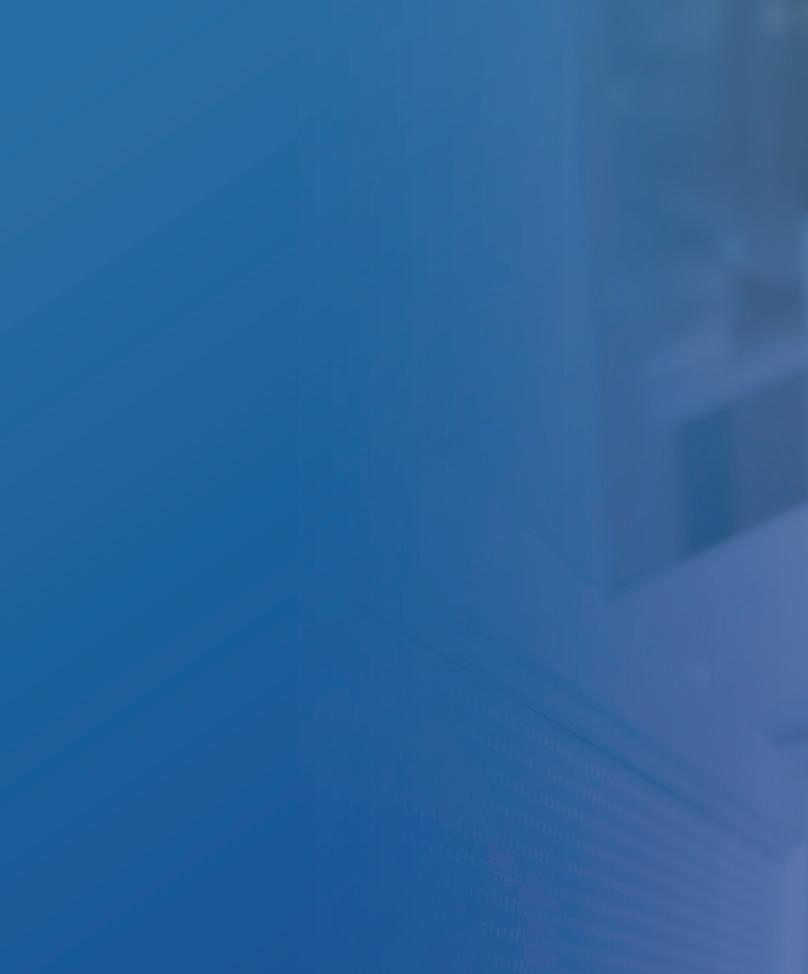
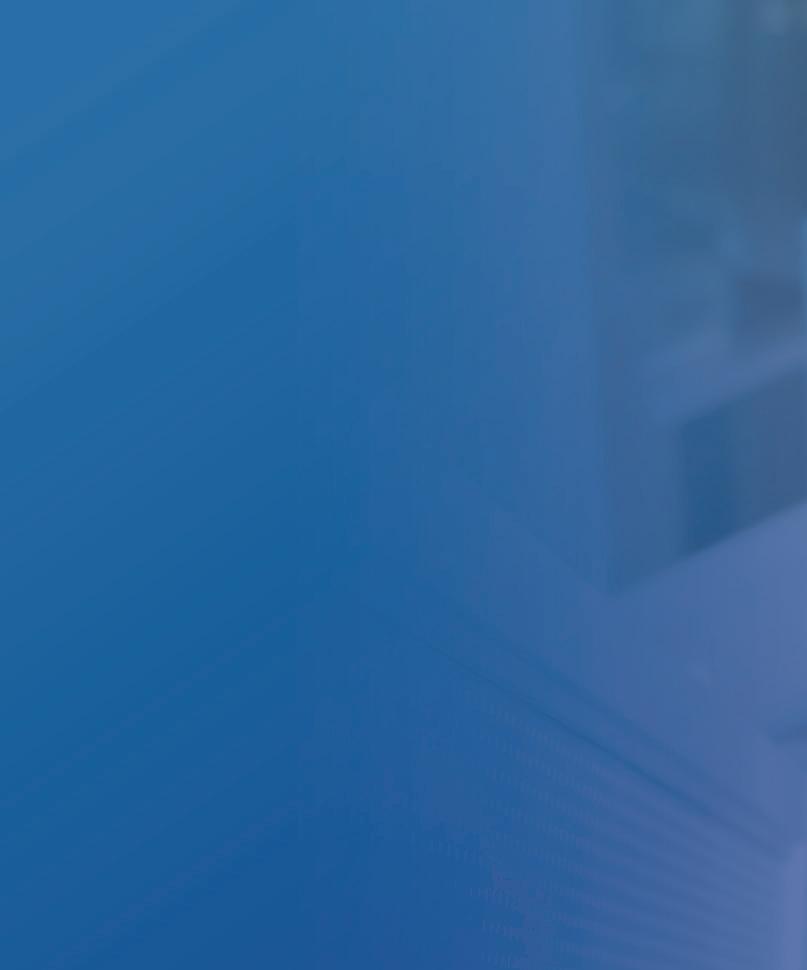
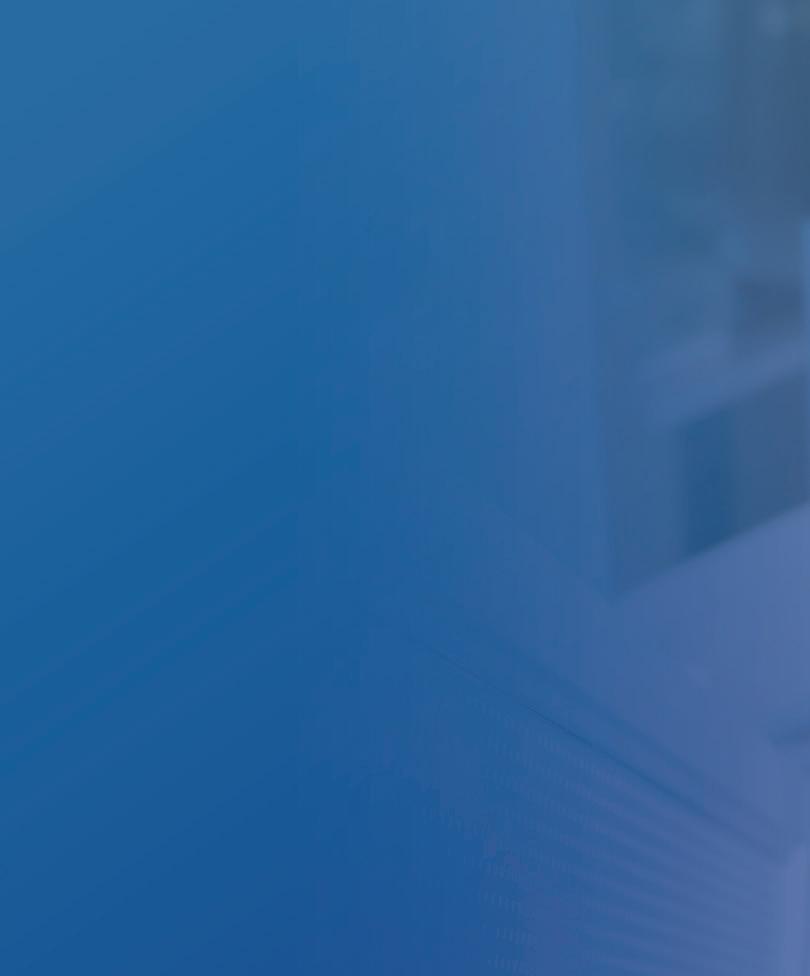
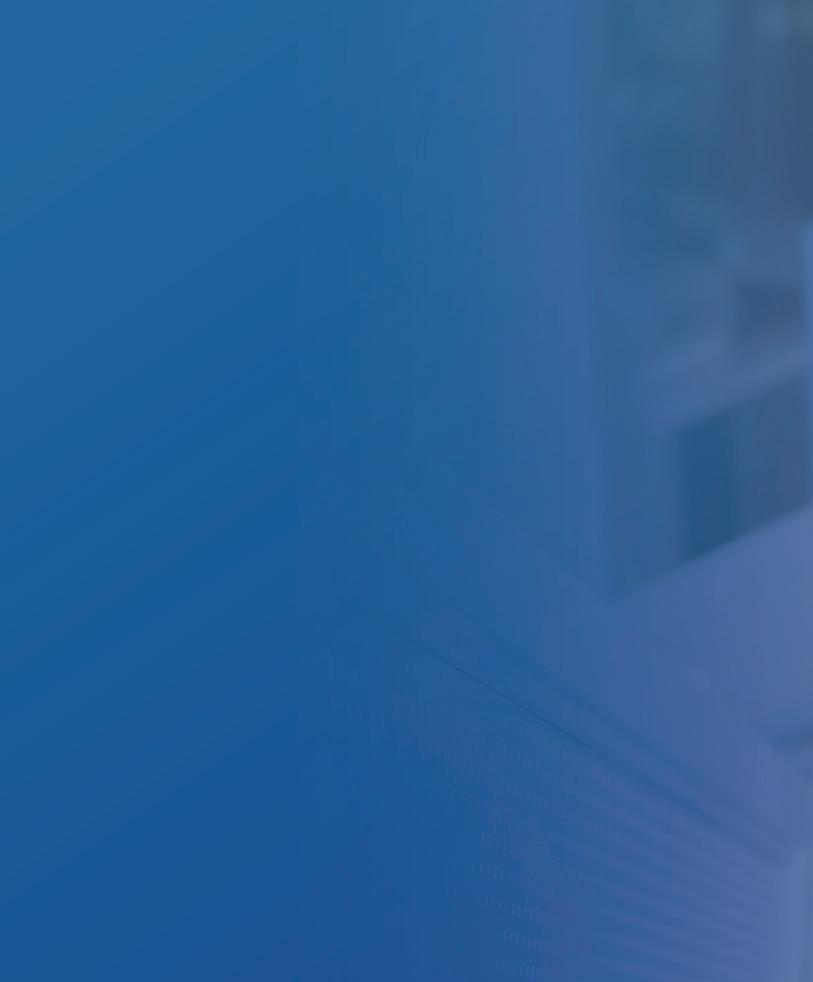
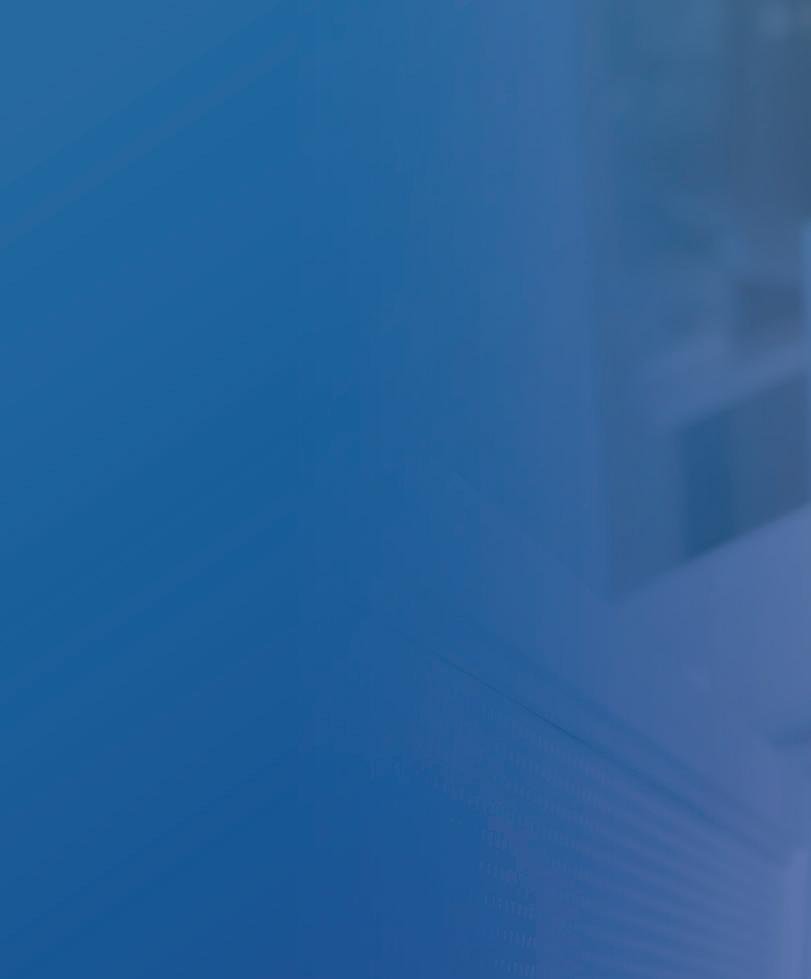
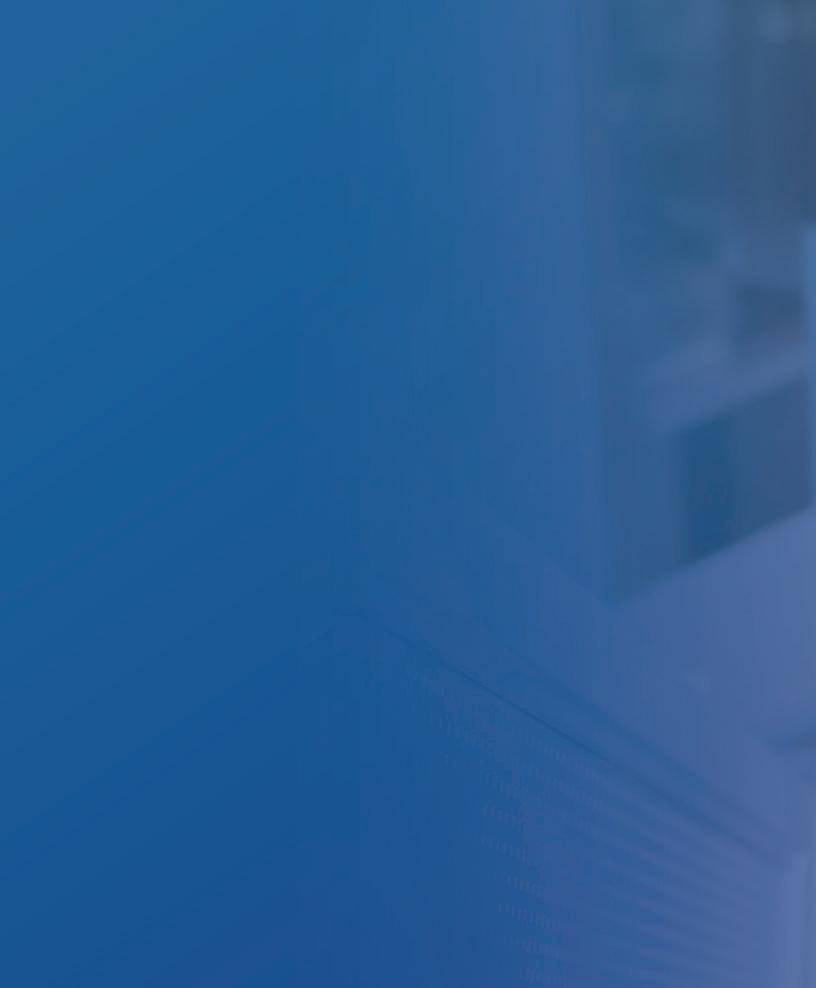
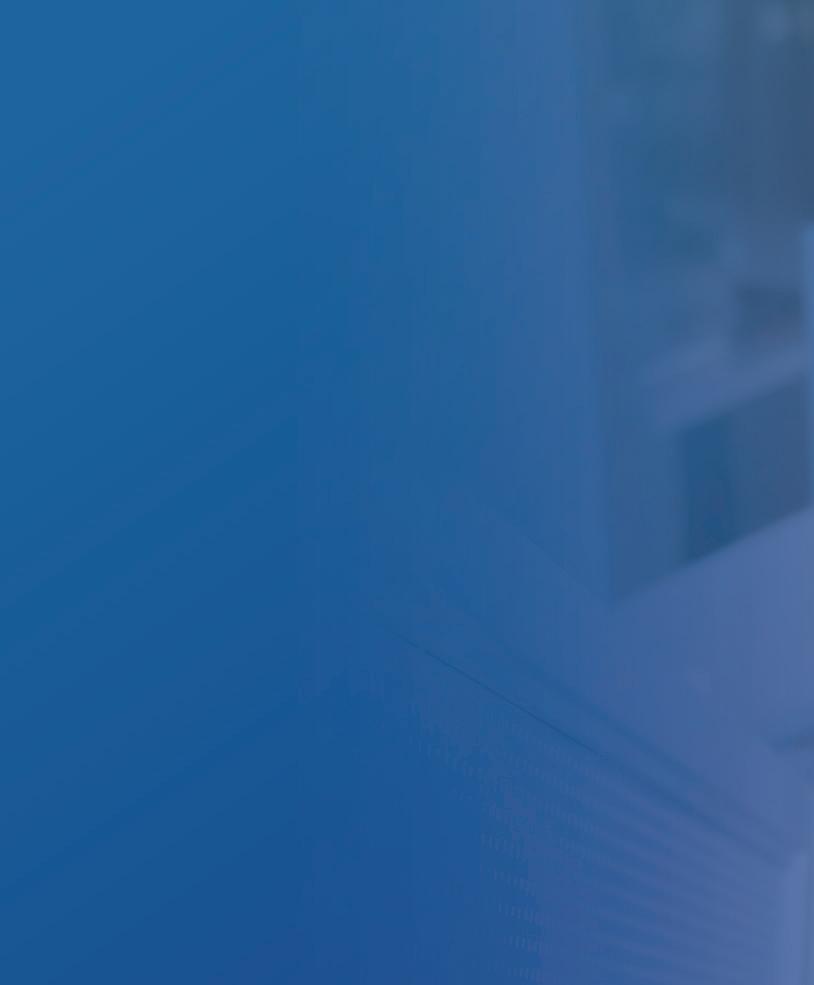
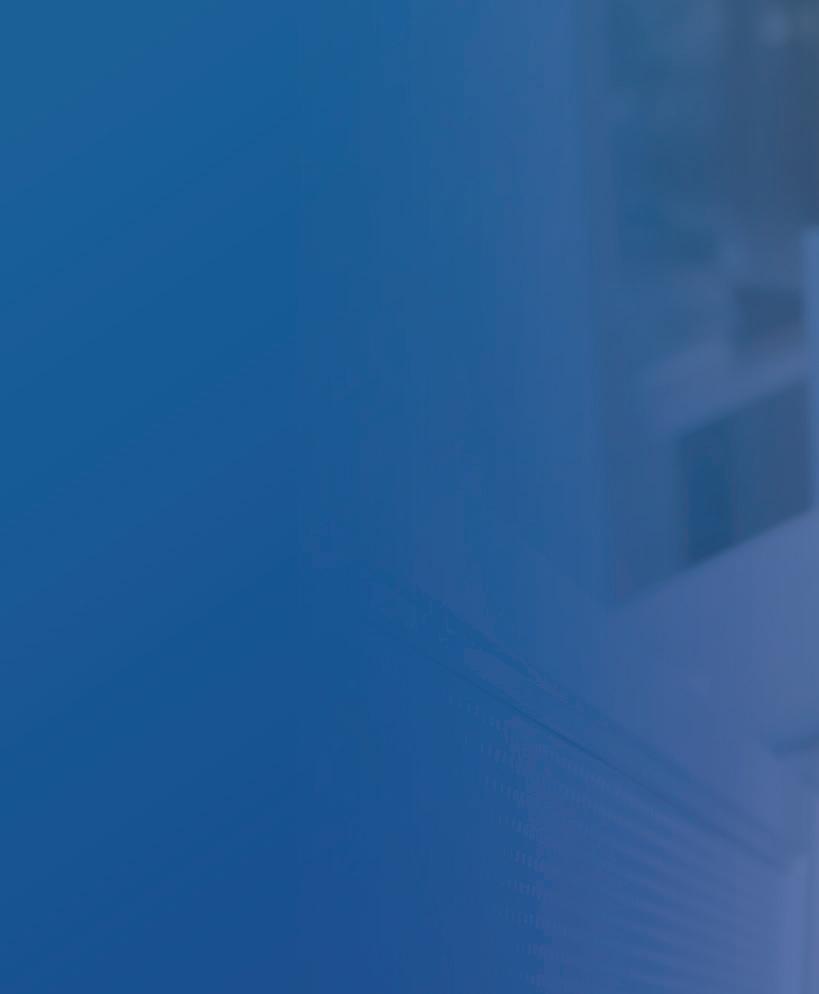


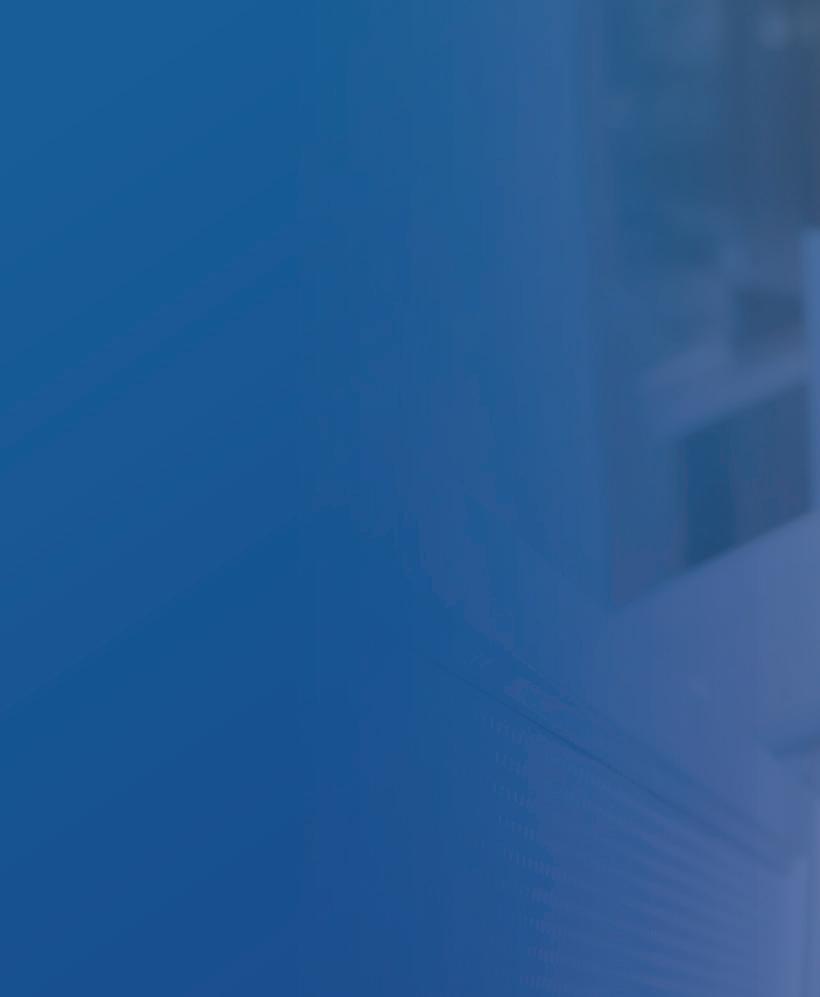
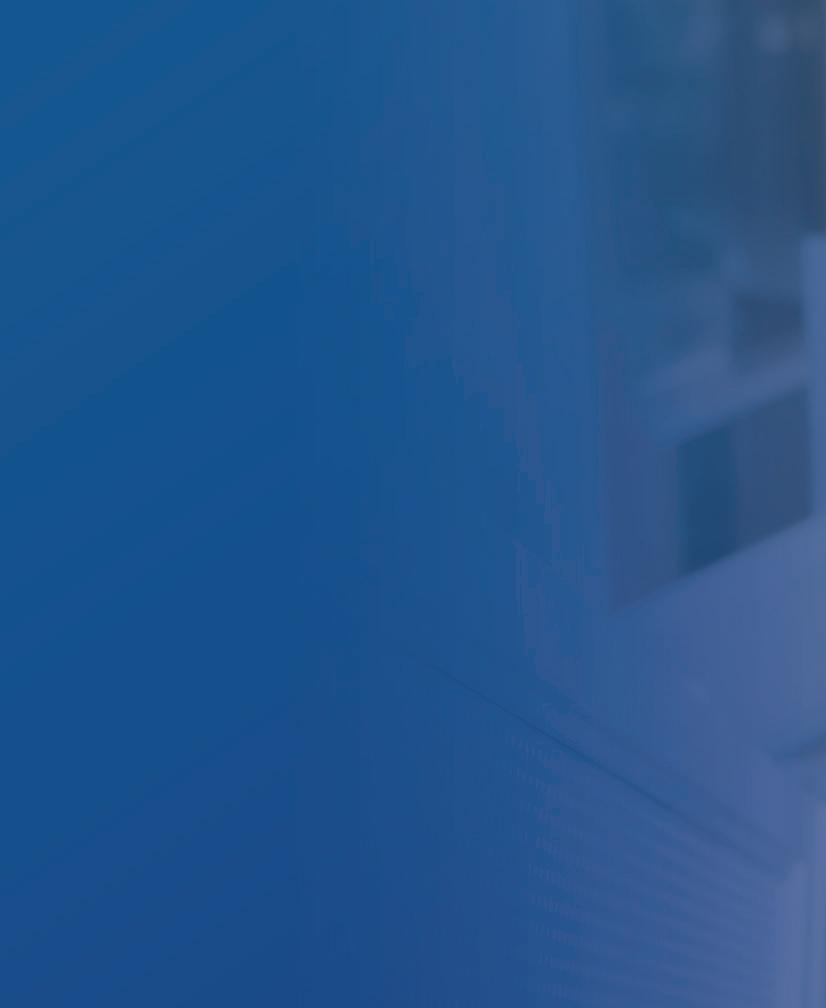

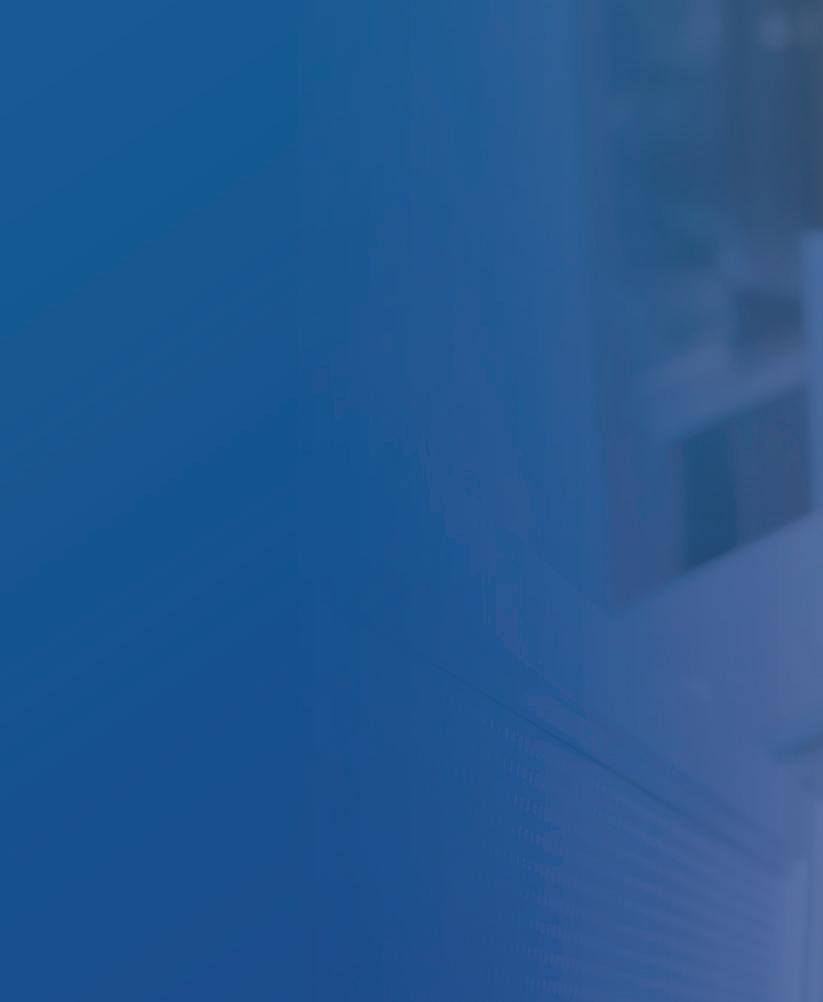
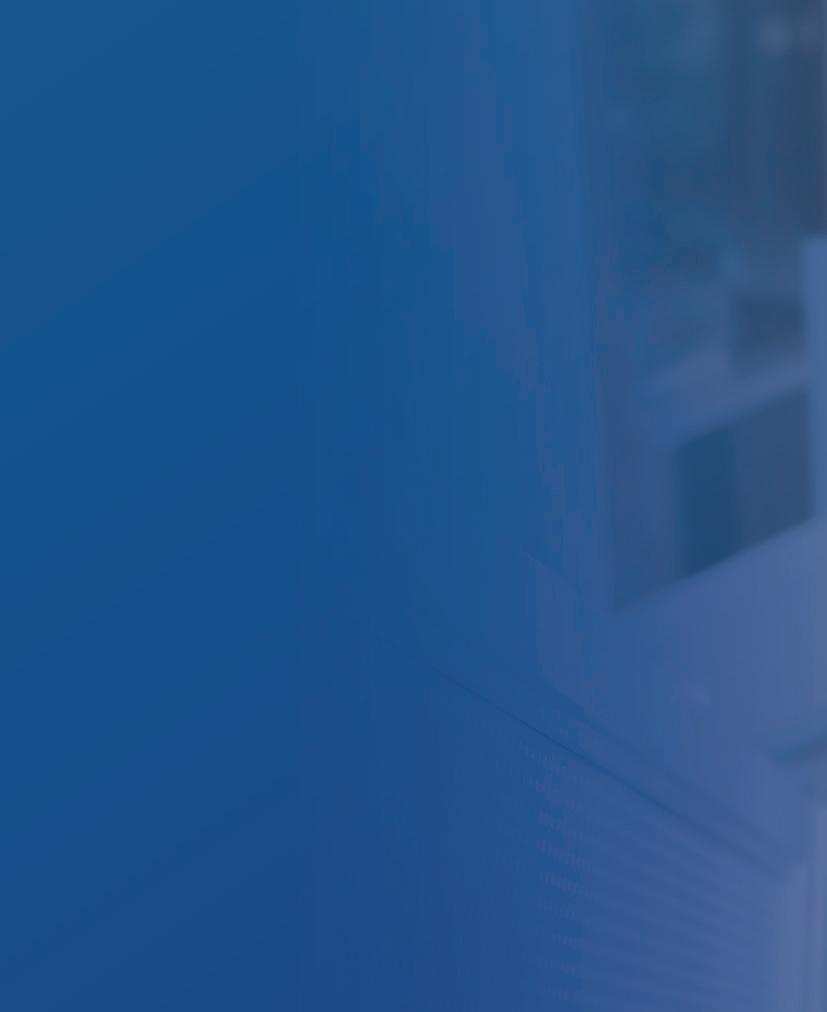
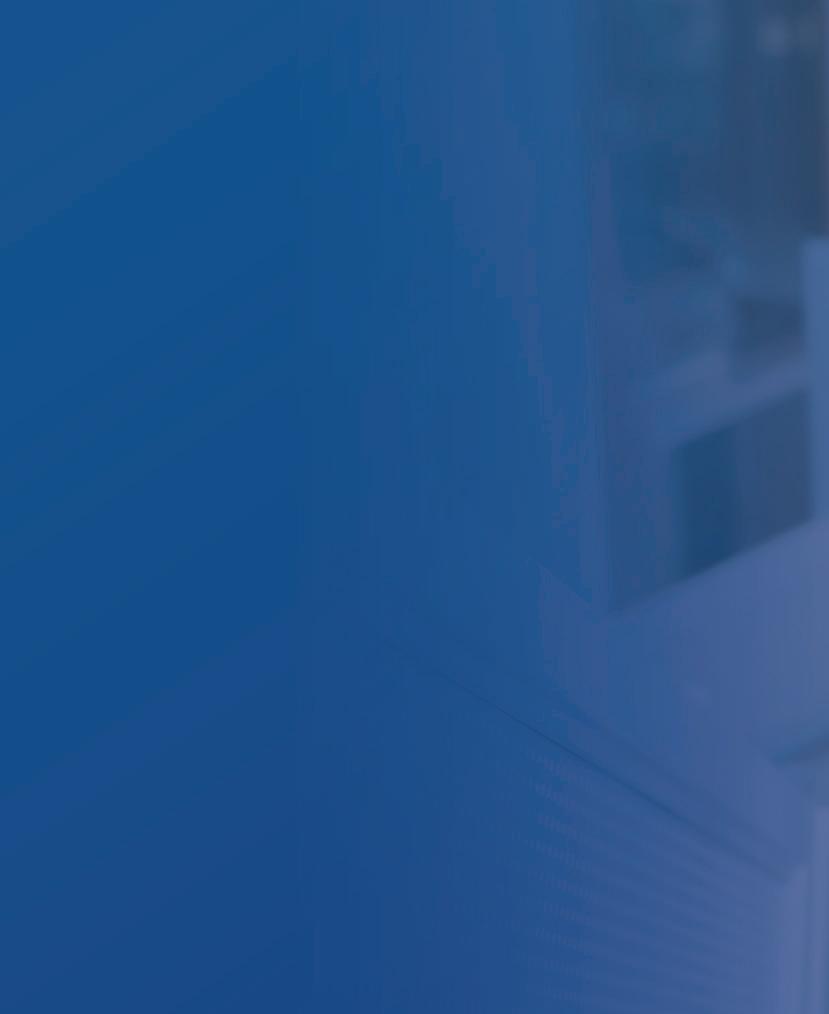
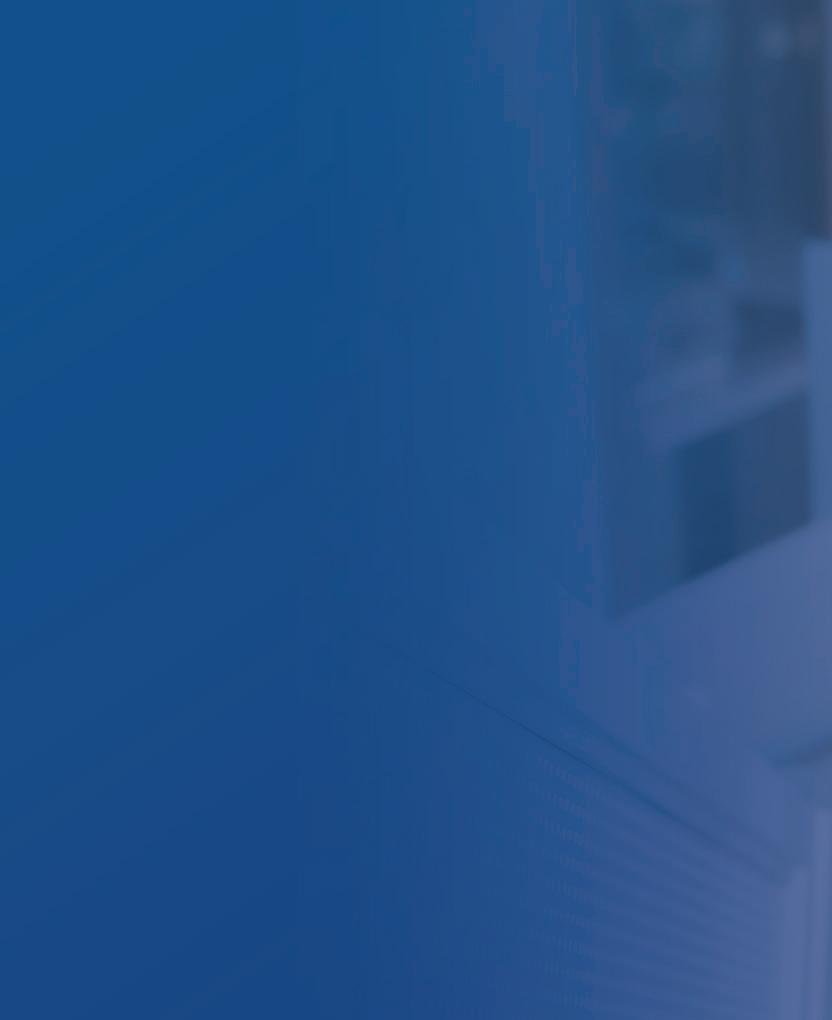
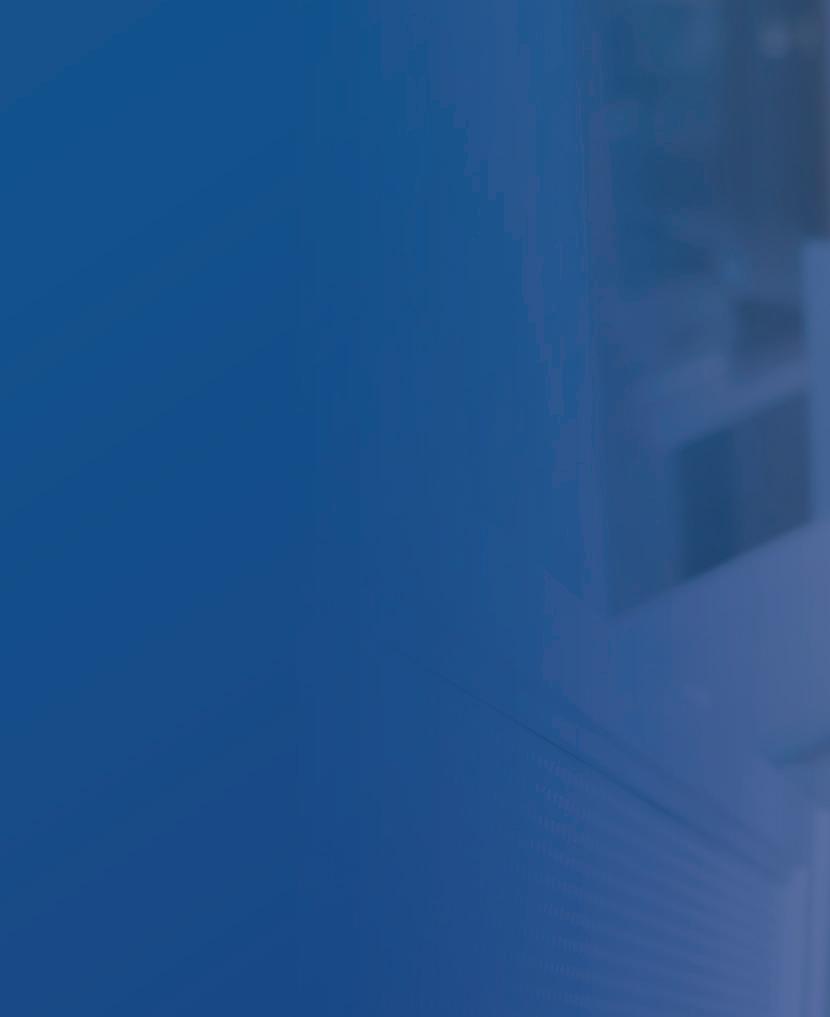
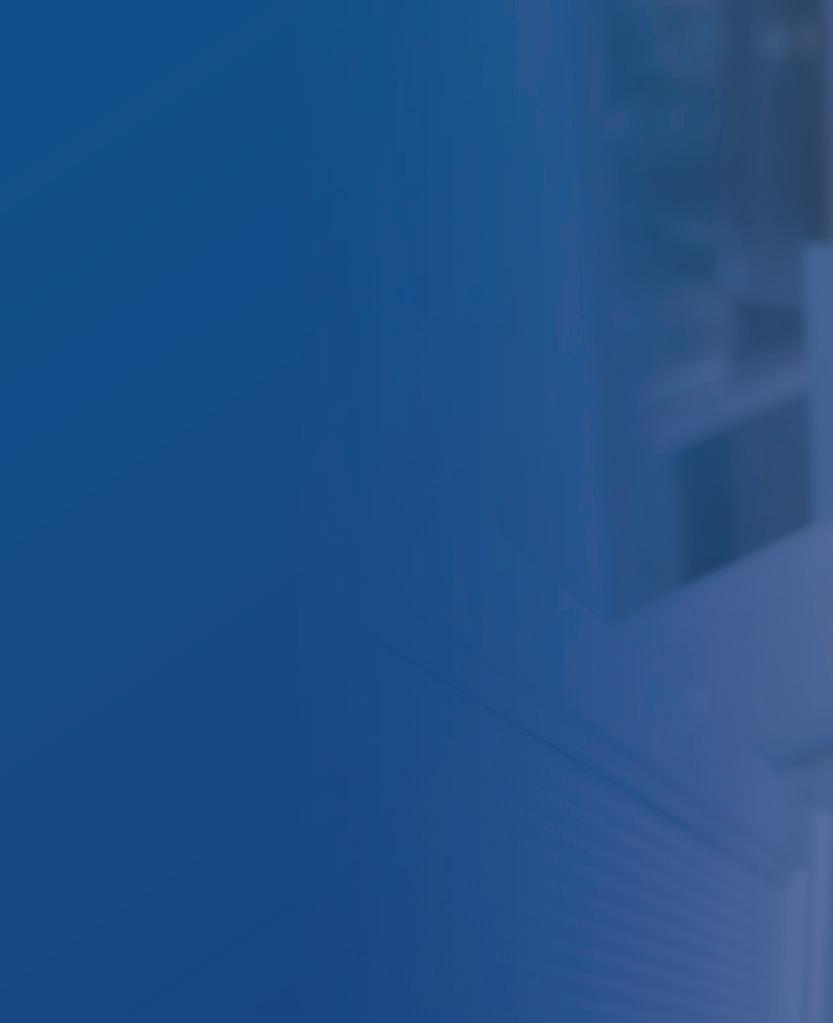
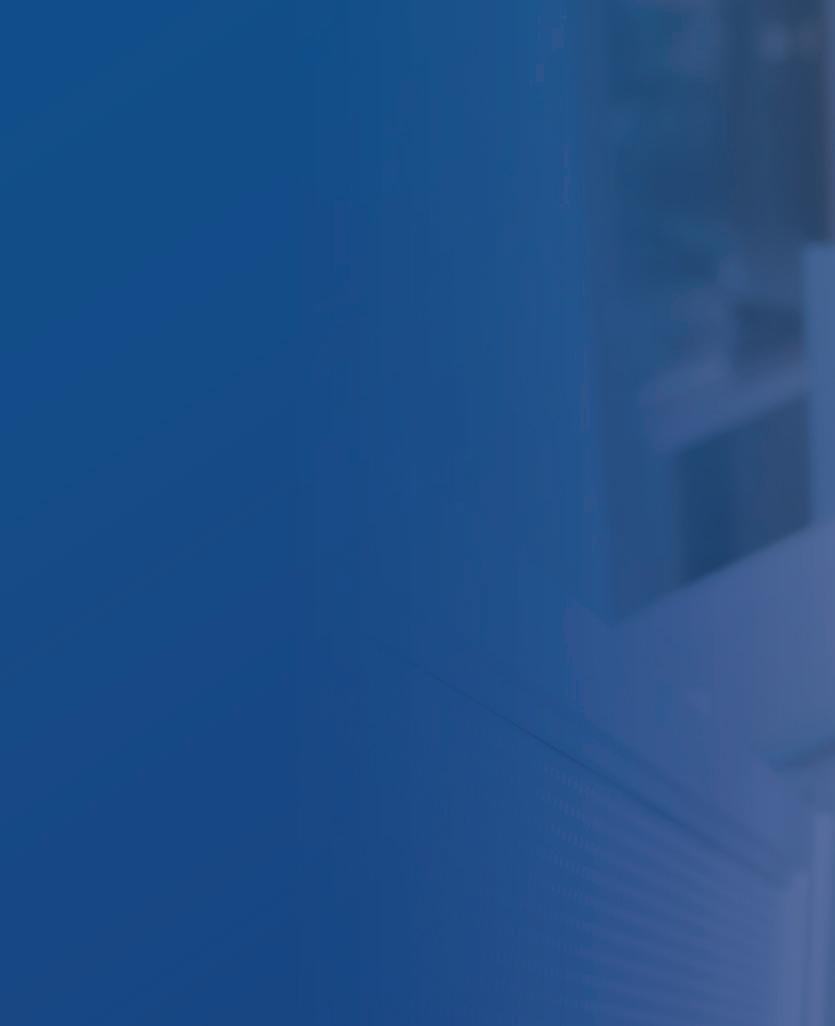
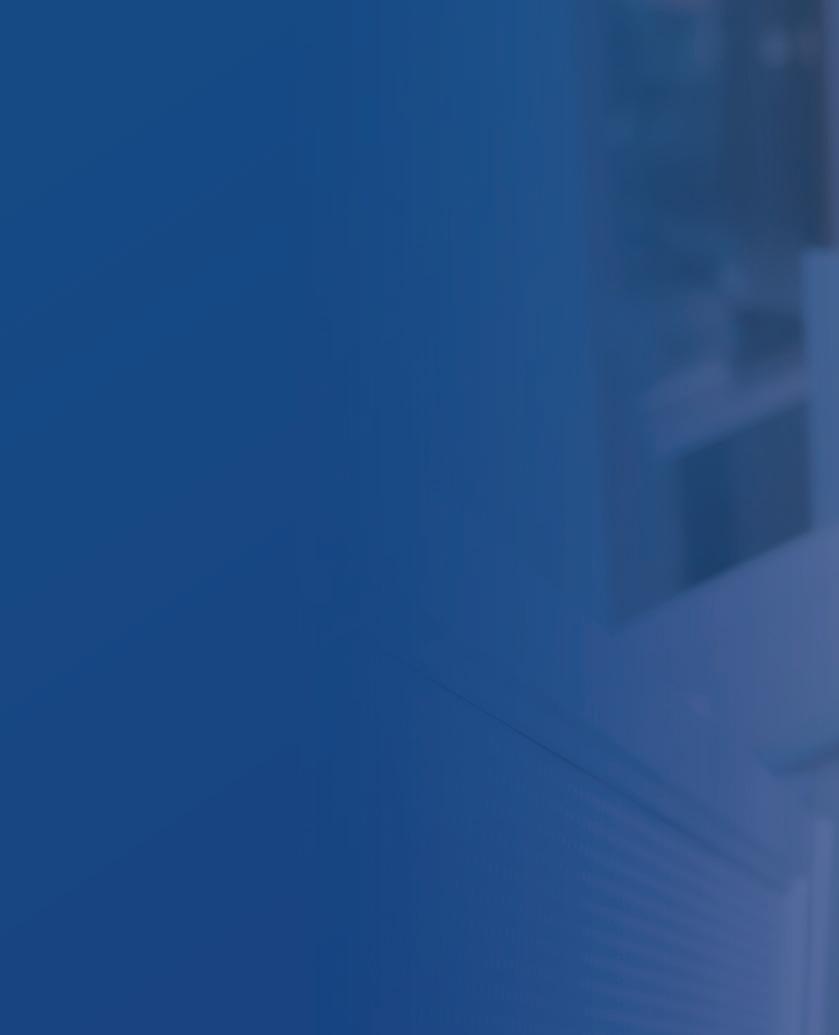
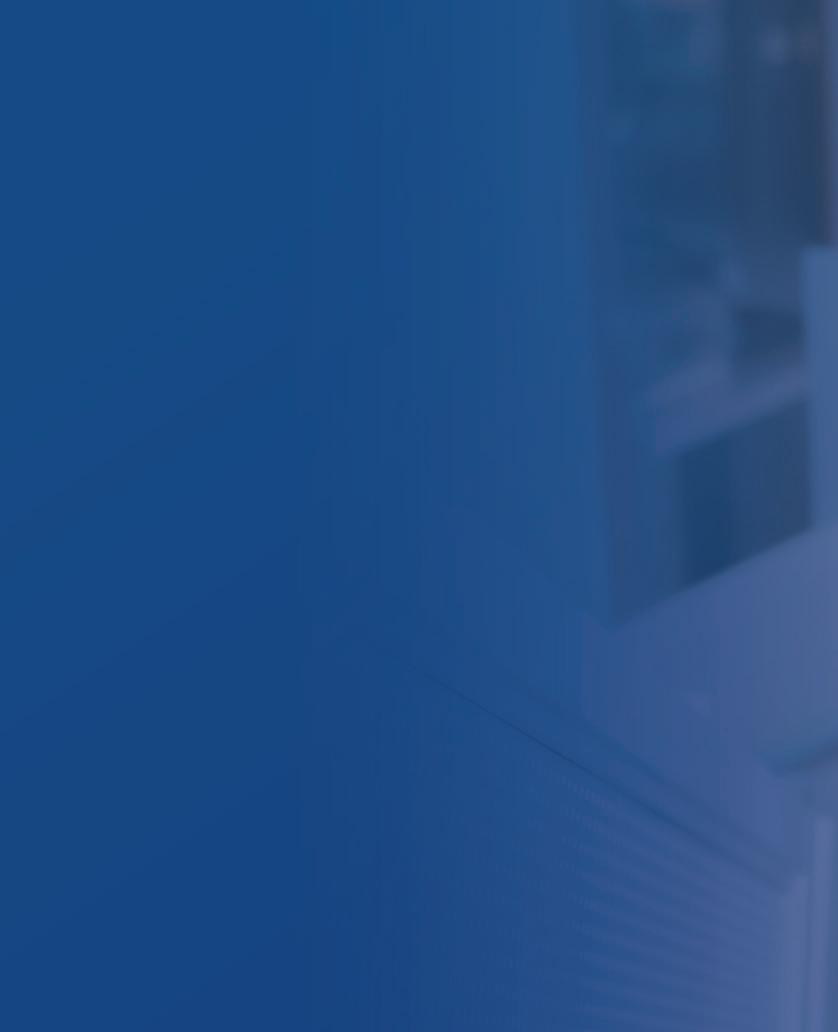
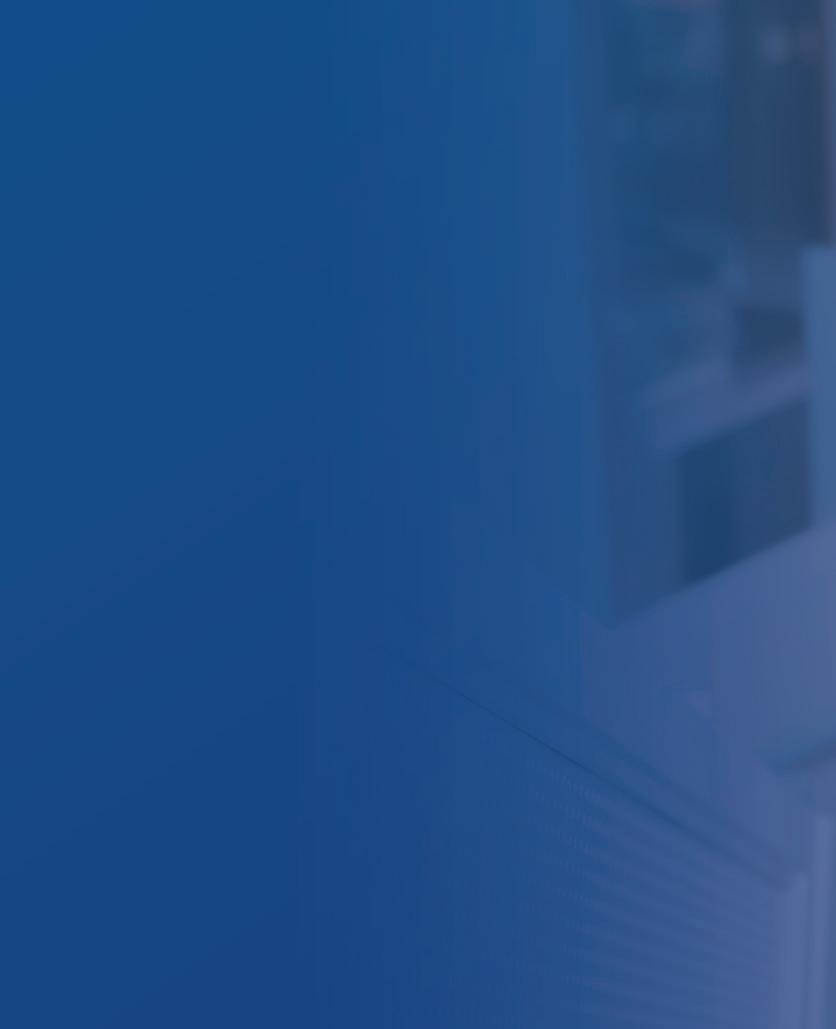
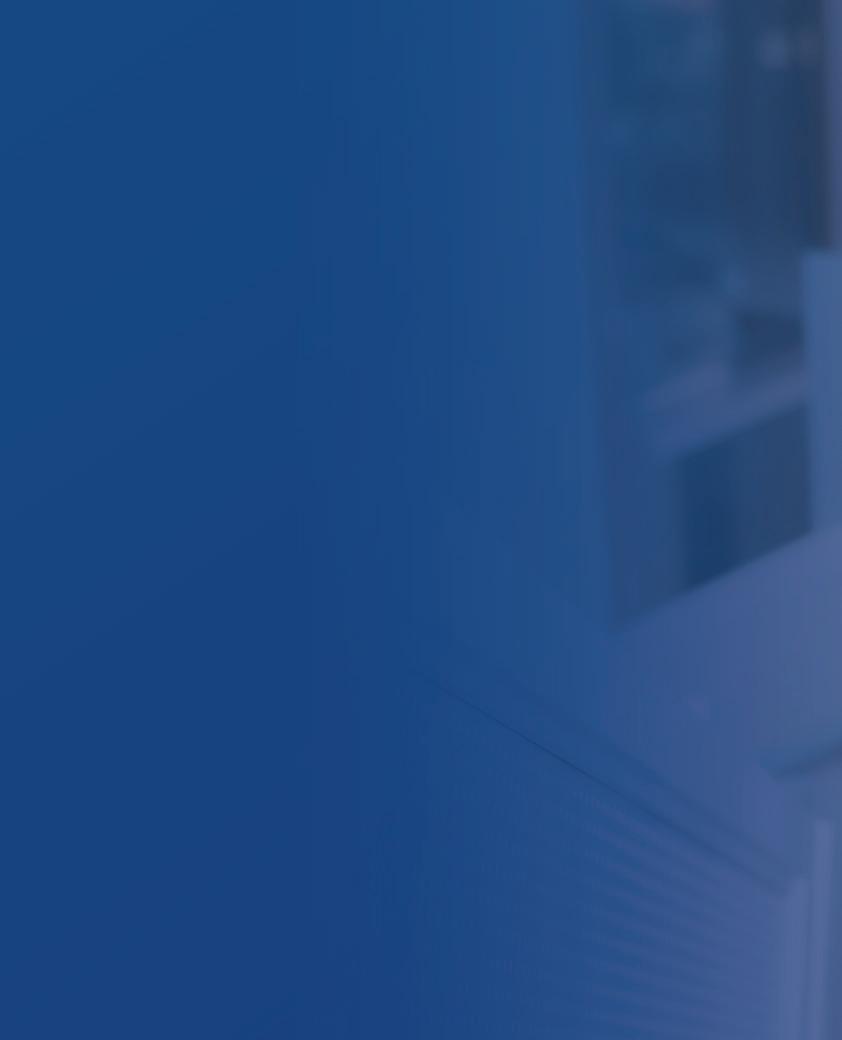
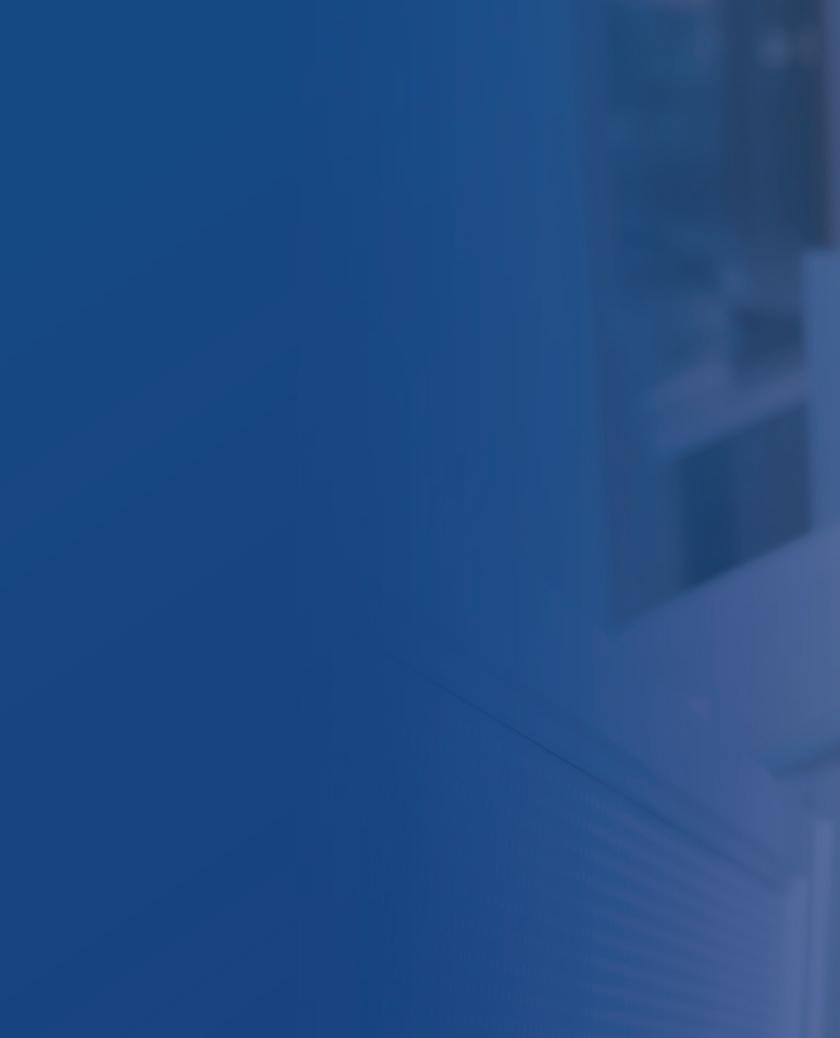

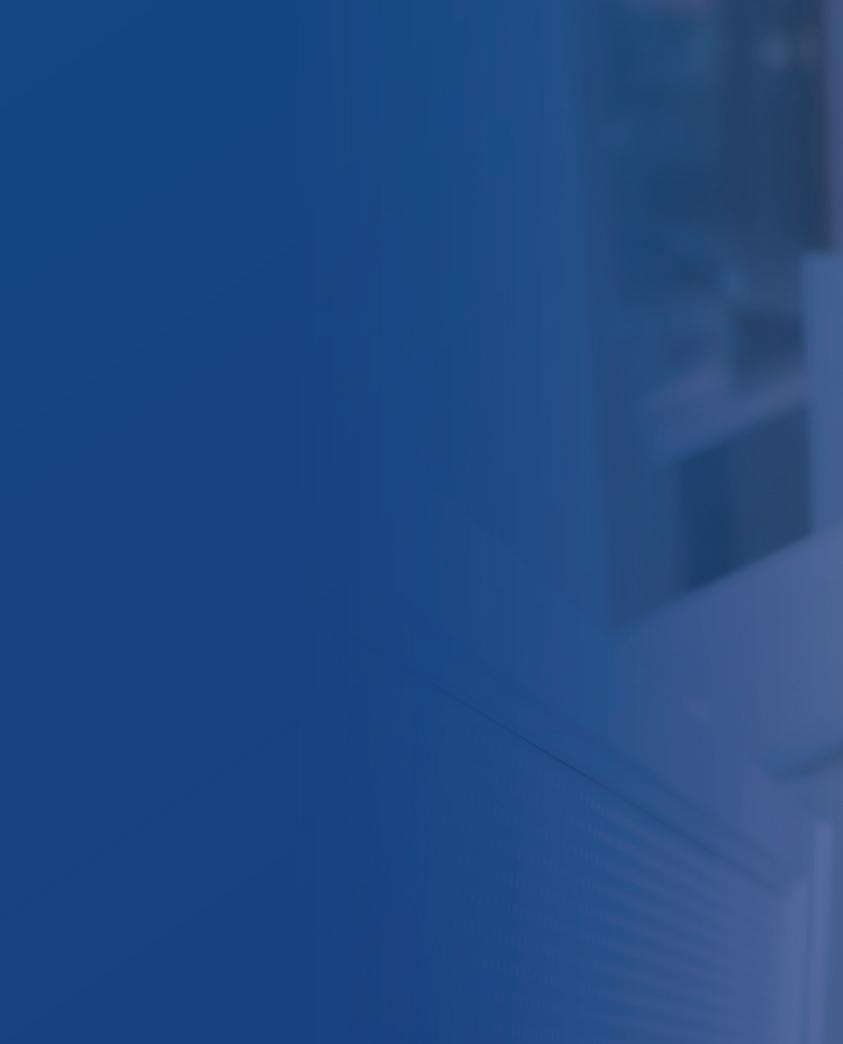
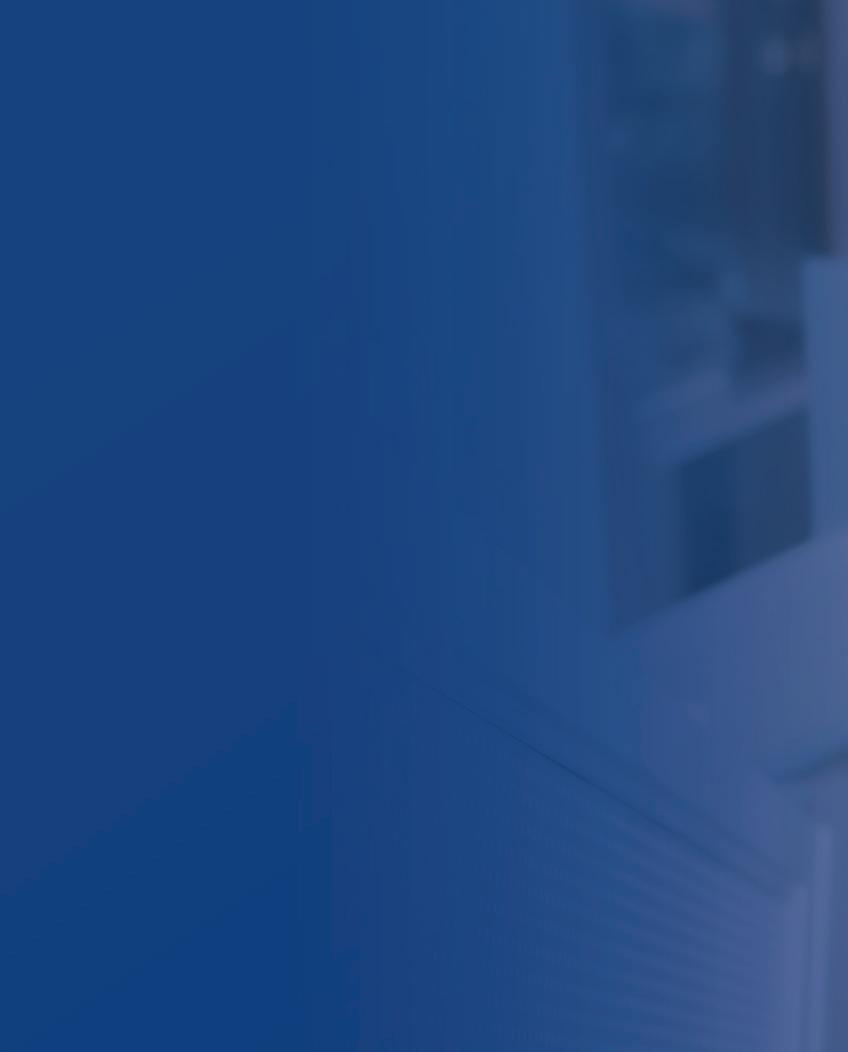


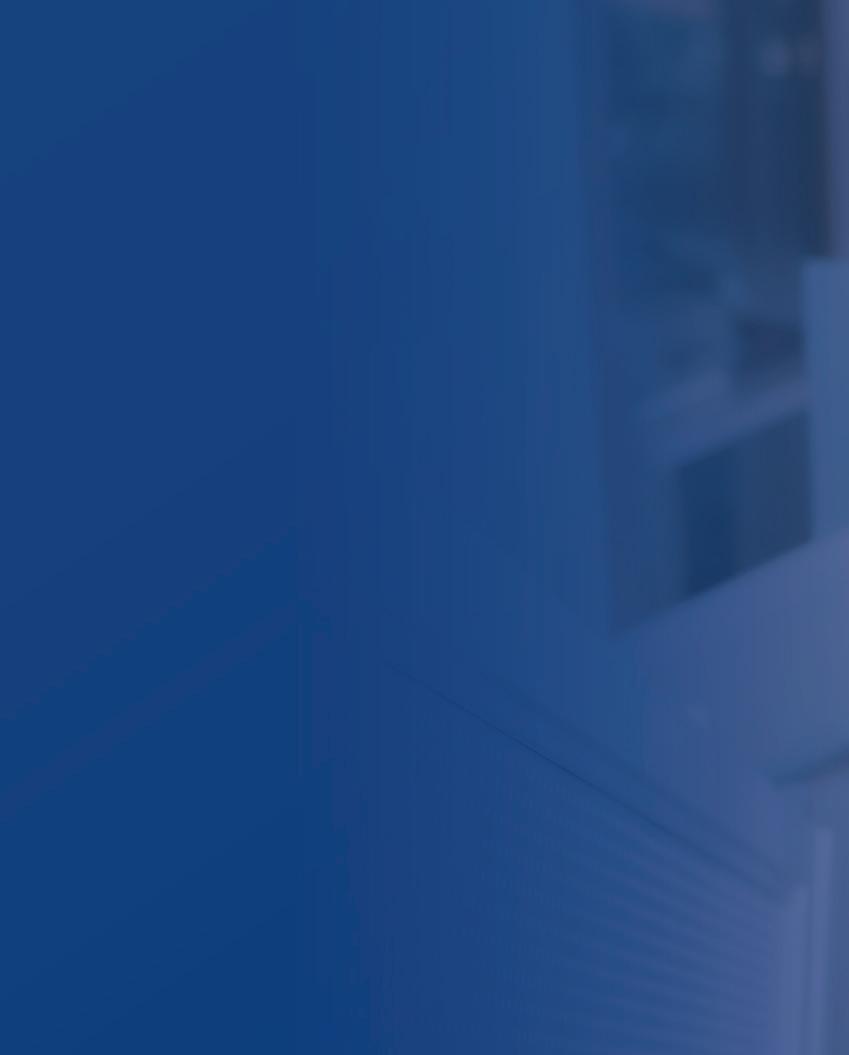
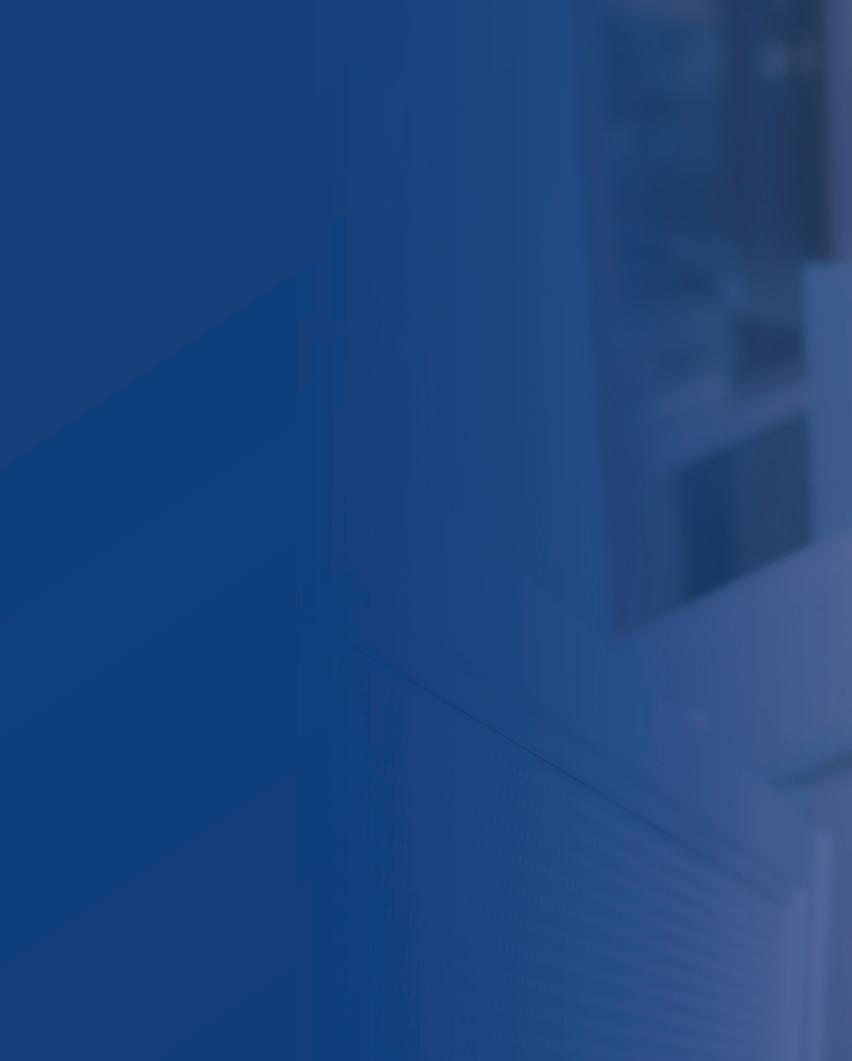
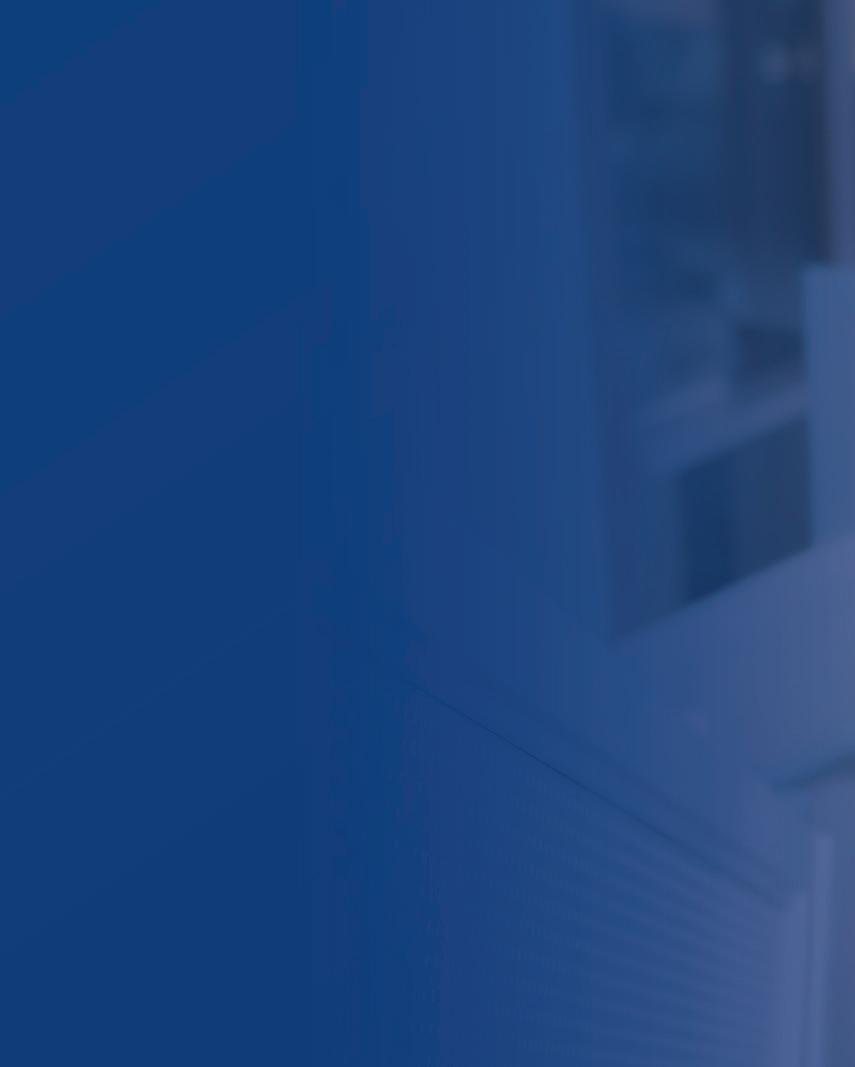
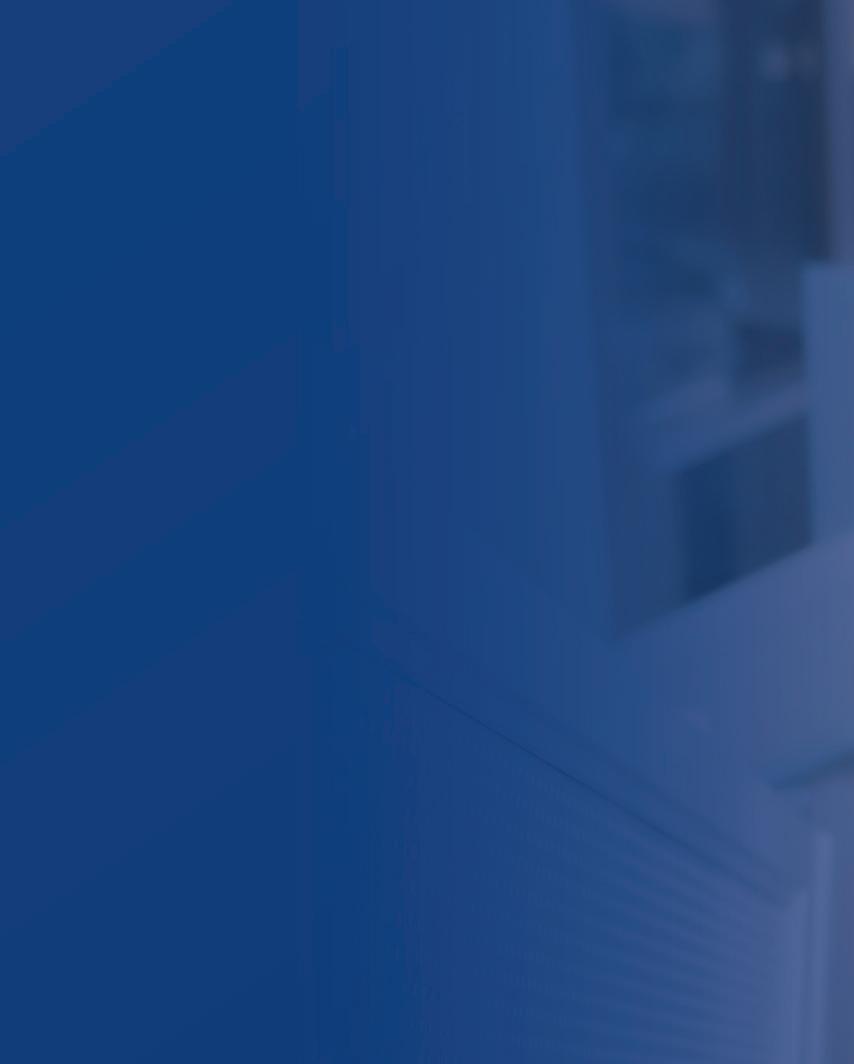
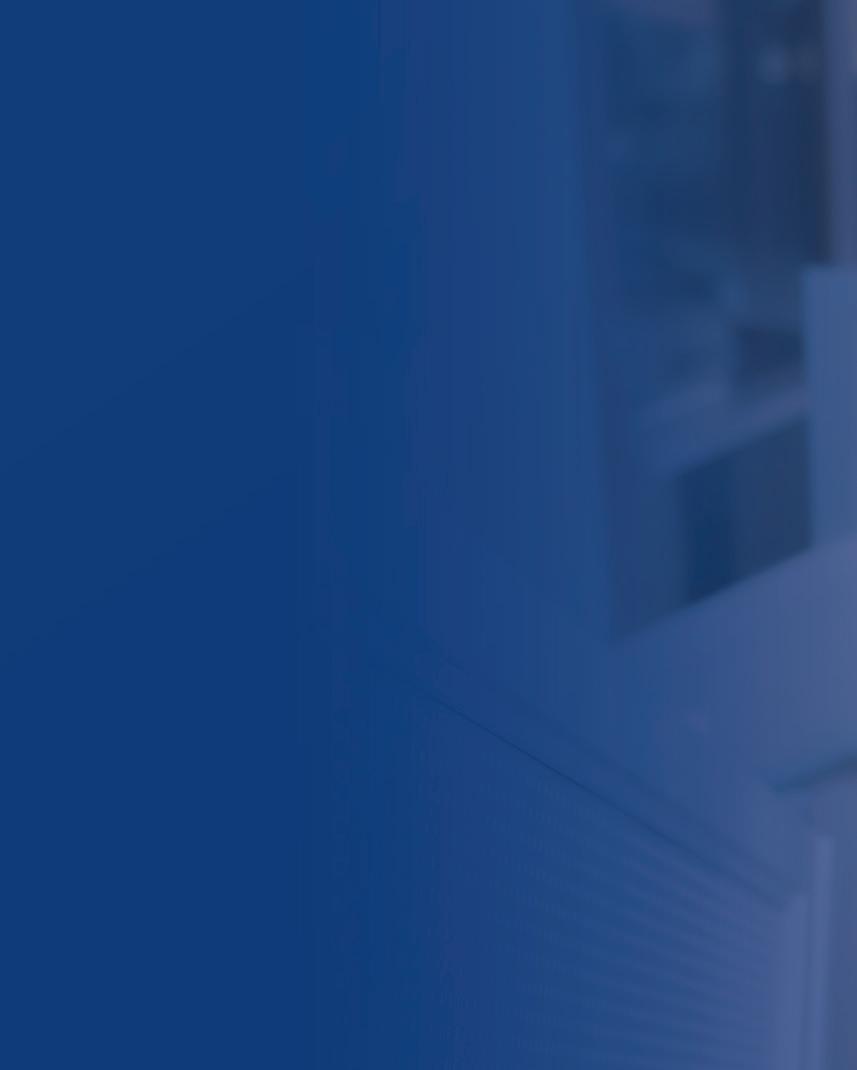
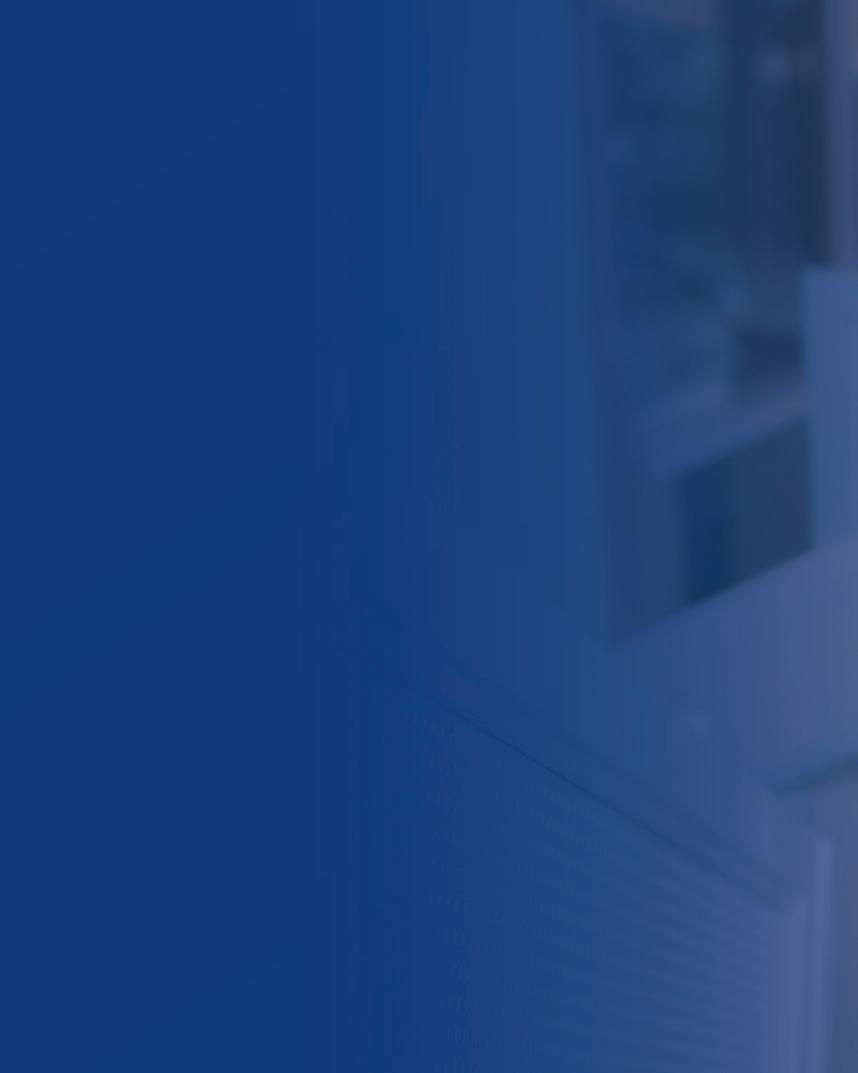
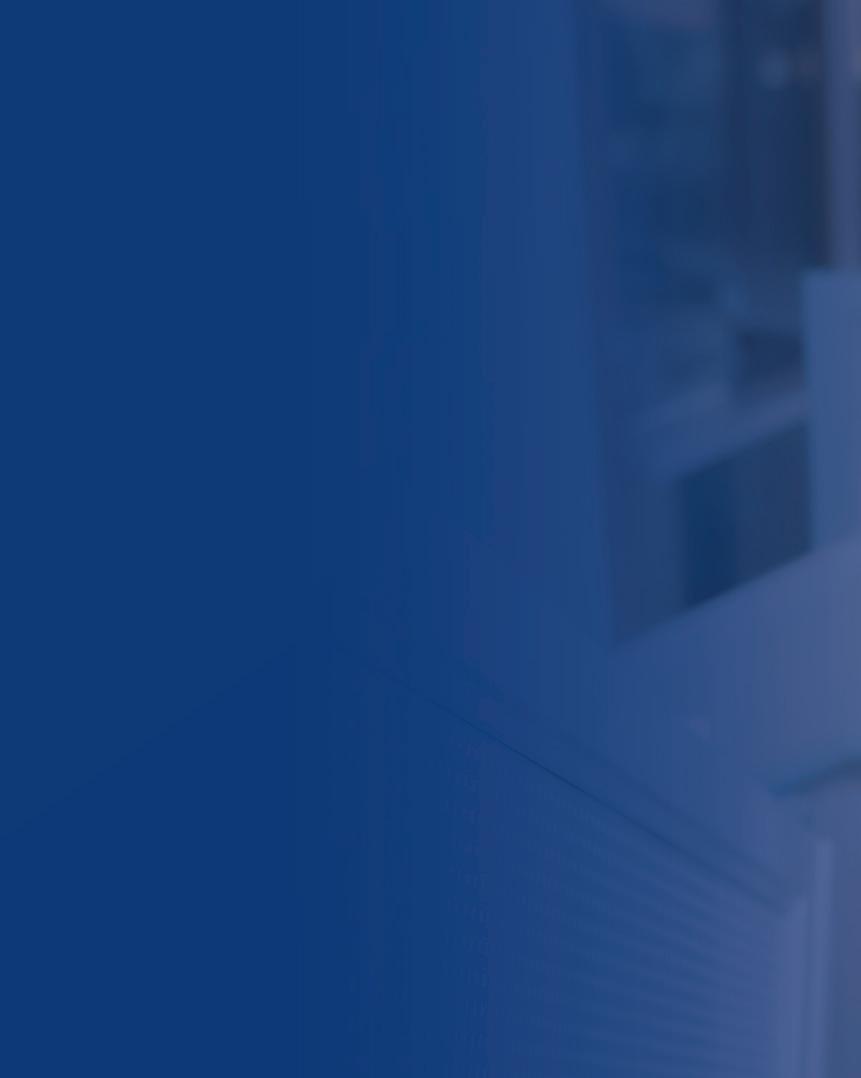
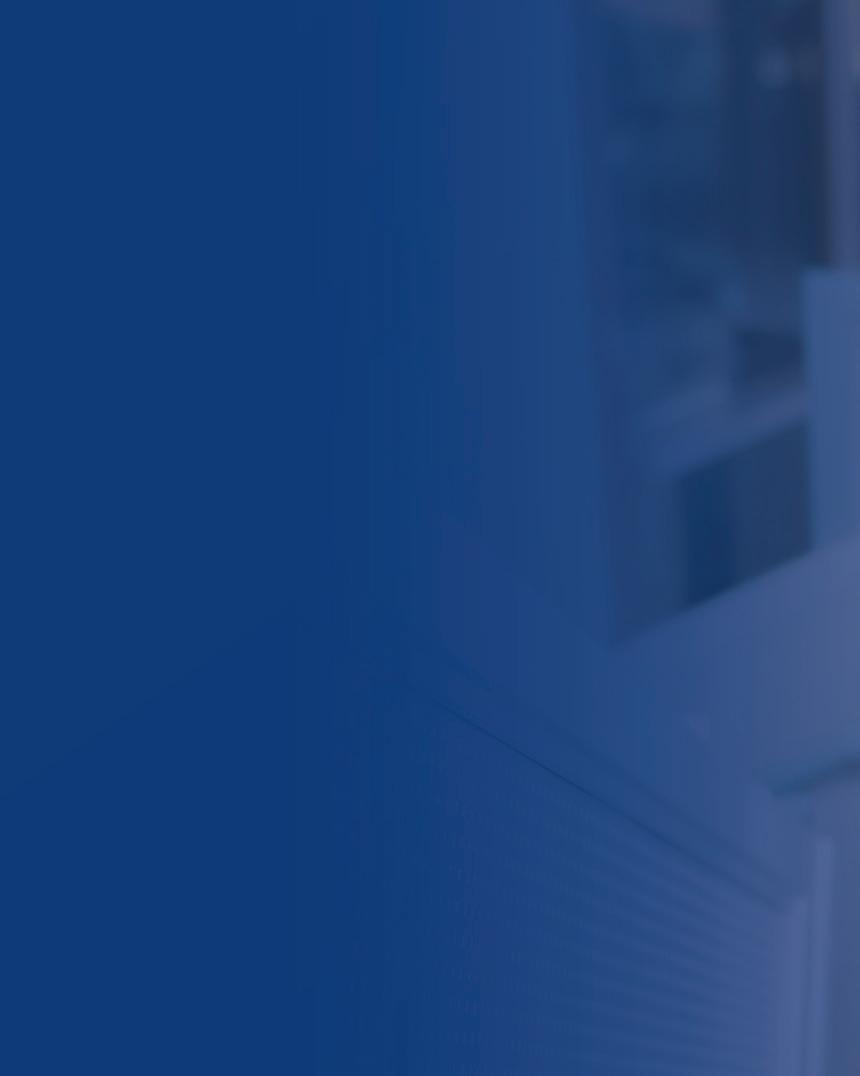

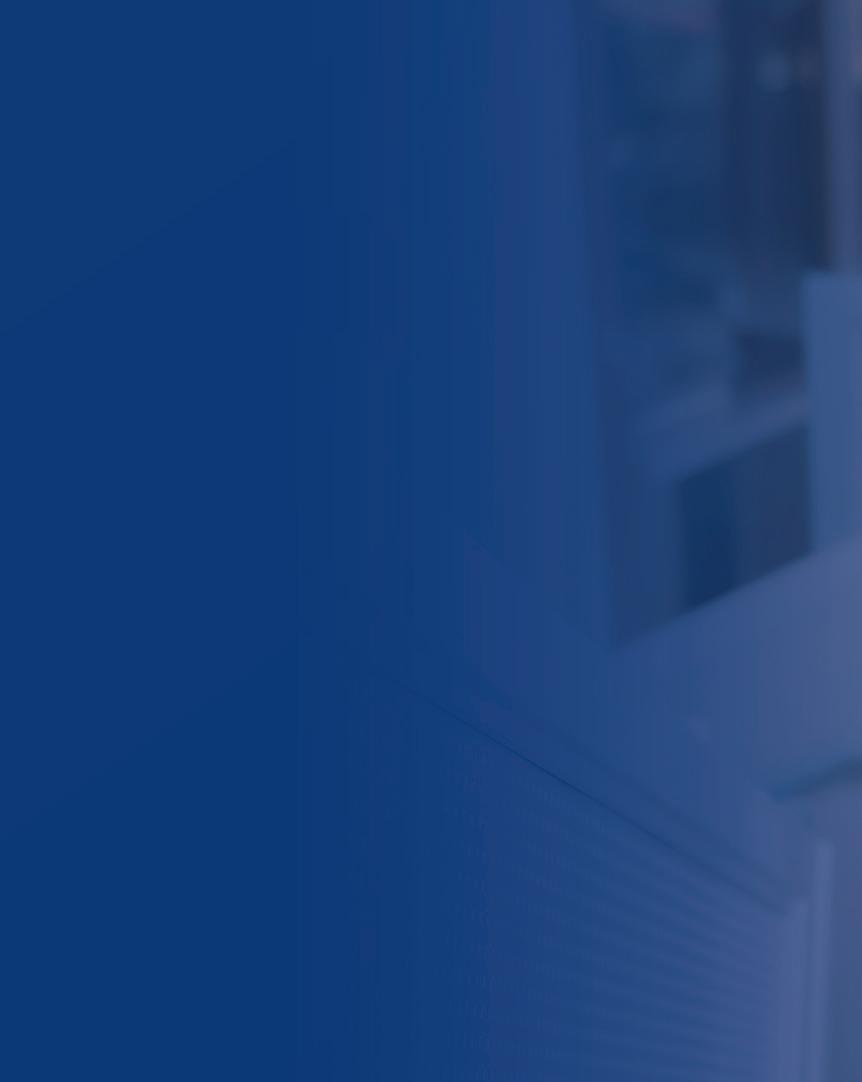
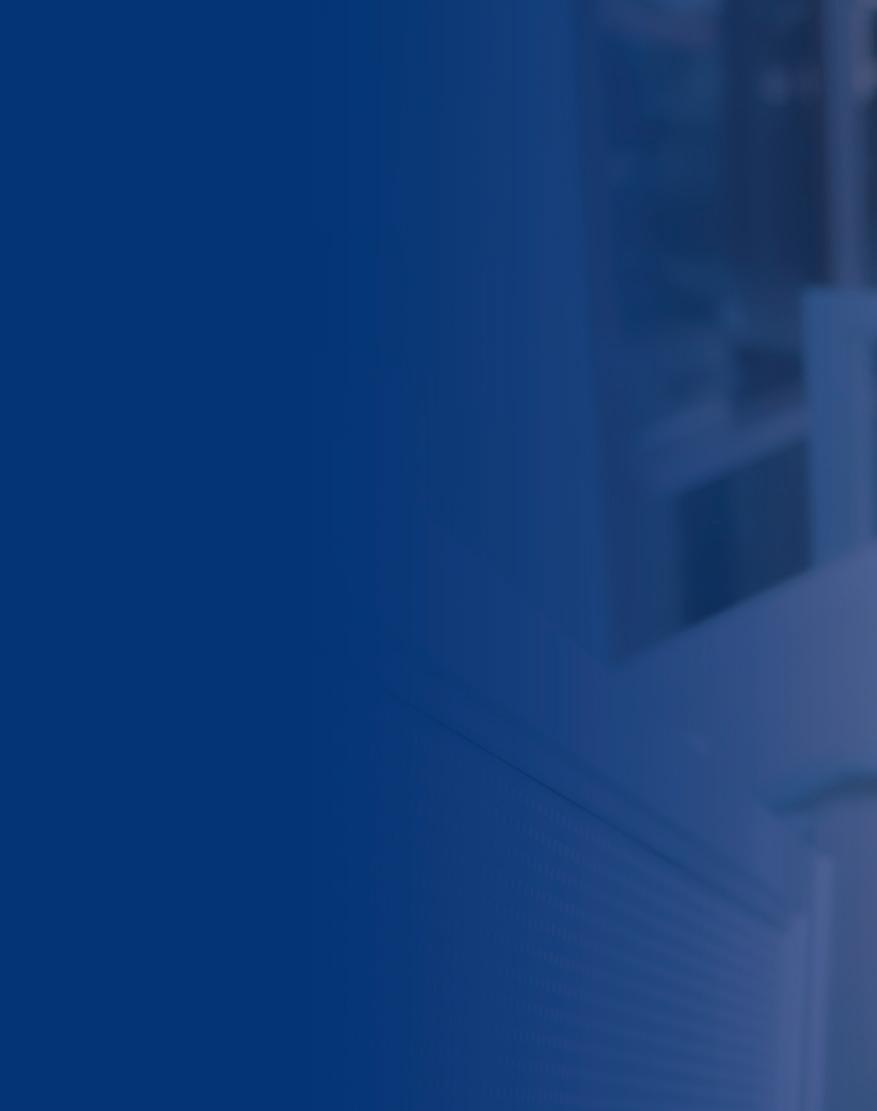
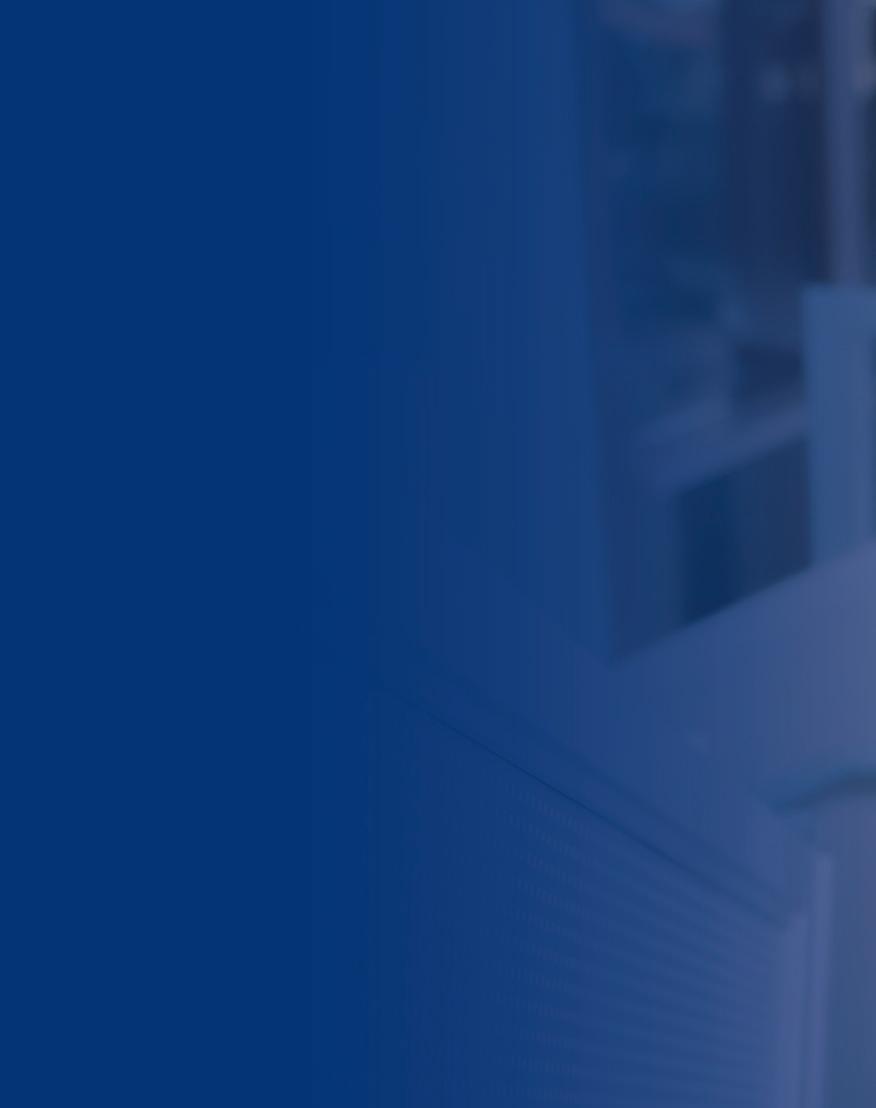
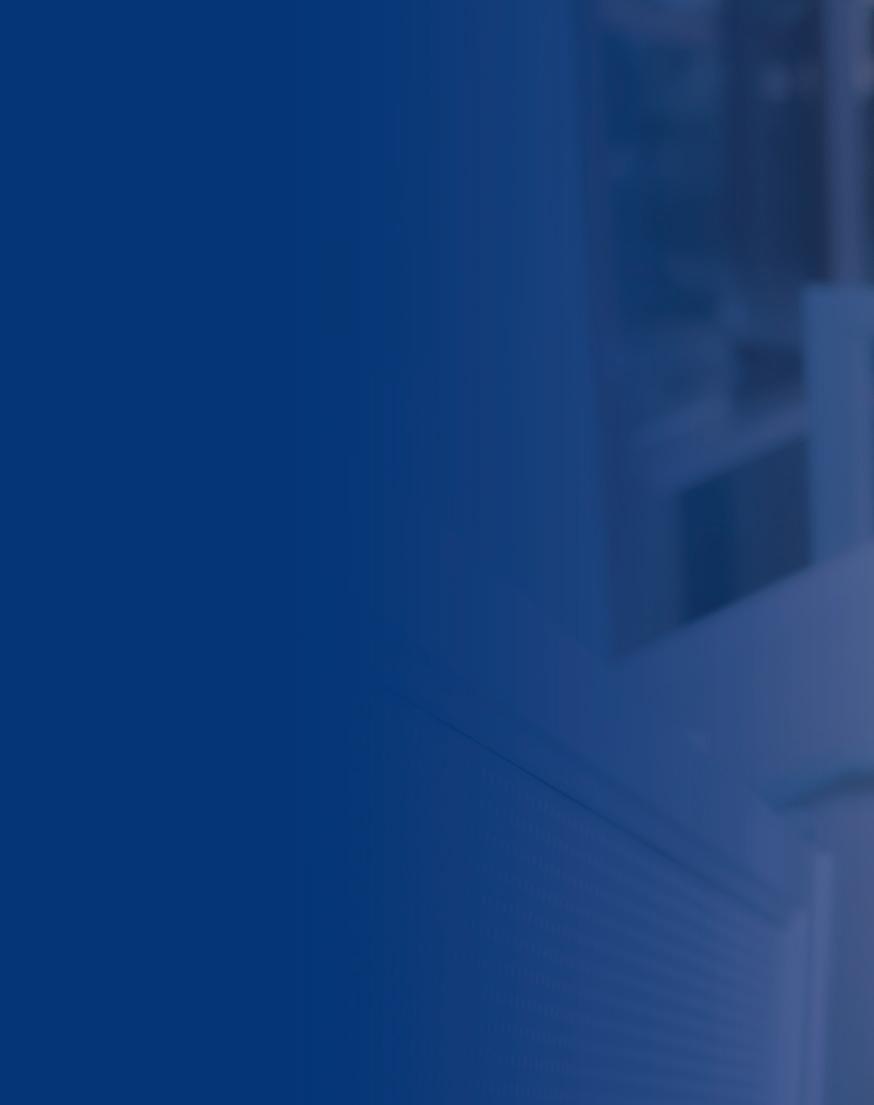
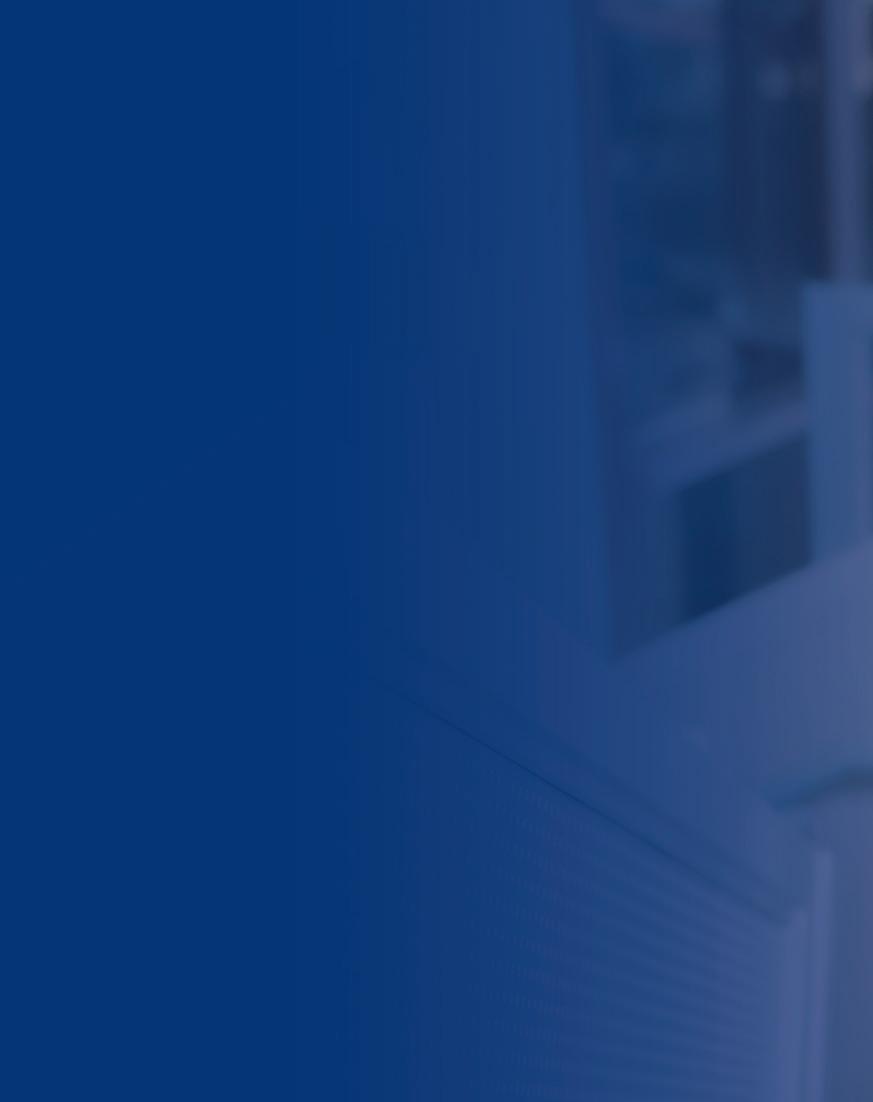
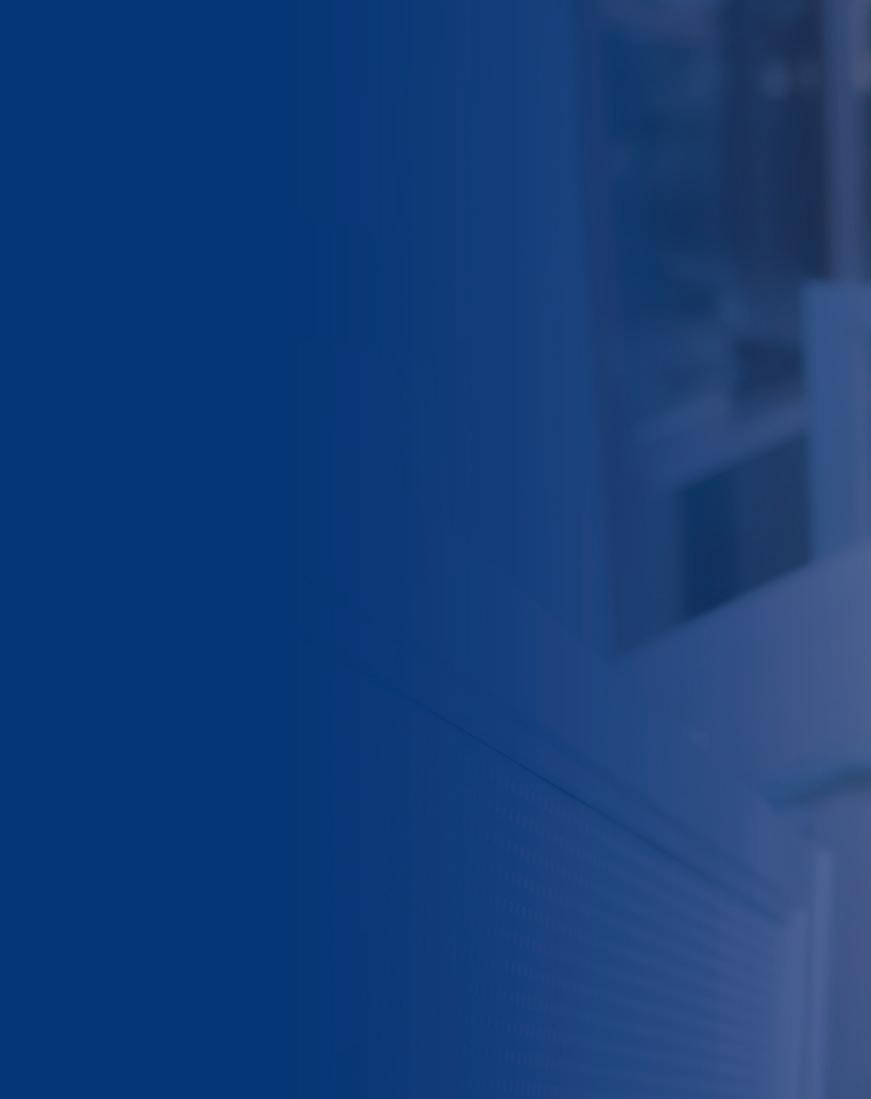
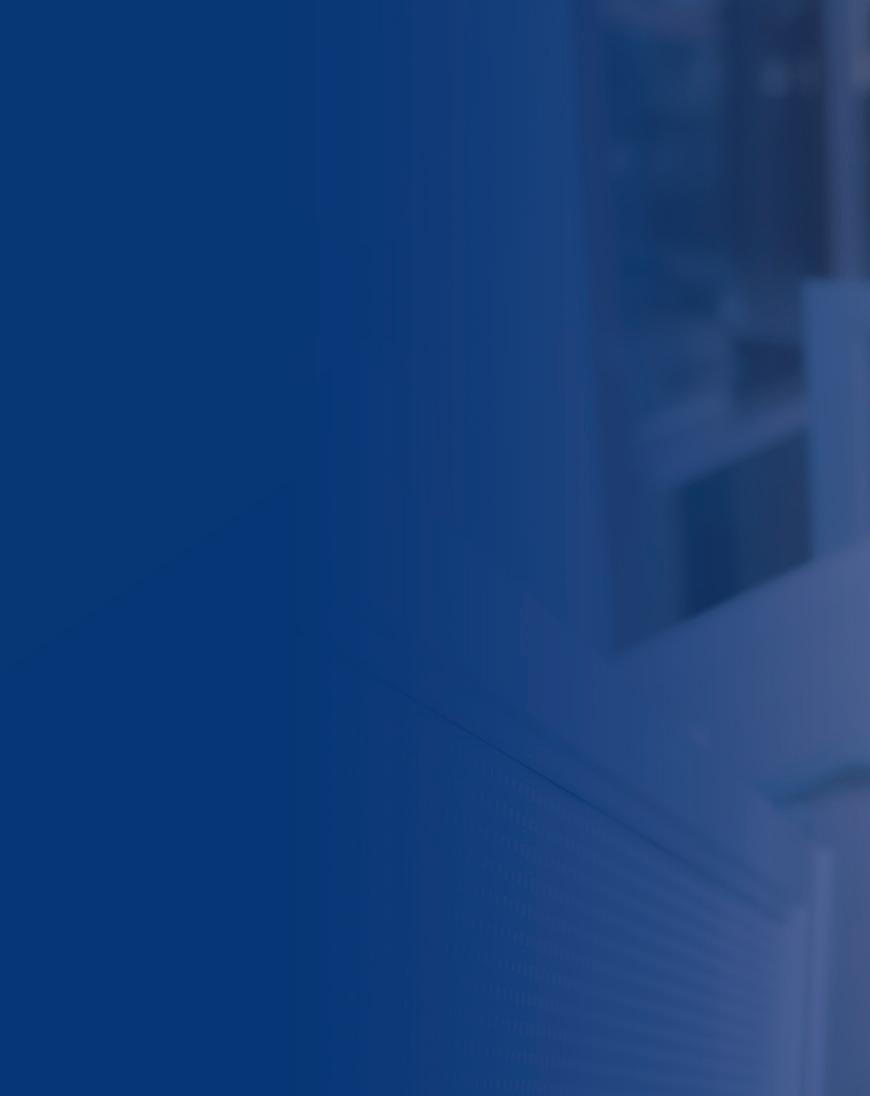
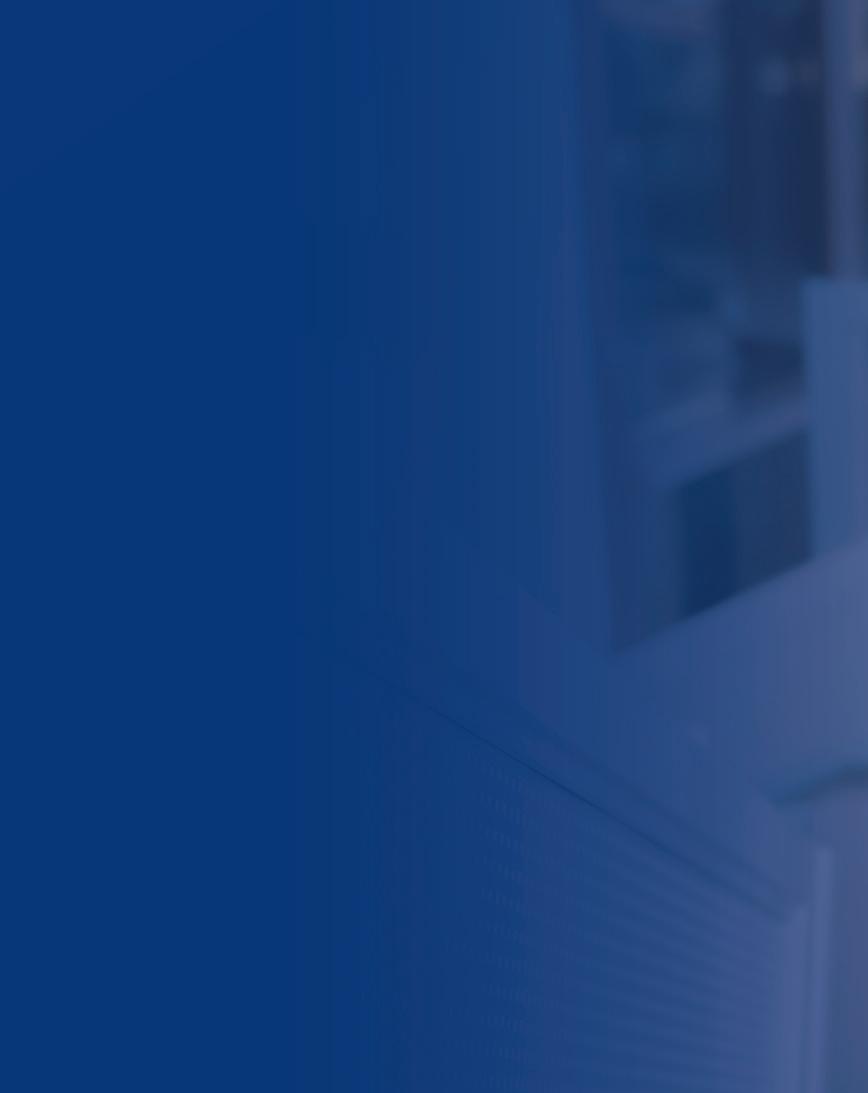
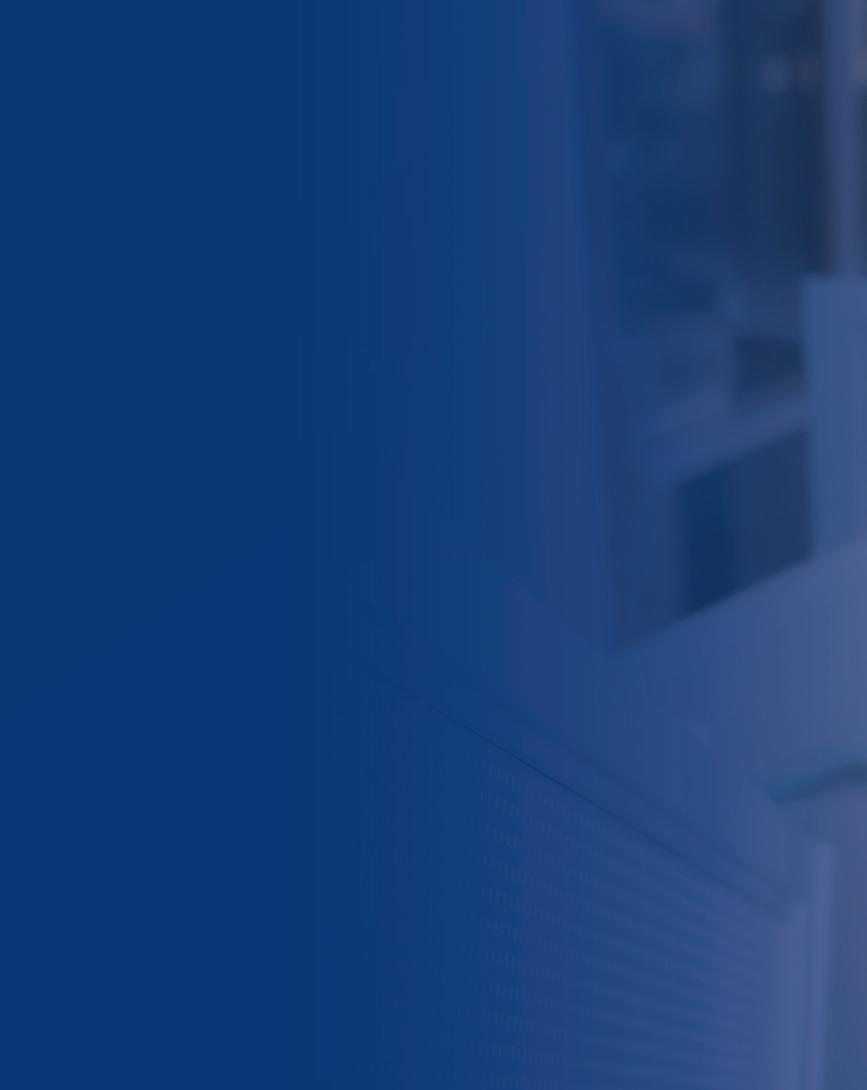
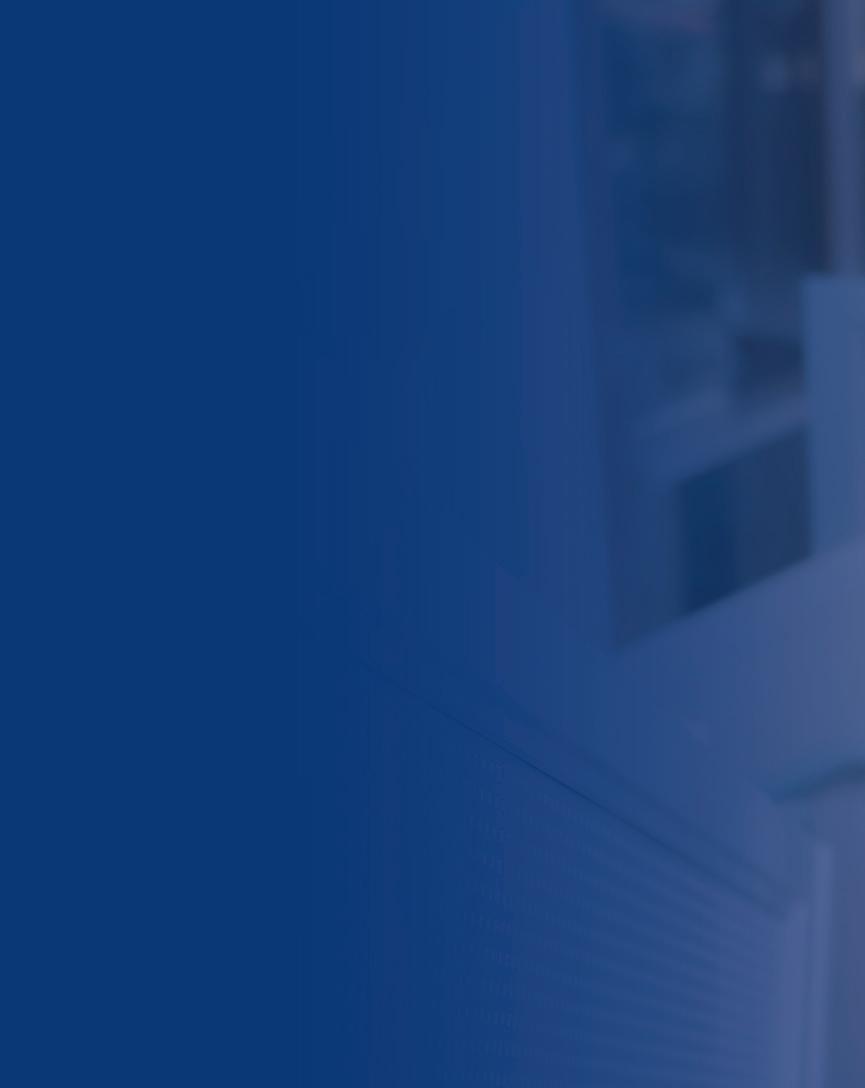
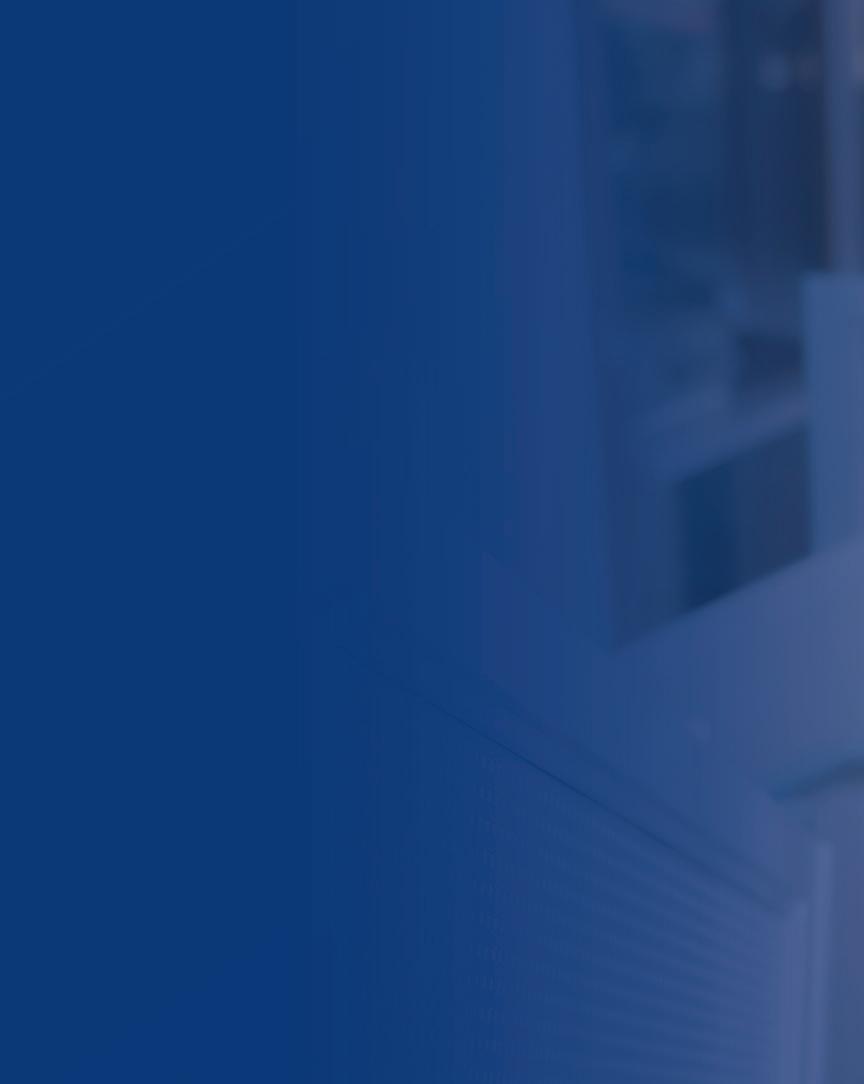





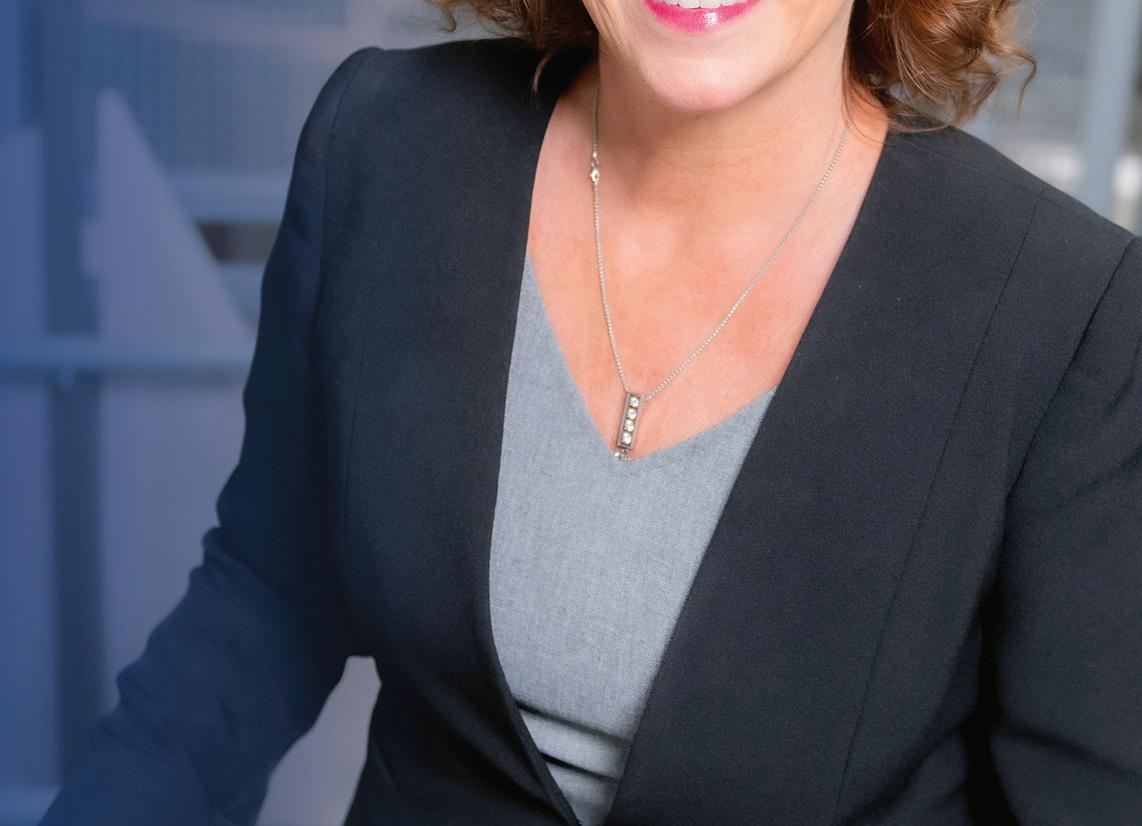

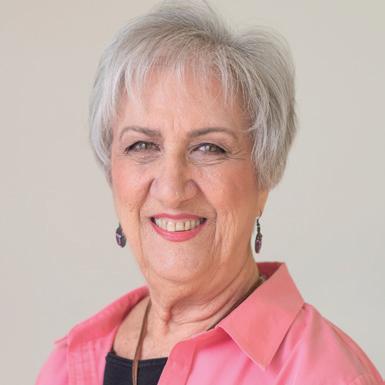
Editor, In Business Magazine
RaeAnne Marsh became editorial director of Phoenix-based InMedia Company in 2010 and helped launch Valley-wide business resource In Business Magazine. Her journalism career began more than 20 years ago, when she left California and 12 years of teaching to transplant in Phoenix’s vibrant entrepreneurial environment, and includes incorporating her own business, Grammar & Glitz, Inc., to work with business and media clients nationwide.
Holding the magazine to strong editorial standards, she says, “New businesses are founded, out-of-staters bring new strengths, established businesses evolve and expand — all of which contributes to the dynamic vitality that I see as the mission of In Business Magazine to be the voice of and vehicle to nurture, in each monthly edition. It is my challenge to ensure each edition is packed with relevant information on a broad spectrum of issues, aimed at a readership that runs the gamut from entrepreneurial startup to major corporation.” Marsh was awarded 2024 Small Business Journalist of the Year from the U.S. Small Business Administration, Arizona District.
Guest columns are feature articles presented as a special, limited series as well as regular, ongoing series in In Business Magazine.

Guest Columnist – Social Impact
A long time corporate social responsibility practitioner, Tyler Butler is known for her expertise in creating, launching and developing successful social impact programs. Her commitment to rallying people together to make a positive difference has created sustainable signature programs empowering people to give back in a myriad of ways globally. Butler operates under the ethos of “each one teach one,” and so her contributions to In Business Magazine provide her with an outlet to share the best of what companies are doing to aid humanity. Butler looks to shed light on good corporate citizens and share stories about the magic they are creating through their generous outreach efforts.
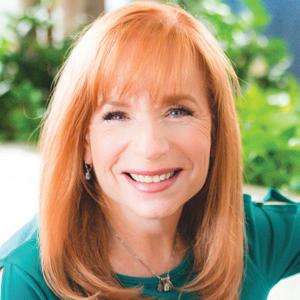
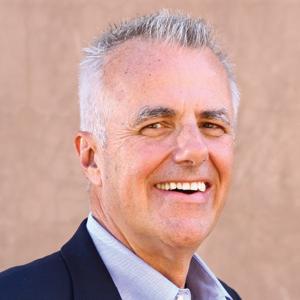
Guest Columnist – Resilience
Kathleen Gramzay, LMT, is an entrepreneur, body/mind resilience expert, speaker, author, and founder of Kinessage LLC. The Kinessage® methods are taught nationally to transform stress, chronic tension and pain, and increase mental resilience and long-term health for greater well-being and sustainable success. Her programs empower leaders and teams to be present, think more clearly and work more productively, confidently and collaboratively.
Guest Columnist – Capacity
Bruce Weber sees In Business Magazine as a valuable forum for topics relevant to our business and nonprofit community. “I am deeply interested in organizational capacity and what makes organizations successful and impactful in the work they do. In my work in the community for more than 16 years, I have worked with all sizes of organizations and leaders in helping their businesses grow and expand their impact. My previous careers with Microsoft and Hewlett Packard involved working with business integration partners to design strategies to engage new markets. In today’s complex world, I enjoy exploring the possibilities and opportunities that change can bring.”
This month’s contributors
Dean Freeman ihas more than 40 years of experience in the semiconductor industry. (Semi Insights, page 20)
Nicole Neumarker has more than 20 years of enterprise software experience. (HR, page 38)
Kyle McMillian 18-plus years with UMB Bank has been primarily in commercial lending in Arizona. (Economy, page 40)
Attorney Andrea Marconi serves as chair of Business Litigation at Fennemore. (Legal, page 42)
Claire MacCallum is an attorney with Fennemore, practicing in business litigation. (Legal, page 42)
Samantha McIntosh is the content manager at Valley of the Sun United Way. (Nonprofit, page 48)
Holly Rollo is CEO of Surge Strategies, a strategic marketing advisory firm helping B2B software companies. (Roundtable, page 70)
Publisher Rick McCartney
Editor RaeAnne Marsh
Web Editor Jake Kless
Graphic Design Matt Fischer
CONTRIBUTING WRITERS
Tyler Butler
Jeff Emmons
Dean Freeman
Kathleen Gramzay
Mike Hunger
Viadotas Juknys
Dan Keller
Ryan Kirane
Nicole Maas
Claire MacCallum
Andrea Marconi
Samantha McIntosh
Kyle McMillian
Holly Morgan
Nicole Neumarker
Daniel Parolek
Stephanie Quinn
Holly Rollo Ed Sayed
Macey Wolfer
ADVERTISING
Operations Louise Ferrari
Business Development Raegen Ramsdell
Louise Ferrari
Cami Shore
Events Amy Corben
WTSM TV STUDIO
General Manager Chris Weir
More: Visit your one-stop resource for everything business at inbusinessphx.com. For a full monthly calendar of business-related events, please visit our website.
Inform Us: Send press releases and your editorial ideas to editor@inbusinessphx.com
President & CEO Rick McCartney
Editorial Director RaeAnne Marsh
Financial Manager Tom Beyer
Office Manager Allie Jones
Accounting Manager Todd Hagen
Corporate Office InMedia Company
45 W. Jefferson Street Phoenix, AZ 85003
T: (480) 588-9505
info@inmediacompany.com www.inmediacompany.com
InMedia Company, 45 W. Jefferson Street, Phoenix, AZ 85003. To subscribe to In Business Magazine, please send check or money order for one-year subscription of $24.95 to InMedia Company, 45 W. Jefferson Street, Phoenix, AZ 85003 or visit inbusinessphx.com.
website or brochure. InMedia accepts no responsibility for unsolicited manuscripts, photographs or other artwork. Submissions will not be returned unless accompanied by a self-addressed, stamped envelope. InMedia Company, LLC reserves the right to refuse certain advertising and is not liable for advertisers’ claims and/or errors. The opinions expressed herein are exclusively those of the writers and do not necessarily reflect the position of InMedia. InMedia Company considers its sources reliable and verifies as much data as possible, although reporting inaccuracies can occur; consequently, readers using this information do so at their own risk. Each business opportunity and/or investment inherently contains certain risks, and it is suggested that the prospective investors consult their attorney and/or financial professional. ©2025 InMedia Company, LLC. All rights reserved. No part of this magazine may be reproduced or transmitted in any form or by any means without written permission by any means without written permission by the publisher.


Goodwill of Central and Northern Arizona turns donations into possibilities by providing no-cost services to more than 30,00 Arizonans annually that help them build a better economic future.
Your purchases and donations help support local, no-cost career services, education, sustainability efforts and housing solutions so Arizonans can build better futures for themselves and their families.
Goodwill of Central and Northern Arizona is a 501(c)(3) non-profit organization dedicated to ending poverty through the power of work! GoodwillAZ.org















In Business Magazine is a collaboration of many business organizations and entities throughout the metropolitan Phoenix area and Arizona. Our mission is to inform and energize business in this community by communicating content that will build business and enrich the economic picture for all of us vested in commerce.
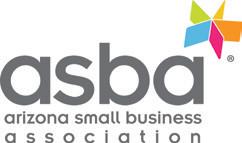
Debbie Hann, Interim CEO Arizona Small Business Association Central Office (602) 306-4000 www.asba.com
Steven G. Zylstra, President & CEO Arizona Technology Council One Renaissance Square (602) 343-8324 www.aztechcouncil.org
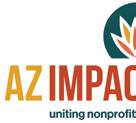

Kristen Wilson, CEO AZ Impact for Good (602) 279-2966 www.azimpactforgood.org
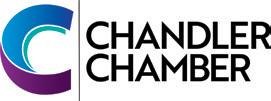
Terri Kimble, President & CEO Chandler Chamber of Commerce (480) 963-4571 www.chandlerchamber.com
Tanaha Hairston, President NAWBO Phoenix Metro Chapter (480) 289-5768 www.nawbophx.org
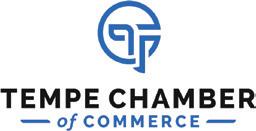
Robin Arredondo-Savage, President & CEO
Tempe Chamber of Commerce (480) 967-7891 www.tempechamber.org
Our Partner Organizations are vested business organizations focused on building and improving business in the Valley or throughout Arizona. As Partners, each will receive three insert publications each year to showcase all that they are doing for business and businesspeople within our community. We encourage you to join these and other organizations to better your business opportunities. The members of these and other Associate Partner Organizations receive a subscription to In Business Magazine each month. For more information on becoming an Associate Partner, please contact our publisher at info@inbusinessphx.com.
Ahwatukee Foothills Chamber of Commerce ahwatukeechamber.com
Arizona Chamber of Commerce & Industry azchamber.com
Arizona Hispanic Chamber of Commerce azhcc.com
The Black Chamber of Arizona phoenixblackchamber.com
Economic Club of Phoenix econclubphx.org
Glendale Chamber of Commerce glendaleazchamber.org
Greater Phoenix Chamber of Commerce phoenixchamber.com
Greater Phoenix Equality Chamber of Commerce gpglcc.org
Mesa Chamber of Commerce mesachamber.org
North Phoenix Chamber of Commerce northphoenixchamber.com
Peoria Chamber of Commerce peoriachamber.com
Phoenix Metro Chamber of Commerce phoenixmetrochamber.com
Scottsdale Area Chamber of Commerce scottsdalechamber.com
Scottsdale Coalition of Today and Tomorrow (SCOTT) scottnow.com
Surprise Regional Chamber of Commerce surpriseregionalchamber.com
WESTMARC westmarc.org
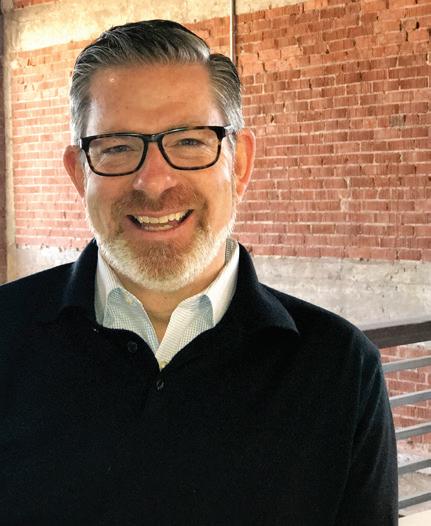
Rick McCartney is president and CEO of InMedia Company, a media technology company, and is responsible for producing many local, regional and national brands and media products. He is the publisher of In Business Magazine, which has been publishing in the Greater Phoenix area since 2010.
McCartney is a member of several nonprofit and for-profit boards and is involved with local and national organizations — all focused on economic development, children’s education, poverty and equity issues.
inbusinessphx.com
In spite of science telling us the universe is expanding, the world we live in seems to be getting smaller as we become increasingly interconnected. This is why we so appreciate the insights and expertise of the business leaders who speak so eloquently in the cover story in the following pages. As we make plans for 2025 in our own organizations, we can enjoy the benefit of understanding other forces impacting our economy.
As always, we work hard to better inform business owners on growing business and connecting to our business community. In an effort to look at what’s ahead for business in the many sectors that impact our companies, whether they are our direct industries or just have an effect on us economically, we sought out leaders who are in the know about what may be coming for us in 2025. This month’s cover story digs into some of those areas that will, we hope, give insight that will empower our businesses and bottom lines.
Semiconductors has been one of our biggest growth industries in recent years. Semiconductor manufacturing and businesses up and down its supply chain loom large in our local and statewide economy. What is the prognosis for this sector’s continued health? Dean Freeman takes a look at considerations around the semiconductor industry in Semi Insights feature “AI, Arizona Investments and the Uncertain Road Ahead.”
We know the future is going to be greatly impacted by AI. Nicole Neumarker explores how businesses can empower and uplift their employees in the feature article “How AI Can Help Future-proof the Workforce.” And “Combine Organizational Learning and AI-Specific Learning to Better Manage Uncertainty” in this month’s Technology section considers a few of the findings from Learning to Manage Uncertainty, With AI, a new report by MIT Sloan Management Review
Of course, the future isn’t all about AI. Holly Rollo, in her Roundtable feature “Future-Proofing Your Culture,” addresses the need for organizations to adapt to the generational shift in 2025 — and beyond. Daniel Parolek offers a view of a new approach to building a neighborhood — carless and specially adapted to our desert climate — in the CRE feature “Mixed-Use Neighborhood Designed Car-Free.” And in this month’s Briefs section, Macey Wolfer gives us “Looking Ahead: Arizona’s Cannabis Market in 2025.”
Other topics we address in this January edition of In Business Magazine span legal considerations of clickwrap agreements to healthcare costs to project management. We are committed to presenting a range of information each month to support and strengthen our business community.
This year’s Meetings & Conventions Guide is more robust and filled with venues, ideas and contacts to help make your 2025 events something to remember. We love our events and know how important it is to work with the best in promoting your company, message and/or services to others.
All of us at In Business Magazine, inbusinessphx.com, the In Business Dailies and In Business Weekly look forward to being a big part of your 2025! Looking forward to making 2025 a great year.
Sincerely,

Rick McCartney Publisher, In Business Magazine President & CEO, InMedia Company
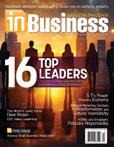
CONNECT WITH US: Story Ideas/PR: editor@ inbusinessphx.com
Business Events/ Connections: businessevents@ inbusinessphx.com
Marketing/Exposure: advertise@ inbusinessphx.com
Visit us online at www.inbusinessphx.com Let us know what you think of this issue of In Business Magazine. Email our publisher at feedback@inbusinessphx.com.
FEEDBACK QUESTION:
Let us know what you want to know from the Valley’s top business leaders. editor@inbusinessphx.com
For all past Feedbacks go online to inbusinessphx.com and see what Valley executives think on various business topics.
What AI application(s) have you adopted into your business operations over the past year? What are some of its benefi ts and/or what are some challenges you encountered?
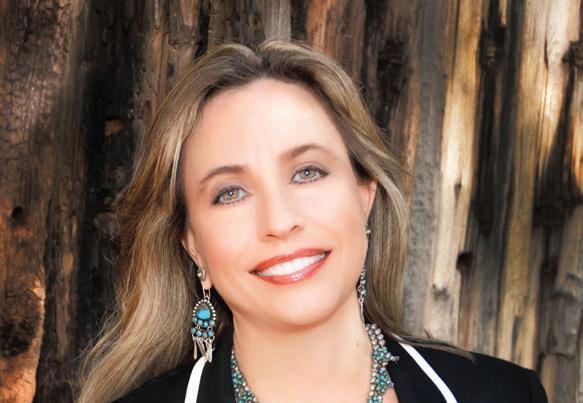
Chief Curator
Desert Caballeros Western Museum
Sector: Arts & Culture
I have utilized tools such as ChatGPT and Grammarly.com as a museum curator and author for my professional and personal projects. I view AI platforms as collaboration partners to help me with the challenges I face in my work as a chief curator for museums. I am also writing a book in my spare time, which adds another layer to my work. AI platforms can enhance my research and writing overall, often improving the quality of my projects. When I don’t have an editor available to double-check my graphics, labels or chapters, the platforms can serve as a second pair of eyes for my work.
AI also generates suggestions, calling out any gaps in my work and proposing questions that can help me think about a subject matter differently and possibly more creatively. These platforms also present challenges, such as a reliance on technology and the complexities of creative expression. Sometimes it’s unreliable because it will subtly change the meaning of what I have written, so I double-check my work thoroughly to make sure it still makes my intended points.
Desert Caballeros Western Museum westernmuseum.org
Tricia Loscher, Ph.D., is the chief curator and The Dita and John Daub Curator of Western Women’s Art at the Desert Caballeros Western Museum in Wickenburg.

Chief Executive Officer
Meade Engineering Sector: Engineering
Meade Engineering is leveraging AI for the automation of consistently repeatable tasks within the organization. We view AI as a collaborator and are focused on opportunities to increase efficiency without sacrificing quality. As AI continues to become more accessible, it’s important we continuously evaluate new tools and give AI the opportunity to improve our business in ways that align with our core values, strategic goals and regulatory landscape. When approaching AI use cases, we recognize the importance of our input and what impact it will have on the results. Low-quality input results in low-quality output. We remain conscious of dependency on AI and regularly communicate — internally with the Meade team, during internal meetings as well as via email — about the impact to our business model, our day-today operations and long-term vision to ensure we strike the appropriate balance of AI usage in our company and industry.
Meade Engineering
meadeengineering.com/
Arizona native Johnathan Meade, MBA, CEO of Phoenix-based Meade Engineering, carries extensive corporate finance, strategy development, digital product management and early set, hands-on industry experience under his father, Meade Engineering’s original owner. Initially drawn to economics at Arizona State University, he redirected his educational path to business and finance. Meade then achieved his MBA at Pepperdine University and honed his financial expertise during his tenure at Charles Schwab.

Partner
Guidant Law
Sector: Law
Guidant Law attorneys are exploring how we can smartly and ethically use artificial intelligence solutions like Microsoft Copilot to create internal workflow efficiencies. This includes simplifying templates, consolidating large amounts of information, and quickly extracting data from spreadsheets, among other tasks. In the legal field, the potential benefits of AI adoption are immense. Attorneys and legal professionals are not strangers to complex, lengthy documentation, so the opportunity to handle once hours-long tasks — like summarizing 50 pages of complex material — within a matter of minutes allows us to more effectively serve our clients’ needs.
The greatest challenges posed by AI are clear: These tools are fallible, requiring human piloting to ensure conscientious and accurate use. Additionally, privacy is a chief concern. Our firm navigates both by strictly adhering to established internal standards around input information and only using these tools as a preliminary step in any process rather than relying on AI for a final product.
Guidant Law guidant.law
Sam Saks has decades of experience in all phases of personal injury litigation and commercial litigation, including discovery, motion practice, trial, mediation and appeal. In addition to his legal practice, Saks volunteers to conduct numerous settlement conferences in civil cases. He is the president-elect of the State Bar of Arizona and has been appointed by the Maricopa County Superior Court to conduct settlement conferences
Sign up for the monthly In Business Magazine eNewsletter at www.inbusinessphx.com. Look for survey questions and other research on our business community.
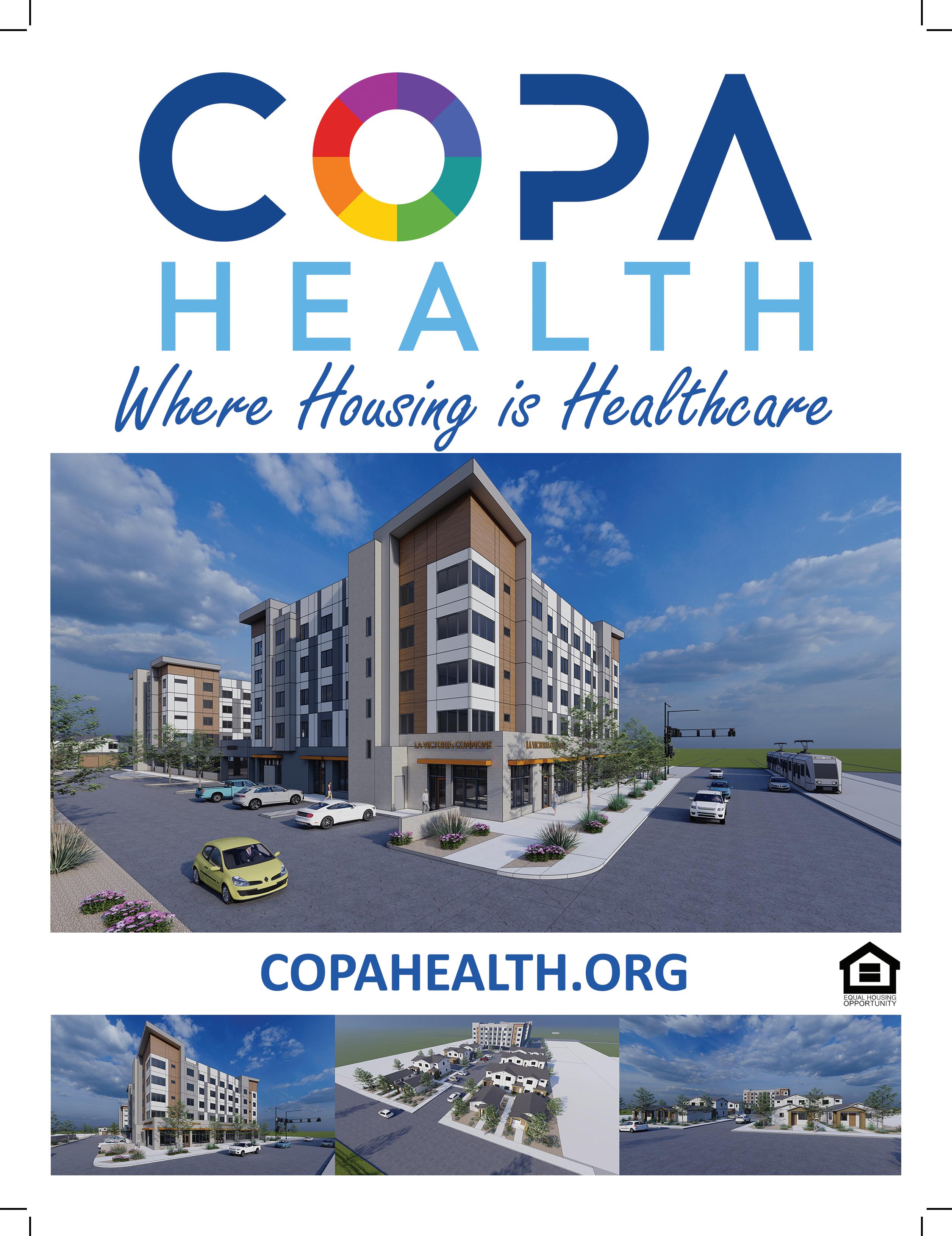
Here are the stories with the most views over the past 30 days (prior to press time) that were features in our In Business Dailies. The In Business Dailies hit email inboxes twice each weekday — at 9:30 a.m. and updated at 4:30 p.m. Sign up today at www.inbusinessphx.com/dailies-signup.
Leadership & Management | Cover Story | December 2024
16 Top Leaders of 2024: Our List of Valley Leaders Who Are Making a...
by Mike Hunter
Each year, we select top leaders who have had great success over the preceding year. This year, we selected 16 leaders in varied established sectors within our business community. We asked hard-hitting questions of these leaders to get a sense of what they see for 2025.
Economy & Trends | Cover Story | November 2024
The Business of Arts & Culture: How Growing Arts & Culture Benefits Our Economy
by RaeAnne Marsh
“Arts and culture is a significant industry in Arizona,” says Chris Camacho, president and CEO of the Greater Phoenix Economic Council, citing numbers that support the statement: The sector represents 3% of the state’s total GDP, employs more than 84,000 individuals and in 2022 added $14.2 billion to the economy.
Healthcare & Wellness | Cover Story | October 2024 Strategies for Businesses and Their Healthcare
What businesses should know about making healthcare affordable by
RaeAnne Marsh
“With more and more Arizonans looking to their employers to help them manage their health, employers feel the mounting pressure — because the landscape is changing,” observes Pam Kehaly, president and CEO of Blue Cross Blue Shield of Arizona.
Communications & Networking | Feature | October 2024
The Power of Feedback and Communication in Fostering a HighPerforming Culture...
by Cheryl Fields Tyler
Effective communication is the No. 1 ingredient to build and sustain an effective workplace culture. However, according to our recent survey, just 26% of knowledge workers strongly agree their leaders are good at it.

Arizona reached more than a billion dollars in cannabis sales in 2023 and 2024, respectively, with adult-use sales making up the bulk of each total. Although there was a 7.5% decrease in sales between 2023 and 2024, the state is expected to continue strong as the global market is expected to grow to $58 billion in sales by 2028, with 56% coming from the United States market.
The Grand Canyon State’s cannabis market is unique, with many Arizonans embracing access to regulated cannabis products. In 2022, just a year after adult-use sales began, its sales outpaced long-standing cannabis markets like Oregon and Washington.
Highs and Lows for Arizona Cannabis
When Arizona transitioned to adult use, lawmakers landed on a limited-license market, capping the number of dispensaries that could operate in the state. Today, the cap is about 160 dispensaries, or about 2.2 stores per 100,000 people.
Benzinga reports that the declining sales trend is related to the growing number of dispensaries operating in Arizona. Between June 2023 and June 2024, the state saw a 13.5% increase in dispensaries.
However, data from Cannabis Business Times highlights the difference between Arizona and neighboring New Mexico, which has approximately 1,000 licensed dispensaries all fighting to capitalize on the $600 million market in 2024. According to its reports, the average Arizona dispensary can bring in an average of roughly $8.3 million in 2024 cannabis sales, whereas the average New Mexico dispensary is looking at about $600,000 in 2024 cannabis sales. With this in mind, the Arizona market
remains full of opportunities.
Arizona is a significant contributor to the United States cannabis market and has produced some key players of its own through its unique landscape.
Sol Flower dispensaries, for example, is one of the largest single-state dispensary chains in the state. Our privately owned parent company, Copperstate Farms, utilizes the unique climate of Snowflake, Arizona, to grow cannabis under 40 acres of glass at an ideal altitude, creating a need for fewer external resources. Arizona also permits vertical seed-to-sale integration, which is an advantage for companies like Copperstate Farms and Sol Flower, as they can keep their quality high and prices affordable.
Aeriz is another key player in the Arizona market. The company grows sustainable cannabis through the use of aeroponics, keeping water use to a minimum and utilizing a closed-loop system to reuse materials and keep costs low without sacrificing quality.
The state also houses a number of key ancillary businesses supporting the cannabis industry. Most notable is the RAW brand of rolling papers and parent company, HBI International, headquartered in Phoenix.
As 2025 unfolds, we can expect to see the Arizona cannabis market grow despite saturation and other common growing pains for nascent markets. —Macey Wolfer, a journalist and content writer specializing in the growing cannabis industry.
Aeriz aeriz.com
Sol Flower livewithsol.com
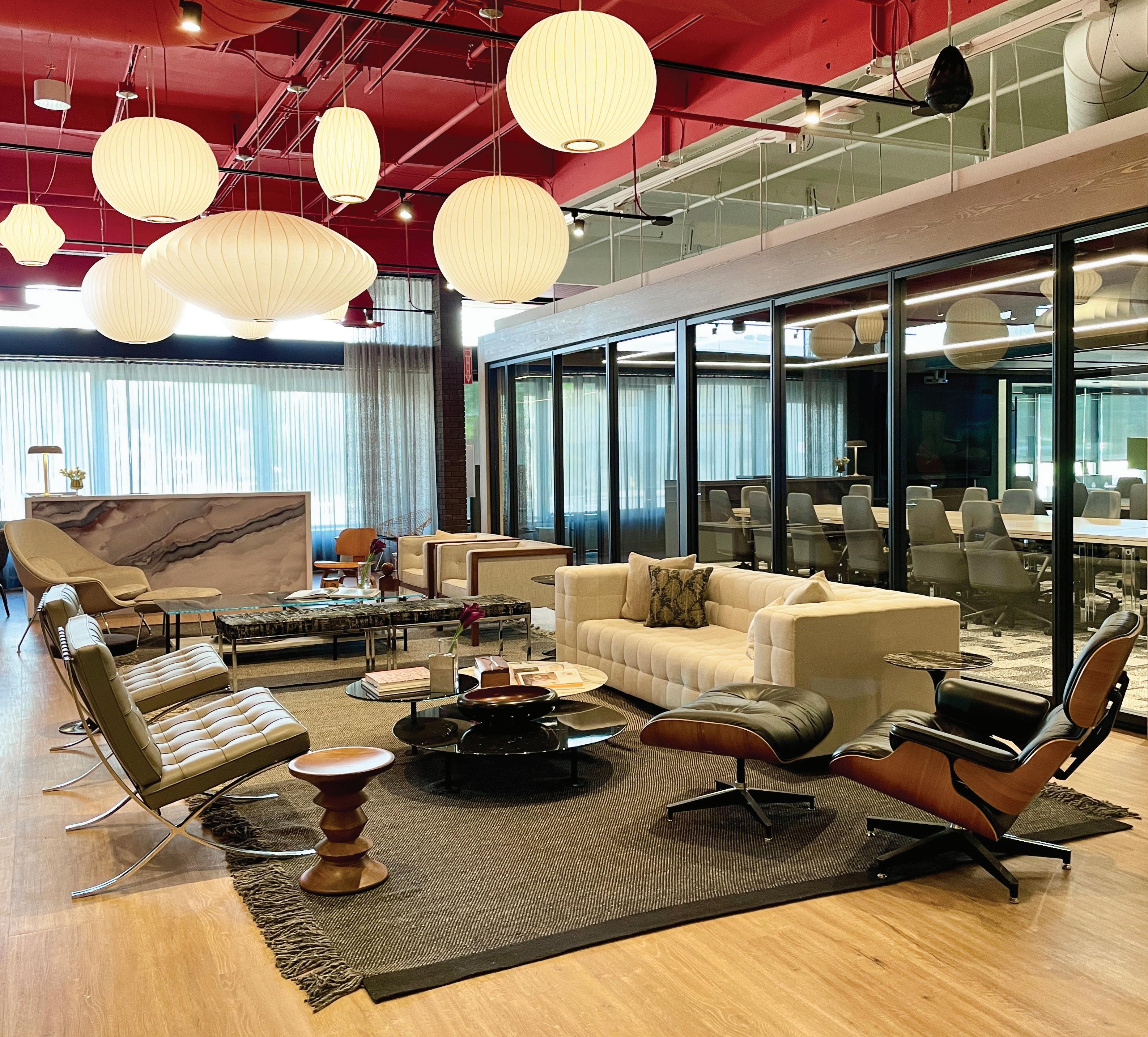
Local UBS Financial Advisors Recognized by Forbes
UBS Wealth Management USA’s Phoenix-based Stockton Schultz was recently named to the Forbes Top Next-Gen Wealth Advisors Best-in-State list for 2024. The 15-year veteran also ranked 34th nationally on the Forbes America’s Top Next-Gen Wealth Advisors list. advisors.ubs.com/schultzgroup/Meet-the-team.htm
Jim Hebets Honored by Forbes
Jim Hebets, CEO and founder of The Hebets Company, has been recognized with two prestigious rankings in the recently published 2024 America’s Top Financial Security Professionals from Forbes and SHOOK Research: No. 3 Top Financial Security Professional nationally and No. 1 Best-in-State in Arizona. hebetsco.com
Holmes Murphy Named a Best Places to Work Recently recognized for the 13th year in a row as one of the Best Places to Work in Insurance by Business Insurance, Holmes Murphy earned the No. 1 spot in the large employer category. holmesmurphy.com
ASU’s Michael Crow Named to TIME100 Climate List
Arizona State University President Michael Crow has been named to the 2024 TIME100 Climate list of leaders and innovators driving real climate action. time.com/collection/time100-climate-2024
PREP®, a culinary co-working and shared commercial kitchen concept, has expanded its operations to Arizona, opening PREP Kitchens Scottsdale at Shea Boulevard and Scottsdale Road. Since its inception in 2014, PREP® has been on a mission to support passionate food entrepreneurs by offering comprehensive mentorship, state-of-the-art facilities and a robust community of culinary professionals.
“The demand for fresh, locally produced culinary products is at an all-time high, which is allowing both new start-ups and established businesses the ability to grow their production and customer bases,” says Drew Barrett, cofounder and head of business development for PREP®. “It’s been incredible to watch the growth in the Scottsdale and Greater Phoenix area over the past few years and, in particular, to see how the culinary community has thrived post-COVID with record food and beverage sales and a host of new, critically acclaimed concepts coming to market. At PREP, we’re excited to accelerate the natural growth of the many makers that call the area home and offer them convenient, turnkey kitchen infrastructure and services to help supercharge their businesses.”
Plexus Raises Funds for Phoenix Children’s Scottsdale-based health and wellness company
Plexus Worldwide hosted the 7th Annual Pima Center Walk for Phoenix Children’s Center for Heart Care in partnership with the Pima Center business community and Salt River Pima Maricopa Indian Community, helping raise more than $136,500. plexusworldwide.com
Delta Dental Supports Little Free Library Program
Delta Dental of Arizona and Neighborhood Outreach Access to Health (NOAH) recently dedicated a Little Free Library, as well as dozens of books — including several age-appropriate titles on oral health — at NOAH’s Cholla Health Center in Scottsdale. Delta Dental team members worked together to paint and decorate the library in vivid colors and with childfriendly oral health illustrations. deltadentalaz.com • noahhelps.org
In its “2024 Year-End Summary: The Best Cities for Careers, Health & Happiness,” CoworkingCafe named Scottsdale one of the year’s best-performing cities. Among its other “bests,” Scottsdale took the crown as the best city for entrepreneurs in 2024 — this was due to the city’s GDP, which skyrocketed 38% over a five-year period, and it had the second-highest share of self-employed business owners (16%). coworkingcafe.com/blog/top-stories-2024 QUICK
PREP’s state-of-the-art commercial kitchen facility offers a mix of turnkey private kitchens and stations available for rent by the hour and by the month. The Scottsdale location features 13 private commercial food production kitchens ranging from 250 to 750 square feet, plus a large, shared kitchen with 10 co-working stations available for cooking and baking. Member benefits include fully maintained equipment and cleaning, and support with the varied aspects of running a business. “We leverage a combination of local mentors along with providing virtual/remote access to mentors that hail from other PREP cities,” Barrett explains. “We source experts with experience in areas that are key to early-stage food and beverage businesses in areas like marketing, finance, capital-raising, accounting, packaging, recipe development and other disciplines so that our members can help get answers to questions quickly that will help them scale up.” —Mike Hunter
PREP Kitchens Scottsdale www.prepwithus.prepkitchens.com/prepkitchens-scottsdale
Two local entrepreneurs recognized a business opportunity and created an unusual collaboration: furniture showroom and coffee bar.
“What began as coffee runs and breakfasts between local business owners has evolved into a welcoming space where Phoenix’s homegrown talent truly shines,” says Nick Arambula, CEO of Neighbor, one half of the collaboration.
Neighbor, known for its thoughtfully designed, sustainably made outdoor furniture, now provides a space where customers can immerse themselves in its products.
Visitors can test Neighbor’s luxurious lounge chairs, gather around its stylish fire pits, and experience the products in an atmosphere more of warm hospitality than cold sales. That comes from the other half of the collaboration: Satellite Coffee Bar, a second location of Phoenix favorite Ollie Vaughn’s, which is known for its craft coffees and locally sourced, scratchmade pastries.
Located at 5102 N. Central Avenue in central Phoenix, this dynamic showroom offers a unique experience where design, comfort and community converge. —Mike Hunter hineighbor.com satellitecoffeebar.com
America’s top 5 e-commerce platforms with the most frequent price changes
by Vaidotas Juknys

Dynamic pricing is reshaping the e-commerce landscape, offering businesses real-time adaptability while presenting unique opportunities and challenges for online shoppers.
According to a new report by Smartproxy, e-commerce platforms in the U.S. and Canada are adjusting prices with unprecedented frequency. Insights from the industry-first e-commerce Maturity Index reveal the growing scale of this practice and some of the most recent advancements.
Sellers leverage various tools to adjust prices based on market trends, supply and demand, and competitor activity. For businesses, this means maximizing revenue potential and maintaining a competitive edge. On the consumer side, savvy shoppers can benefit from price variability, seizing deals during low-demand periods or promotional campaigns.
The report ranks the top five e-commerce platforms with the
most frequent price adjustments. Amazon. com leads with 12.6 daily price changes, setting a high standard for dynamic pricing in the U.S. In contrast, Canada’s Amazon. ca averages only 4.3 daily changes, with Walmart.ca slightly higher with 7 price changes. This disparity highlights the varying pace of market adaptation between the two countries, sparking debates on how dynamic pricing influences competitiveness and shopper behavior.
For U.S. shoppers, platforms like Amazon. com offer frequent opportunities to secure lower prices during demand dips but can also easily overpay. On the other hand, Canadian consumers wonder whether slower price adjustments reduce their ability to benefit from dynamic pricing or if they win by not having to investigate if the discount is lower than the original price. More sellers have started to leverage AI-powered repricing tools that track competitors and other set parameters. However, web scraping still plays a pivotal role in the e-commerce industry. By gathering real-time data from various platforms, web scraping solutions allow businesses to track competitor prices, market trends and demand fluctuations. The report also explored how the scraping request count grew in accordance with peak shopping festivals.
E-Commerce Maturity Index ’24 smartproxy.com/E-Commerce

Vaidotas Juknys is the head of Commerce at Smartproxy, a leader in web data collection solutions. With extensive experience in E-Commerce strategies and data-driven decisionmaking, Juknys oversees initiatives that empower businesses to harness the power of web scraping. smartproxy.com
E-Commerce Maturity Index ’24 (smartproxy.com/E-Commerce)
While the report measured the prices of 12 high- and low-value products. For example, Amazon.com has more than 353 million products, meaning there could be significant price fluctuations across millions of
could even change a
smartproxy.com/E-Commerce
Kitchell is celebrating its 75th anniversary this year. The venture that began as a modest commercial contracting business now includes four separate companies spanning 13 states. Ranked as one of the top commercial builders both regionally and nationally, Kitchell employs more than 1,000 individuals. Learn more about the anniversary and Kitchell through the decades at kitchell.com/75for75
Learning and collaboration paired with experience and perspective
by Nicole Maas
Some of the best professional advice Chris Kirch ever received came early in his career as a newly minted intern at Kitchell. His lead superintendent advised: “Be a sponge.”
“I’ve had a lot of great managers along the way,” Kirch shares. “At that young age, I wasn’t immediately clear what he meant by ‘Be a sponge,’ but I soon learned and this remains some of the best guidance I’ve received as a worker and as a leader. I’ve endeavored to soak up every experience at every stage of my journey.”
Since that sage direction nearly three decades ago, Kirch has risen from intern up through the ranks to become president of Kitchell Contractors. And that journey has shaped how he leads today. Having held so many roles along the way gives him the perspective needed to understand varied roles and responsibilities, the challenges associated and how those parts contribute to the whole process.
“As a leader, I think it’s invaluable to understand that you don’t know everything,” he adds. “Smart leaders surround themselves with smart people. Subject matter experts will help you make informed decisions more quickly and effectively.”
When Kirch was presented with the opportunity to open a new market for Kitchell in Houston, he jumped at the chance. With no Kitchell presence in Houston, Kirch took on the task of building the company from the ground up. This was in 2016, as he was transitioning from senior project manager to operations manager. Building something from scratch was an invaluable learning experience that tested his leadership in new ways. That experience, paired with his leadership philosophy, propelled Kirch into his role as president of Kitchell Contractors.
As Kirch advanced in his career, one of his biggest challenges was learning to let go and delegate more responsibility.
“Especially as an executive, you have to get comfortable managing and letting your team lead. The construction world is very operationally oriented, so this can be especially challenging for those in our industry. You’re so used to completing tasks and putting out fires, then one day you learn to let go of task-oriented issues and leave them in the hands of your capable team.”
Kirch has honed his leadership skills over projects in four states. There have been healthcare builds, higher education projects, tribal developments and much more. Each has a different impact on the community, a new team and unique
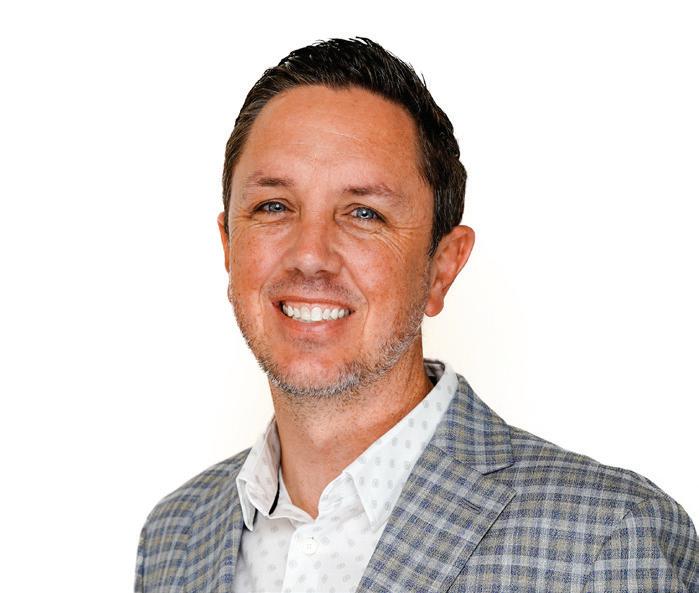
relationships. These all necessitate flexibility and out-of-thebox thinking that Kirch excels at.
“I can recall one project in a hospital that was operational while we worked on the exterior skin. This presented some unique challenges, as workers had to don surgical gear to get safely through sterile operating rooms while in use, just to reach their job site. It sounds unusual — because it is. But at the time, we just did what was needed to get the job done.”
And because construction is a team sport, Kirch knows how to bring different viewpoints together. As a leader, he can’t make decisions in a vacuum, knowing that the owner, architect, engineers and others need to have input to make things work. This team-based approach shapes much of how Kirch leads.
Kirch’s staff appreciates that nothing is too big or too small for him. He’s always willing to help, knowing that no matter what title a person holds, anyone may need to wear different hats at different times.
“Bringing people together and dialoguing is so helpful for solving problems,” he shares. “Transparent and candid conversation ensures I’m a trusted partner, whether with internal team members or external partners.”
As Kirch reflects on his nearly three-decade career, he remains grounded in the advice that launched his journey: “Be a sponge.” This mindset has shaped not only his personal growth but also his approach to leadership, as he continues to learn from every experience and embrace collaboration with his team. For Kirch, success is not just about the milestones reached but the relationships built and the knowledge gained along the way. His journey at Kitchell Contractors is a testament to the power of staying humble, leading with empathy, and fostering a culture where every voice contributes to the bigger picture.
Kitchell Contractors kitchell.com
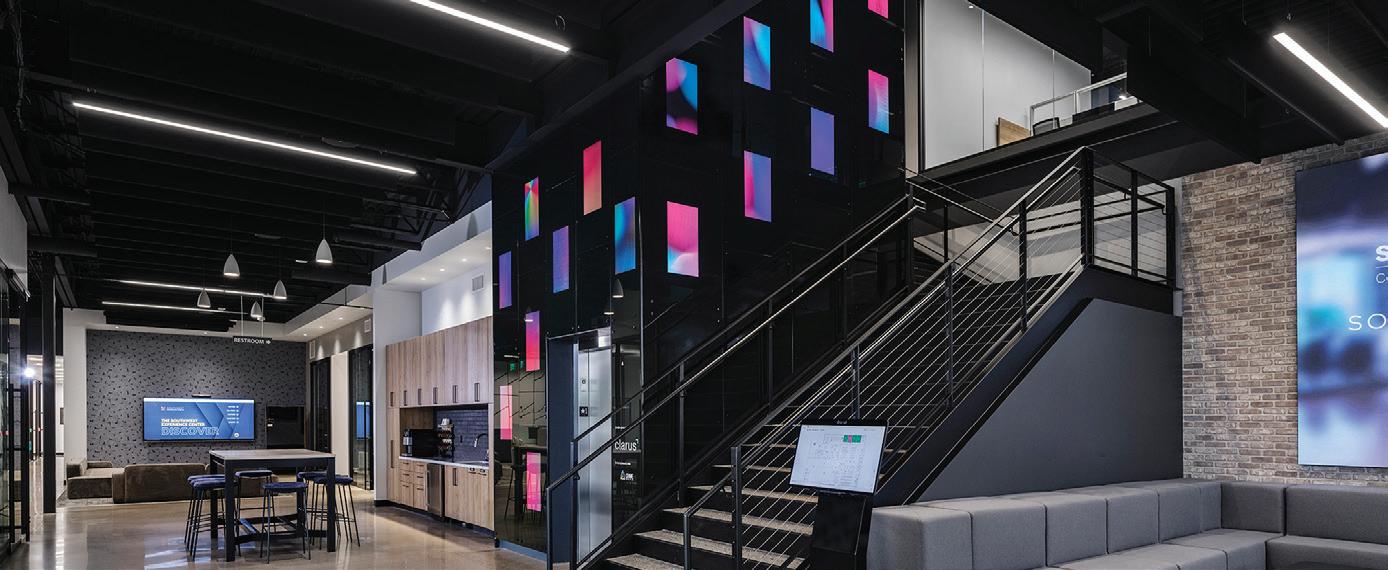
Eleven years ago, I ran a mid-level audiovisual company that relied on builders, architects and project managers to bring us business. We did amazing work, had a group of dedicated people, excellent technology and were profitable. We were following the rules. We were doing okay.
As CEO and founder, I realized “okay” was not good enough for me or my company, Immedia. I also realized that if we were going to grow, it would require breaking some rules. So, we set out on an unmarked trail. In our efforts to differentiate, we pushed the commercial real estate industry to think differently about what we did.
With three decades of business under my belt, I understand the fear that comes with taking big swings. But I also believe that taking risks — especially those that challenge “how things have always been done” — is the best way to uplevel one’s business, oneself and one’s market position.
Here are a few ways we took risks that have really paid off:
• Creating something entirely new: The NextSpace gallery showroom we built in 2023 was a huge investment, and a departure from our core AV business. It was also a giant swing because nothing like it existed (and ours remains the only one of its kind). But we knew we had to give the market a way to interact with our AV services and see what an immersive workspace looked, sounded and felt like — before they bought — to illustrate what was possible in a workspace, better than a description or rendering ever could.
• Taking a partnership approach instead of going solo: Our industry often rewards “going it alone,” but we decided the stronger position was to extend a hand, share our vision and develop true partnerships. While building NextSpace, we invited multiple partners to share a common showroom — an uncommon practice, but we committed and it works!
• Shifting to a direct clientrelationship focus: NextSpace was the cherry on top of a longer-term strategic pivot from a dependency on referrals to building our own direct client relationships. We began this with Immedia, by engaging clients without waiting for projects. This has fostered longterm relationships and loyalty, and allowed us to organically connect in the weeks, months and years before an actual project comes about. While a risk that could have alienated our industry partners, it has become a differentiator for us, giving us a chance to do what we do best — be there to support, serve, solve, guide and offer our best to each client.
As an industry, we shouldn’t continue to rely on outdated rules that dictate how we interact with one another, serve our clients or uplevel. As leaders, we can make bold moves that disrupt traditional industry practices and reshape how we engage with clients. Growth requires reaching, risking and, it’s to be hoped, reward. I hope everything we’ve built with NextSpace continues to encourage innovation within the industry. —Jeff Emmons, CEO of Immedia (www.immedia-tech.com) and founder and chief visionary of NextSpace (www.nextspace.com)
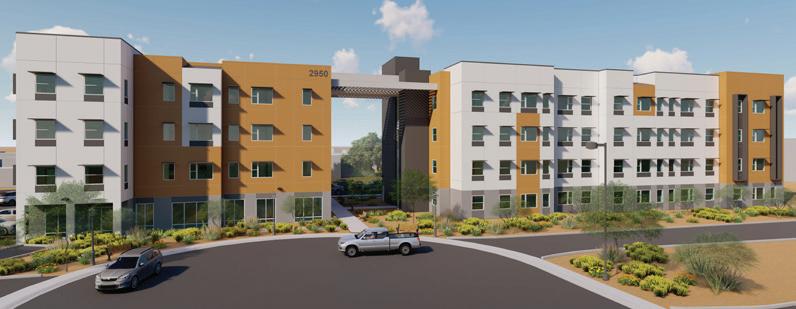
Phoenix Scholar House, a first-of-its-kind affordable housing community that combines housing with workforce development and is specifically tailored for single parents pursuing higher education, broke ground in November at 2950 North 18th Place in Phoenix. It will feature 56 apartment units, offering residents access to educational resources and career support. This project from Save the Family Foundation of Arizona and Brinshore Development represents an innovative model that goes beyond housing by empowering residents with the skills and credentials necessary to enter the workforce and secure employment — breaking the cycle of generational poverty. The Scholar House concept, proven successful in other cities, is being introduced in Arizona for the first time, setting a new standard for affordable housing projects.
—Mike Hunter phoenixscholarhouse.org
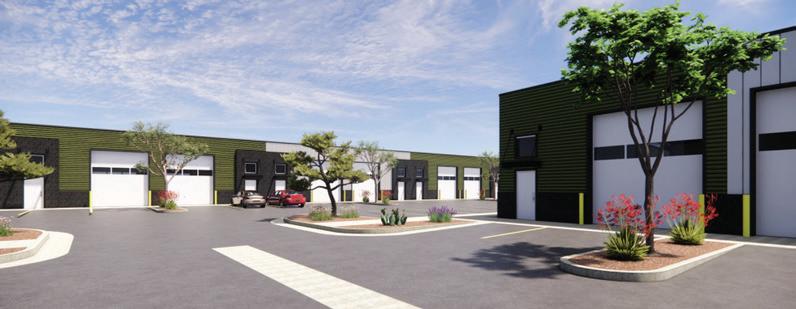
Tempe-based Sun State Builders, a leading design-build general contractor, recently began construction on a ground-up build for WorkBay, a company that provides flexible workspace for small businesses. Located in Glendale at 7915 N. Harbor Blvd., the project is comprised of five buildings totaling 80,082 square feet, each to be divided into separate, smaller spaces that will be offered for lease for industrial, warehouse or business use. Construction is targeted for completion in September 2025.
—Mike Hunter sunstatebuilders.com
According to the December 2024 Office Market Report from CommercialEdge, Phoenix recorded one of the lowest vacancy rates in the West, at 19.5%, (which rings in barely above the national average of 19.4%). commercialedge.com/blog/national-office-report/#rates_vacancy
Culdesac, located in Tempe, is the first car-free neighborhood built from scratch in the U.S. The design for Culdesac Tempe was non-conventional from the very start at both the community and building scales, and it has not changed a lot since its inception.
Culdesac, a real estate developer and property manager, not only wanted to deliver car-free, mobility-rich living, but also wanted to innovate the type of community they were delivering in addition to the building design with a primary focus on creating a strong sense of community. A big part of this innovation was demonstrating a model that provided comfortable living in Tempe’s extreme desert climate. Not needing to accommodate spaces for car storage or circulation, given Culdesac Tempe’s car-free goal, opened up the opportunity to focus on creating people-oriented spaces.
The compact pattern of the Culdesac Tempe community is largely based on the study of other historic communities in desert environments that allows for the buildings to shade one another and for the ground plane to be shaded most of the day. Both of these components greatly reduce the amount of heat that can be gained over the course of a day.
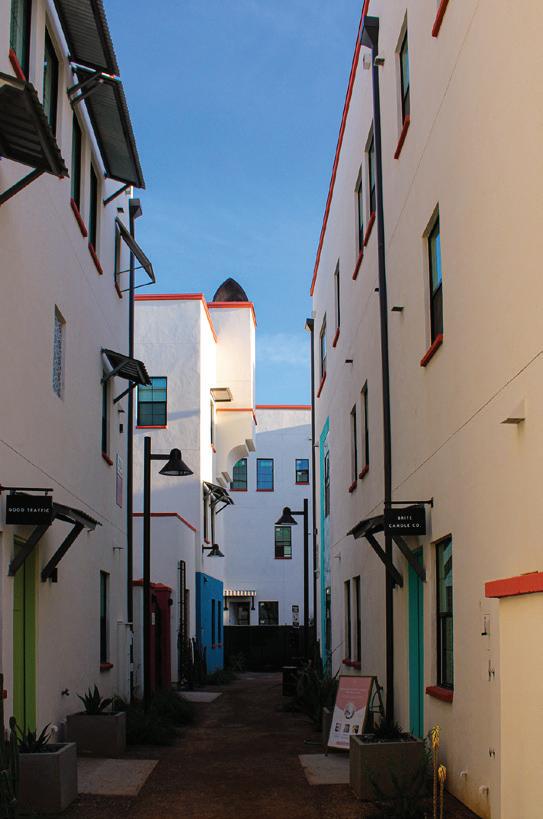
There are many architecture features of Culdesac Tempe that are designed for heat reduction and greater livability in the region’s extreme temperatures, including a network of paseos. Instead of very wide streets that accommodate cars, these narrow pedestrian paseos, typically 10 to 15 feet wide, provide shaded walking routes through Culdesac. There is also no asphalt in the community and a majority of the ground surface is a soft decomposed granite, which greatly reduces heat gain on the ground plane.
The narrow and winding paths help allow winds to pass through. Also, the network of small and medium-sized courtyards within the community’s blocks are mostly shaded and strategically positioned with breaks throughout them to allow breezes to cool the spaces.
When designing building placements for Culdesac, we learned from other desert-responsive places, including in Egypt and the Barrio Viejo in Tucson. Shading elements are provided on Culdesac Tempe’s west and south elevations, and window openings are no larger than needed, to reduce the amount of heat gain inside the units. The buildings are white — which, surprisingly, was not common for buildings in Tempe before this project — in order to reflect the sun and reduce heat buildup.

Having some commercial services and amenities within the community is key to providing car-free living and a walkable neighborhood. We worked with Lorenzo Perez from Venue Projects, who has developed and managed many successful commercial and food and beverage destinations in Phoenix, including The Orchard and The Newton, to establish program parameters for the community’s mixed-use center next to the Smith-Martin Transit station.
The original plan targeted a small market, coffee shop, a destination restaurant and other locally owned businesses. There is parking available for visitors and customers of the community’s businesses. There are also several designated drop-off and pickup locations for carshare applications. Culdesac also paid to have a pedestrian crossing that goes directly from the eastern edge of the nearby light rail platform into the community.
It’s approximately a five-minute walk from most portions of Culdesac Tempe to the light rail stop as well as the mixed-use center. When our team at Opticos designed Culdesac Tempe, the concept was to provide a continuous, shaded route along the entire length of the community through the narrow design and orientation of the paseos.
The informal layout of Culdesac Tempe provides interesting visuals that draw you through the project. This is done with thoughtful and irregular building placement and orientation and, in some instances, the placement of architectural elements that are meant to catch the eye. All the while, the landscaping enhances the experience. The landscape design, led by Kris Floor of Phoenix-based Floor Associates, cools the spaces and also provides visual interest to draw you through the spaces. Daniel Parolek, founding principal of Opticos Design (opticosdesign.com) and lead architect of the Culdesac Tempe (culdesac.com) community
For more photos and more details about what sets this design apart from other developments, visit this article online at www.inbusinessphx.com
In 2023, a Harvard researcher proved the microclimate, registering a 40-degree
difference in temperatures between the sidewalk just outside Culdesac versus the cooler climate within the community.















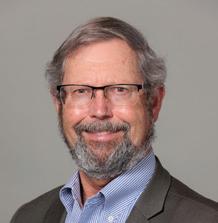
Dean Freeman is a senior advisor and analyst at Kiterocket Insights. Freeman has more than 40 years of experience in the semiconductor industry and is one of the unique individuals who has not only worked both in a fab and for semiconductor equipment manufacturers, but he has also had responsibility for every aspect of the semiconductor manufacturing process, from wafer selection to final passivation.
by Dean Freeman
With 2024 coming to a close, the semiconductor industry has had a mixed year. Artificial intelligence was the key market driver, sending graphic processor units (GPUs) and high-bandwidth memory (HBM) to record revenues. Mobile phones and AI PCs failed to respond to the hype, and automotive and industrial chips experienced an undersupply hangover. The strong AI and advanced technology sales enabled the semiconductor industry to outperform the WSTS spring forecast of 16%. Semiconductor equipment sales benefited from strong sales in China and will eke out slight growth in 2024.
The year 2025 is a mystery. AI sales are expected to continue to see growth as the Blackwell chips and 16-high HBM support that application. Growth of PCs and mobile phones is expected to be positive, but in the low single digits; the automotive and industrial areas are preparing for a flat year as the inventory hangover continues into 2025. The WSTS has forecasted 13% growth in 2025, but concerns about tariffs and a challenging geopolitical environment will create a climate for slower growth, with the fall forecast coming in at 11.9%.
One of the concerns is that the new administration will try to claw back much of the $52.7 billion in subsidies, tax incentives and loans. The CHIPS and Science Act has announced $33.8 billion in grant awards and up to $28.8 billion in loans. Arizona has received three major grants from the CHIPS Act. Intel’s grant has been reduced to $7.9 billion in grants and $11 billion in loans to build two fabs that will cost $32 billion to construct. Taiwan Semiconductor Manufacturing Company has received $6.6 billion in grants and $5 billion in loans to build three fabs for $65 billion, and Amkor has received a $400 million grant and $200 million in loans to build a $2 billion packaging and test facility.
In addition to the CHIPS Act, the semiconductor investment in Arizona since 2020 to support the new chip and packaging facilities has been astronomical. There has been more than $102 billion in total semiconductor investment, with $100 million in semiconductor infrastructure, workforce and 40 semiconductor company expansions. A significant amount of the investment is made by companies that will support Intel and TSMC as the new fabs ramp up; as long as Intel and TSMC are able to ramp up production, this investment will support the Arizona economy.
So, what are the potential impacts for Arizona and the larger semiconductor industry if the next administration decides to tear up the contracts or implement tariffs?

The Biden administration is working furiously to finalize the agreements so it will be more difficult to pull back any grants. From an Arizona perspective, both TSMC’s and Intel’s grants have been finalized. This may make it more challenging to pull back funding or tax incentives. The CHIPS Act creates high-quality jobs, which the next administration has been promoting. So, pulling back the investment will have negative implications for the next administration.
TSMC and Intel have completed, or nearly completed, the construction and equipment installation of four fabs. If funding is pulled, it is unlikely that either company would stop production now. TSMC could delay the start of its second and third fabs until additional capacity is needed. Intel needs capacity, so it is unlikely that it would stop implementation if funding were pulled; however, with CEO Pat Gelsinger now gone, equipment purchases could slow. Tariffs could play a positive role, as it might become more economically feasible for Apple, Nvidia and AMD to manufacture their chips in the United States. Intel is at a higher risk if it loses funding; does it have the capital reserves to start the completed fabs? While the next administration is figuring out how to move forward, there will be significant opposition if they attack the CHIPS Act.
U.S. Senator for Arizona Mark Kelly has stated how important he believes the act is: “We’re talking about an investment of private companies of $100 billion in our state. It’s the biggest investment any state has ever seen in any industry,” he said.
The Arizona Chamber of Commerce agreed that the act is pivotal and isn’t concerned by the president-elect’s comments during his campaign. “I think when [Trump] gets back in office, he’ll see the importance of it — the national security, economic security and, honestly, just continuing to have that passion to build things in America,” said Danny Seiden, president and CEO of the chamber. “We need chips in America, so no, I don’t think it’s going anywhere.”
As the administrative transition begins, there might be a lot of saber-rattling and shouting, but, as Seiden said, at least for Arizona, I don’t think it’s going anywhere.
The Biden administration is working furiously to finalize the agreements so it will be more difficult to pull back any grants. From an Arizona perspective, both TSMC’s and Intel’s grants have been finalized. This may make it more challenging to pull back funding or tax incentives.
















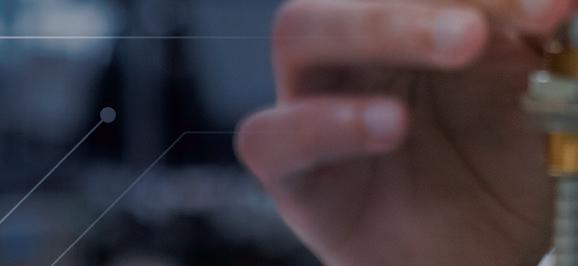





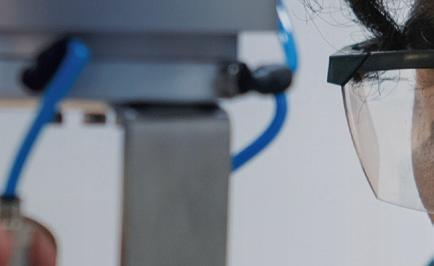


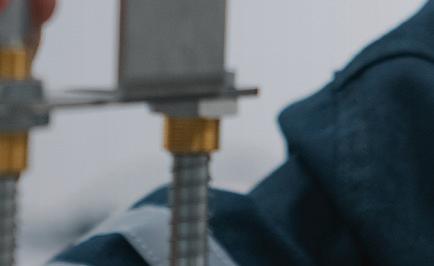












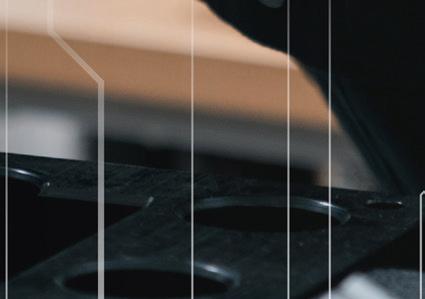

Arizona is the national model for innovative and successful workforce development programs. The Arizona Commerce Authority’s collaborative approach brings together government, academia and industry to develop comprehensive, award-winning and scalable solutions. The Future48 Workforce Accelerators represent Arizona’s latest workforce advancement, connecting students with the skills and know-how needed for jobs in the state’s growing advanced manufacturing industry. The new workforce development facilities will be located throughout the state and provide customized training in key advanced manufacturing segments such as semiconductor, battery, automotive, aerospace & defense, and more.
JX Advanced Metals USA, Inc. (JX USA), formerly known as JX Nippon Mining & Metals USA, Inc., celebrated the grand opening of its new manufacturing plant in Mesa, Ariz., with a ribboncutting ceremony attended by company leaders, local officials and representatives from the Arizona Commerce Authority. Located at the northeast corner of Germann and Crismon roads, the facility spans 273,000 square feet and marks a milestone for JX USA’s expansion in advanced materials production.
The Mesa facility will produce advanced sputtering targets essential for semiconductor manufacturing, serving growing U.S. and European markets. Test production is already underway, with full-scale operations expected to begin in early 2025. The new plant will more than double the production capacity of JX USA’s existing Chandler facility, solidifying its role as a key supplier in the global semiconductor industry.
“Today’s opening marks an exciting milestone for JX Advanced Metals USA, Inc.,” said Takeshi Suwabe, executive officer and general manager of the Thin Film Materials Division, at the ribbon cutting. “Our new Mesa facility will not only drive growth in semiconductor materials production but also serve as the center of JX USA’s business in the advanced materials field in the U.S.”
Mesa Mayor John Giles highlighted the project’s significance, stating, “JX USA’s choice to make Mesa their manufacturing base reaffirms our city’s appeal as a hub for innovation and advanced technology. We are honored to support this remarkable company as it grows and contributes to the industry and local economy.”
Designed with sustainability in mind, the facility includes solar-covered parking, electric vehicle charging stations and advanced production spaces. It underscores Arizona’s prominence in semiconductor manufacturing and positions Mesa as a central hub for cutting-edge materials development.
Sandra Watson, CEO of Arizona Commerce Authority, praised the project: “JX’s state-of-the-art facility expands Arizona’s semiconductor leadership and reinforces our reputation as a leader in high-tech manufacturing.” —Stephanie Quinn jx-nmm.com
Famous for its snowbirds, the Grand Canyon and retirees on ATVs, Arizona is swiftly carving out a new and unexpected identity blending its historic identity as the “Copper State” with its expanding semiconductor ecosystem. This, coupled with Arizona’s long history of manufacturing, has attracted an entirely new industry to the state: electric car companies.
Electric vehicles, once seen as niche, have reached record highs in the U.S. for both volume and market share, according to Kelley Blue Book. Electric vehicles are now at the center of the global shift toward sustainable transportation with an expectation to more than triple by 2025, according to S&P Global Market Intelligence. But the rise of EVs would be impossible without semiconductors — acting as the “brains” behind electric vehicles, enabling everything from battery management to autonomous driving features.
Arizona’s semiconductor industry is uniquely positioned as a focal point for chip production, attracting suppliers, manufacturers and technology innovators. Companies like Intel, TSMC and emerging players such as Hyperion Technologies are driving advancements in semiconductor technologies. Hyperion, for instance, plans to establish a 600,000-squarefoot facility in Peoria to produce substrates — a critical piece of chip architecture used in highperformance computing and EV applications.
“Arizona is a magnet for auto innovation. We’ve had three EV groundbreakings in the last 16 months, which is incredible. Companies testing their cars at proving grounds in the state include GM, Ford, Toyota, VW, Chrysler and Nissan. Arizona is also the epicenter of automated driving. Waymo, Cruise, TuSimple, Embark, Intel and more all have operations here,” says Sandra Watson, president and CEO of Arizona Commerce Authority.
Lucid Motors’ Casa Grande plant, often referred to as an “EV gigafactory,” exemplifies how the semiconductor industry supports downstream industries. Nikola Corporation, which manufactures electric and hydrogen-powered trucks, and ElectraMeccanica, a manufacturer of compact electric vehicles, have also chosen Arizona as a production hub.
The rise of electric vehicles amplifies the importance of semiconductors, and companies like Everspin Technologies, a Chandler-based company, provide a real-world example of this synergy. Everspin’s Magnetoresistive Random Access Memory (MRAM) technology is integrated

into Lucid Motors’ luxury Air sedan and the newly launched Gravity SUV, enabling precise powertrain management and data reliability. MRAM’s durability and performance under harsh conditions make it ideal for EV applications, where failure is not an option.
High-performance EVs require chips that can operate reliably under extreme conditions — controlling power management, enabling real-time communication between systems and ensuring vehicle safety. Moreover, as automakers push for longer battery life and advanced connectivity, the need for cutting-edge semiconductors will only grow.
This relationship between semiconductor makers and EV manufacturers highlights the interconnected nature of Arizona’s technology sector and economy. As semiconductors enable advanced EV features, EV growth drives further demand for chips — creating a feedback loop of economic opportunity.
This evolving ecosystem also aligns with federal initiatives like the CHIPS and Science Act, which aim to bolster domestic semiconductor manufacturing. Investments in Arizona are helping to reshape supply chains, reduce reliance on foreign production and solidify the state’s role as a hub for advanced technology.
Companies across the state — from construction firms to engineering specialists — are playing a role in building the infrastructure that supports semiconductor manufacturing and the technologies it powers.
“In Arizona, we have been pioneers in innovation, aerospace and advanced manufacturing, from the first integrated circuits to cutting-edge computing chips to autonomous cars,” says Governor Katie Hobbs.
Arizona continues to evolve from its copper mining roots to becoming a semiconductor stronghold. Whether through infrastructure development, supply chain support or workforce initiatives, Arizona is laying the groundwork for a technology-driven future. —Stephanie Quinn




















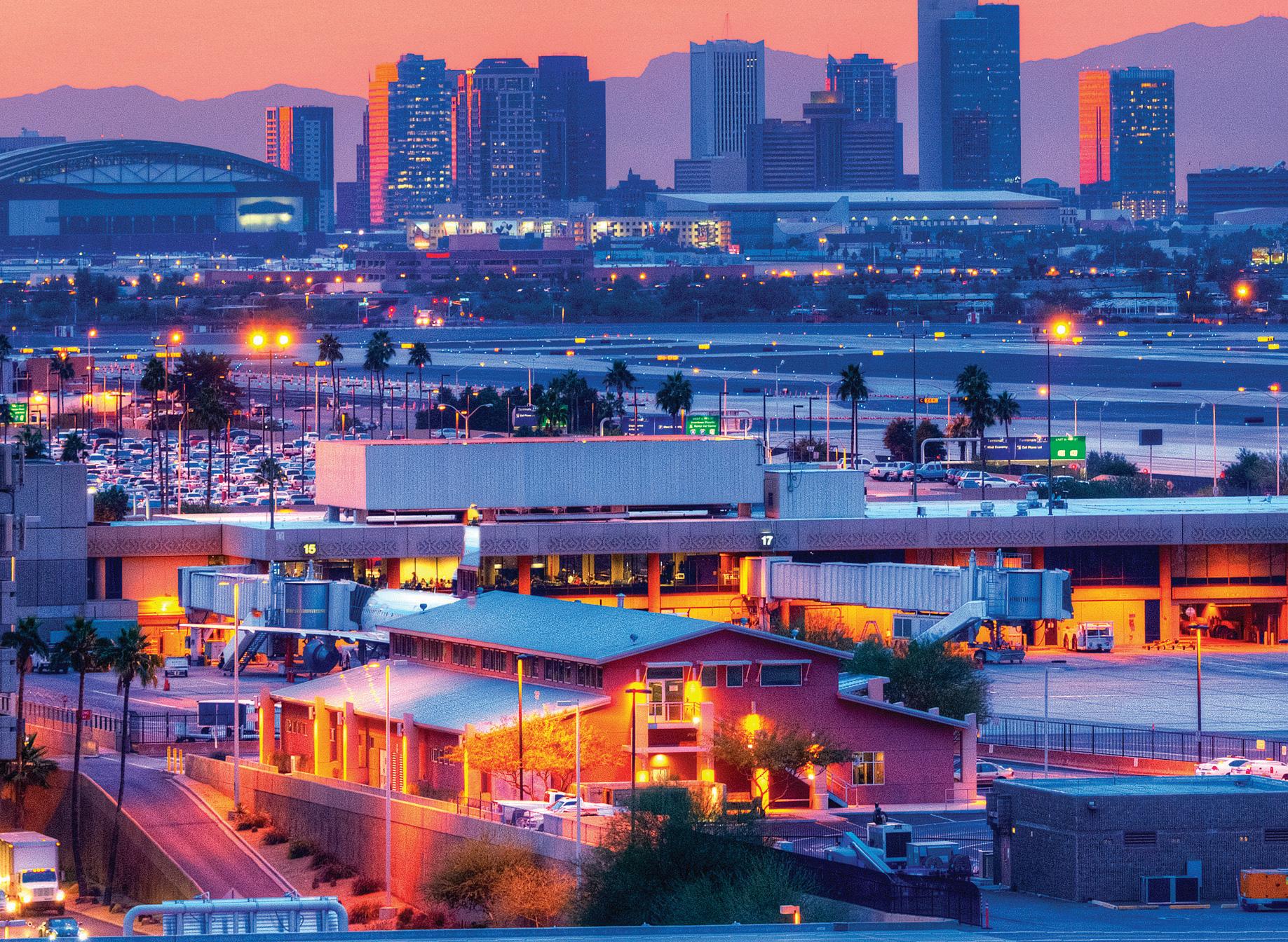















































HonorHealth was named Large Corporation of the Year last year by Healthcare Supplier Diversity Alliance. HonorHealth’s commitment to advancing supplier diversity is a crucial initiative that reflects a broader industry shift toward inclusivity and community engagement in healthcare. In 2022, the organization’s Strategic Sourcing & Engagement Office launched a Supplier Diversity program with a clear objective: to increase partnerships with Minority Business Enterprises (MBEs). This initiative aligns with HonorHealth’s mission to foster meaningful connections with diverse community segments, supporting small businesses and enhancing the competitive landscape.
For HonorHealth, growing spend with MBEs isn’t just about financial investment — it’s about strengthening local economies and helping small businesses thrive. The healthcare sector, often dominated by large corporations, must do more than spend with Fortune 500 companies.
By engaging with MBEs, HonorHealth is contributing to the growth of businesses that are foundational to the American economy — small, woman-owned, veteran-owned and LGBTQ+-owned businesses. This approach brings diversity to the supply chain, ensuring high-quality products and services while maintaining competitive pricing.
Strategic Sourcing & Engagement has set ambitious goals, including increasing HonorHealth’s annual supply/service spend with Arizona-based MBEs. In just three years, the program has achieved impressive results, growing MBE contracting spend from $37 million to $70 million. This achievement reflects a larger trend in the healthcare industry, where supplier diversity is gaining traction as a pathway to sustainability, innovation and resilience.
The value of diversity in the supply chain is clear. A more diverse supplier base brings fresh perspectives, greater innovation and an ability to respond to changing market dynamics. For the healthcare industry, this means better service, cost efficiency and a commitment to supporting underrepresented communities. HonorHealth’s seven-year roadmap, which plans to add new MBEs each year, underscores the organization’s dedication to sustainability in supplier diversity.
This focus on diversity not only enhances HonorHealth’s supply chain but also sets a powerful example for the broader healthcare industry, showcasing how a diverse supply chain can create long-term value for all stakeholders. —Ryan Kirane, VP, supply chain services & sustainability officer at HonorHealth (www.honorhealth.com)
Healthcare spending is climbing every year. According to projections, businesses will pay an average of 9% more for their employees’ medical benefits in 2025, up from the 6.4% increase in 2024. Inflation plays a part in this trend, as does the growing burden of treating chronic conditions Meanwhile, employers are under increased pressure to offer high-quality benefits that help attract and retain top talent.
In response, business owners and HR leaders are adopting several key strategies to meet the expectations of their workforce and prospective talent while controlling costs. These approaches center on affordable, accessible and efficient care that makes it easier for employees to manage their health. That’s because healthier populations generally need less, and lower-cost, care. However, when it isn’t affordable or easy, people often forego or delay necessary healthcare services. This can lead to more complex and expensive interventions down the line.
Here are three things Arizona businesses are prioritizing in their benefit plan design that improve care quality and drive better cost control:
• Convenient routine and preventive care. One of the most effective ways to control healthcare spending is to prevent or treat illness before it becomes chronic and more costly. Yet, today’s employees are busier than ever and expect convenience when it comes to their health. When evaluating their workplace benefit plans’ primary care options, leaders should consider ease of use (like virtual visits for common illnesses or digital behavioral health support) as well as affordability.
From seeking an annual physical to managing hypertension, putting flexible, low-cost options in employees’ hands can encourage higher adoption of these types of services. An uptick in their utilization can result in lower emergency and in-patient utilization, reducing healthcare expenses for both employers and staff members.
• Wrap-around, whole-person wellness support As the cost of chronic conditions continues to burden the healthcare system, employers have realized that treatment of these diseases shouldn’t start and end with pharmacologic management. Many workplaces are adopting benefit plans that offer multidisciplinary and holistic
behavior modification programs that address root-cause elements of conditions like diabetes and obesity. These factors may include diet, exercise and nutrition.
So, many leading workplaces are choosing to partner with a health insurer that offers membercentric lifestyle programming to help their employees’ health improve long-term while driving optimal cost management.
• High-value, coordinated care. In the U.S., traditional fee-for-service models have rewarded volume (the quantity of healthcare services provided), not value (outcomes demonstrating better health). Many workplaces realize the pitfall of this approach and have elected to work with health insurance companies that build efficient, high-value care into their business model.
For example, Banner|Aetna is a joint venture between Aetna (a leading national insurer) and Banner Health (the largest health system in Arizona). The “payvider” model means that both the payer and provider entities are aligned in their incentives to both reduce costs and help people get and stay well. Flipping the script on this traditionally adversarial relationship between a health insurer and a provider puts each member at the center of care. As a result, employees have a better experience and see better outcomes.
Projections show that healthcare spending will continue to rise, making it critical for businesses and HR leaders to implement cost-mitigating strategies to protect their bottom line. All the while, forwardthinking employers realize that even amidst rising costs, their organizations must continue to offer top-tier benefits to meet employees’ needs and attract new hires.
Fortunately, many Arizona employers are implementing strategies like these to maintain a healthier workforce, enhance productivity and control spending. Investing in employee health is more than a smart business move — it’s the foundation for a resilient, thriving workforce and a stronger future. —Dan Keller, chief financial officer at Banner|Aetna (www.banneraetna.com) HonorHealth’s Supplier Diversity program has
Addressing uncertainty is a critical challenge for leaders today as geopolitical tensions, shifting consumer preferences, talent disruptions, evolving regulations, and rapid technological advancements increasingly complicate the business landscape. According to Learning to Manage Uncertainty, With AI, a new report by MIT Sloan Management Review and Boston Consulting Group, artificial intelligence, a major source of uncertainty in its own right, is essential for meeting this challenge.
“Our previous research found that organizations with superior learning capabilities are more likely to obtain significant financial benefits from their AI use,” says Shervin Khodabandeh, a BCG managing director, senior partner, and coauthor of the report. “Now we find that the reverse is also true. Using AI can improve organizational learning capabilities, and these learning improvements are tied to not only enhanced financial results but also the ability to manage strategy-related uncertainties.”
Organizational learning and AI-specific learning (augmented learning) help enterprises manage uncertainty and disruptions from talent mobility, changing technology, and evolving regulatory and legal requirements. The survey results show a clear link between organizational learning and preparedness for talent mobility disruptions. Only 39% of Limited Learners feel ready to manage knowledge loss from departing employees, while this rises to 64% in those with strong learning capabilities. Using AI can further contribute to this readiness: Eighty-three percent of Augmented Learners are prepared to deal with the uncertainty of knowledge disruption from talent mobility— twice as much as Limited Learners.
“Companies can adopt five practical and actionable strategies to enhance their organizational learning through AI,” says Leonid Zhukov, vice president of data science at BCG and a coauthor of the report. “These strategies include fostering growth in both organizational and AIdriven learning, leveraging AI to drive exploration, accelerating learning with AI, selecting initiatives that support continuous learning, and ensuring responsible and ethical AI usage.”
The research finds that organizations that combine organizational learning with AI-specific learning outperform organizations that do neither or employ either alone. —Mike Hunter sloanreview.mit.edu/projects/learning-to-manageuncertainty-with-ai
In a survey conducted in November 2023, the disconnect between employee expectations and employers was pulled into sharp focus. Despite employers putting significant effort and budget into offering quality benefits, they continue to be underutilized, leading to disengagement and affecting retention rates. Just one example: Fortynine percent of employers surveyed offer financial wellness benefits, yet only 28% of employees are leveraging them, 72% struggle to understand their benefits, and nearly a third have difficulty grasping the monetary value of employer-provided benefits.
This challenge is one that HR leaders across industries know all too well. Companies are crafting robust benefits packages — health plans, retirement savings, wellness programs — yet employees often feel confused, unsupported or unaware of what’s available. This disconnect often leads to frustration and turnover, with 91% of surveyed employers experiencing turnover rates exceeding 10% in 2023.
Suffice it to say that this isn’t just a challenge of providing the right benefits. That’s one part of it. The other is educating employees about the benefits already available to them. Without ongoing communication and clear guidance, even the most comprehensive packages can fall flat and leave employees feeling lost at benefits sea.
Navigating benefits options can feel like a maze during enrollment and renewal periods. While employees might know their company offers health insurance and retirement plans, understanding how to utilize these resources fully is another matter.
From the employer’s perspective, it can be frustrating to see carefully crafted benefits packages underutilized. After all, time and money go into designing these offerings to meet the widespread needs of employees. When benefits aren’t being used, and ’employees are dissatisfied, it can feel like those efforts have gone to waste.
The disconnect often boils down to a lack of communication. Employers may not be offering enough education about what benefits are available, how to access them or why they matter. Even the most comprehensive packages can go underutilized without ongoing engagement and clarity.
To bridge the gap, a centralized, year-round digital platform is essential. Engagement increases when employees can easily access benefits information, enroll and manage their accounts. A modern platform doesn’t just make it easier for employees — it also drastically reduces headaches for employers.
Employers can automate key processes, from enrollment to life event updates, making HR operations more efficient. Platforms that integrate benefits management streamline the entire process for HR teams, saving time and minimizing administrative tasks that traditionally take hours. Automated reminders, self-service tools and accessible dashboards ensure employees and HR professionals are on the same page.
This all-in-one approach also makes compliance management more seamless, reducing risks of errors and ensuring that the latest benefits updates are clearly communicated to the staff. The result? A more efficient benefits administration process, reduced workload and a more satisfied, engaged workforce.
Providing a full benefits package alone doesn’t guarantee high satisfaction or retention. Utilization hinges on how well employees can access, understand and use those benefits. When employees can access employer-sponsored coverage in times of need, they feel valued and supported by their employer. This sense of security is crucial in their decision to stay with the company.
Companies can foster a more loyal workforce by closing the benefits literacy gap. Platforms that empower employees with clear information and easy access improve engagement and boost retention rates. When employees fully understand and appreciate the value of their benefits, they’re less likely to look for greener pastures elsewhere. Comprehensive benefits packages are essential but only part of the equation. Employers need to make sure their teams understand what’s available to them. By focusing on ongoing education and communication, companies can ensure their benefits are fully utilized — and that employees remain satisfied, engaged and loyal in the long run.
—Ed Sayed, VP of Customer Success at Vimly Benefits Solutions (vimly.com), responsible for the Customer Support and National Account Client Services teams
Forty-nine percent of employers surveyed offer financial wellness benefits, yet only 28% of employees are leveraging them, 72% struggle to understand their benefits, and nearly a third have difficulty grasping the monetary value of employer-provided benefits.










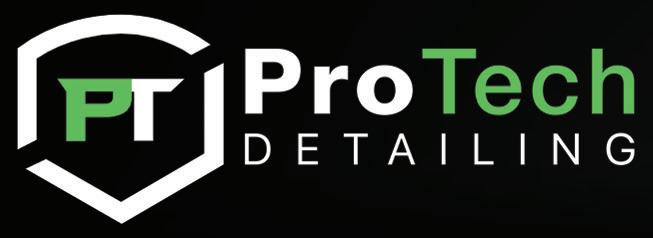


As we look to the new year ahead with the usual mixture of eagerness and trepidation, we recognize how interconnected we are. Business does not exist in silos, so we value insights from fields that touch our own, even if only peripherally.
In Business Magazine reached out to leaders of businesses in our community for their thought leadership in areas at the very foundation of our economy.


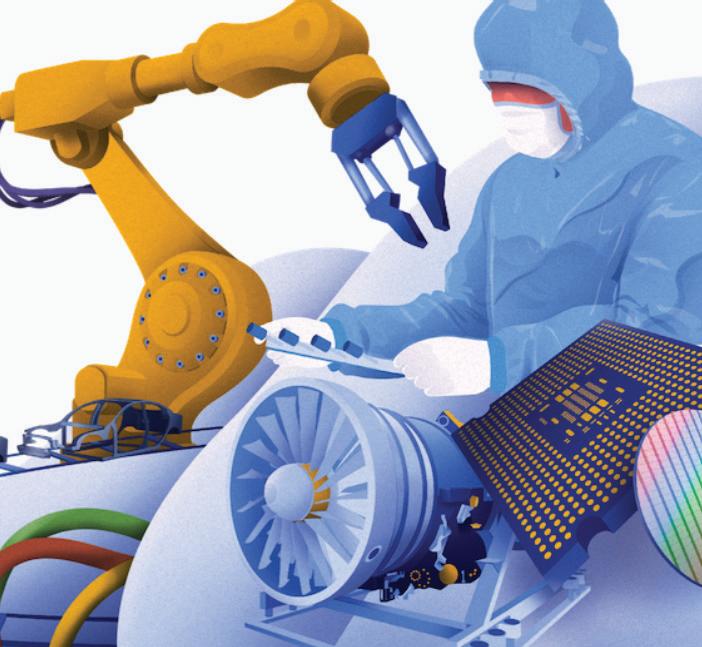
from Steven G. Zylstra of Arizona Technology Council and SciTech Institute
As we approach 2025, the global economy stands at a critical juncture. Factors ranging from geopolitical tensions to domestic policy changes shape an unpredictable landscape. Looking to next year, let me share a few of my predictions and insights into this uncertain future, focusing on the technology sector’s growth trends and the broader economic implications.
Economic headwinds dominate the horizon, with challenges such as geopolitical tensions, interest rate pressures and shifting trade policies. The continuation of three significant conflicts overseas has particularly buoyed the aerospace and defense sectors, driving demand for advanced military technologies. Yet, the high cost of borrowing complicates matters for major corporations, including those within technology, as they seek to fund innovation amidst financial constraints.
The recent U.S. presidential election adds another layer of complexity. Policies introduced by the incoming administration, particularly those surrounding corporate taxation and trade tariffs, will likely ripple through the technology sector. On the one hand, proposed extensions to corporate tax cuts and potential improvements to the treatment of R&D expenses could provide a much-needed boost. That’s especially true for semiconductor and electronics manufacturing, with both industries slated for continued growth in Arizona. On the other hand, proposed heightened tariffs — 25% on goods from Canada and Mexico and 10% on Chinese imports — could pose challenges.
Despite these challenges, the technology sector remains poised for recovery and transformation. After being heavily impacted by recent layoffs and facility closures, the semiconductor industry is expected to rebound by mid-2025. Companies like Microchip and Intel, currently scaling back operations, may find themselves reenergized by renewed demand and evolving market conditions. Meanwhile, Taiwan Semiconductor Manufacturing Company continues to push forward with three new facilities, one of which will come online in 2025.
Key areas of growth include aerospace and defense, bolstered by continued global conflicts and advancements in technology. Companies such as Raytheon and Boeing are capitalizing on demand for smart munitions and advanced military hardware. Furthermore, the United States’ potential shift toward a more hawkish defense stance could amplify these opportunities.
In the renewable energy and electric vehicle sectors, innovation remains a driving force. However, reliance on international supply chains for critical components like batteries and solar panels underscores the sector’s vulnerability to trade policies. For instance, tariffs on steel and raw materials used for solar infrastructure and materials for EV batteries could create a challenge by increasing costs, potentially slowing the adoption of clean energy technologies.
The ripple effects of the technology sector are set to influence the broader economy in profound ways. Workforce development initiatives, particularly in semiconductor manufacturing, are a bright spot. Arizona’s apprenticeship programs, for example, have demonstrated significant success, equipping workers with the skills needed to meet industry demands.
Additionally, infrastructure development will be critical to supporting this growth. As a growing hub for technology and innovation, Arizona anticipates a 35% increase in utility capacity demand by 2031. Investments in energy, water and housing infrastructure are paramount to accommodating the influx of businesses and residents drawn by the state’s favorable business environment.
While uncertainties abound, I remain optimistic about the role of Arizona’s technology sector in shaping economic growth for 2025. The sector’s
resilience, coupled with strategic policy changes and investments in workforce and infrastructure, can mitigate some of the challenges on the horizon.
However, vigilance is necessary. Geopolitical developments, trade negotiations and domestic policy shifts will require companies to remain agile, adapting quickly to new realities. Collaboration between industry leaders, policymakers and local governments will be key to navigating this uncertain terrain.
We’re heading into a season of unknowns, but our technology sector has always thrived on its ability to adapt and innovate. With the right strategies in place, it can continue to be a major driver of economic growth in Arizona in 2025 and beyond.
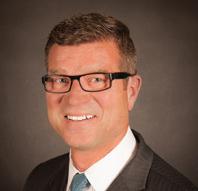
Steven G. Zylstra is president and CEO of Arizona Technology Council (www.aztechcouncil.org) and SciTech Institute (scitechinstitute.org). A renowned leader in the technology and innovation sectors, leading the Council since 2007, he was named to the Arizona Space Commission Board of Directors this past September.

from Kelly Skalicky of Stearns Bank
For 2025, I am clear-eyed about the economic and regulatory uncertainties, and I’m closely watching three key areas directly impacting the banking industry and our customers.
First, tariffs. As the U.S. economy recovered strongly from the pandemic with solid GDP growth and inflation lowering toward the Fed’s 2% target, the incoming Administration’s proposals for new tariffs are creating unexpected economic uncertainties. Like many economists, I believe the planned tariffs pose downside risks to our economy in 2025 — such as inflationary risks, higher prices for consumers and potential


trade and supply chain disruptions. Also, the Fed signaled it may need to slow rate cuts in 2025 — likely two cuts rather than the four previously projected, which may keep rates higher, longer. For the banks, this means higher costs of funds; for borrowers, it will keep costs of borrowing higher. For Stearns Bank, with more than 30,000 business customers nationwide, it is vital we continue to provide our customers high-yielding deposit services and financing solutions that position them for success in good times and when facing economic unknowns. Our steadfast commitment to customer success and our bulletproof balance sheet with nearly 20% capital are unique strengths, enabling us to be more agile and innovative in times of economic uncertainty.
Next, mass deportation plans. Mass deportation plans have been announced, which will impact everyone on a personal, community and national level. Through solely an economic lens, I believe mass deportations will create business disruptions and cause labor shortages across many industries, like agriculture, manufacturing and construction. Economists project mass deportations will drive up worker wages to levels that stifle overall economic growth. Data also shows the U.S. economy is dependent upon immigrant entrepreneurship as an economic driver. MIT reports immigrants are 80% more likely to start a business and create 42% more jobs than U.S.-born founders, highlighting the significant economic impact of immigrants in the U.S. For Arizona, economists estimate mass deportations would shrink the state’s economy by $48.8 billion annually, costing the state 10.1% of its tax revenues, and lead to the loss of 581,000 jobs. We serve many customers and communities across the country who are navigating potential impacts related to deportations, and we’re listening, understanding and supporting them in many ways.
And finally, deregulation. The new Administration is promising deregulation, including for banks, which could reduce bank regulatory safeguards, regulatory oversight and capital requirements. I may be an outlier, but I support strong regulations and increased capital requirements for all financial institutions. Stronger regulations and capital requirements create a safer-and-sound banking industry that results in more consumer protections. So, despite the enticement of deregulation or the allure of venturing into new, high-risk frontiers — like banking crypto under minimal or decentralized regulatory controls — I believe banks should resist the temptation to fuel growth by increased risk-taking with reduced
regulatory environments. We should learn the lessons of the recent SVB and Silvergate failures, both of which were preventable had regulatory safeguards been maintained. We know both (and other) failures were fueled by unchecked growth, deficient regulatory controls and insufficient capital reserves.
With the collapse of Synapse in 2024, multiple cryptocurrency organizations under litigation, and the impact of banks’ laissez-faire attitude toward FinTech sponsorships, it’s important and timely to underscore that strong regulation provides much-needed bank guardrails and consumer protections. If banking regulations are pulled back and banks are not disciplined in maintaining strong capital and regulatory controls, we can expect to see more bank failures and serious economic troubles. But whatever the regulatory landscape looks like in 2025, Stearns Bank will stay disciplined and maintain strong capital and earnings, continuing to be wellpositioned for growth to serve all our customers nationwide.
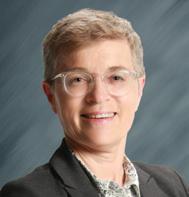
Kelly Skalicky is president and CEO of Stearns Bank, N.A. (www.stearnsbank.com). She holds a law degree and practiced in the areas of business litigation, commercial law, Indian law and commercial transactions. The daughter of Stearns Bank founder, Norm Skalicky, she began rising through the ranks at Stearns Bank by serving as legal counsel and being designated General Counsel in 2011.

from Scott Jones of Brown & Brown
As a whole, the Property & Casualty insurance market is seeing rate increases and decreases depending on the form of coverage. Here is a summary of the trends for the basic coverages a business might obtain.
Property: After a significant reduction in capacity in 2023, reinsurers are modestly increasing their appetite. We don’t anticipate
significant softening in natural catastrophe insurance and reinsurance rates. For Arizona, property within wildfire areas will continue to see significant rate pressure. Poorly performing, protected or exposed risks will likely continue to experience double-digit rate increases. For those who have a newer building with the proper controls in place, the rates will have moderate increases and, in some cases, rate reductions. Those who have property that is built before 1990 or has significant claims history will see continued rate pressure.
General Liability: Flat to 10% rate increases are anticipated for most of the marketplace, with carriers focused on risk management, higher retention and loss prevention strategies.
Business Auto: Carriers face higher claims costs driven by increased accident severity, medical cost inflation, rising repair costs and nuclear verdicts, leading to stricter underwriting standards and higher premiums in an ongoing hardening market. Companies with auto fleets and high claims will pay well above standard premiums. Insurance companies would like to see cameras in fleet vehicles as they have been proven to reduce losses and protect against false claims.
Workers Compensation: While claims frequency has decreased due to improved workplace safety and automation, claims severity is increasing, driven by medical inflation and high indemnity costs. Arizona will see a 9% rate decrease in 2025. However, insurance companies will likely continue reducing policy credits to balance out the perceived premium necessary for the risk on the account.
Executive Liability: We expect rates to remain stable, with decreases in D&O policies. Commercial crime rates will remain flat, with social engineering fraud remaining the significant driver for claims.
Cyber Risk: We anticipate rates to continue forward with low single-digit rate increases. Underwriting standards are high, and, at a minimum, businesses need to include multi-factor authentication in their security plan to receive or retain coverage. Healthcare, professional services, education and manufacturing sector policies continue to be the most affected by cyber events, with a high frequency of business email compromise, ransomware and cybercrime claims. On the other hand, we anticipate continued rate pressure on professional liability coverage over the next year.
Surety: The surety industry expects continued growth via the Access Broadband Act and significant increases in data center and
semiconductor/high-tech manufacturing buildouts.
For those with aviation exposure, the positive trend should continue with abundant capacity and a competitive insurance market.
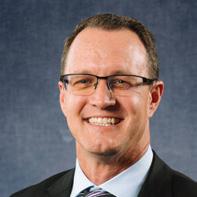
Scott Jones joined Brown & Brown Phoenix (www.bbrown.com/us) in 2003, later leading New Mexico offices to success. Returning in 2016 as Phoenix president, he achieved consistent growth while fostering community involvement and earning accolades for workplace excellence and operational leadership.
from Calvin P. Goetz of Strategy Financial Group
As we approach 2025, several economic trends are going to influence wealth management and investment strategies in the United States.
The U.S. economy is exhibiting robust growth, with the International Monetary Fund reporting an 11.4% GDP expansion since late 2019 and projecting a 2.8% increase for the current year
This growth is largely driven by significant advancements in labor productivity, which has surged by 30% since the 2008–09 financial crisis, outpacing other advanced economies. Technological innovations, particularly in artificial intelligence, are central to this productivity boost.
Bank of America forecasts a stabilization of U.S. GDP growth at approximately 2.3% in 2025, with core Personal Consumption Expenditures (PCE) inflation remaining at 2.8%. The Federal Reserve is anticipated to implement three interest rate cuts by mid-2025, bringing the terminal rate to a range of 3.75–4%. This monetary easing is expected to support economic expansion and influence investment returns.
U.S. equities have outperformed global markets, with the S&P 500 rising over 24% in 2024, driven by the technology sector. Analysts suggest that policies from the incoming administration, including tax cuts and deregulation, could further bolster U.S. market
dominance. However, potential risks such as trade disputes and rising inflation may introduce volatility.
Thematic investing, which focuses on macrolevel trends like technological advancements, is gaining traction. Investors are increasingly targeting sectors such as artificial intelligence, robotics and automation, anticipating that these areas will drive future growth. This approach allows for diversification across multiple sectors aligned with specific themes.
The ongoing Great Wealth Transfer, involving baby boomers bequeathing significant assets to younger generations, is reshaping the economic landscape. This transfer is expected to impact various sectors, including housing, education and financial markets, as younger generations prioritize different investment preferences and consumption patterns.
While the U.S. shows strong economic performance, global growth is projected to be around 3% in 2025. Factors such as new tariffs and immigration policies may slow the U.S. economy later in the year, affecting global markets. Investors should remain vigilant of international developments and their potential impact on investment.
After two back-to-back banner years in the stock market, investors would be wise to rebalance and take some profits off the table.
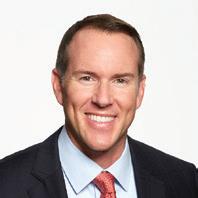
Calvin P. Goetz is CEO of Strategy Financial Group (strategyfinancialgroup.com). Goetz is author of the books Climbing the Retirement Mountain and The Retirement Roadmap. A former Forbes Finance Council member, he has also contributed original articles on Forbes.com.



from Richard Tollefson of The Phoenix Philanthropy Group
According to GivingUSA, the definitive report on charitable giving in the U.S., philanthropy has been amazingly resilient over the past 60 years. With only four years of decline over that period, philanthropy continues to grow, achieving new levels of investment each year. Many in our sector, however, believe that we are experiencing — or approaching — a major crisis in generosity. An increasing trend is for fewer donors who make larger gifts, complicated by more complexity in how donors give; greater scrutiny of the nonprofit organizations invested in; and increased diversity in the demographics, giving patterns and institutional or issue loyalty of those who give.
Philanthropy has never been rooted in the true concept of democracy, an ideal where each person’s viewpoint is equally valued, everyone has an equal opportunity to impact our economy and society, and each dollar has the same value as any other. Philanthropy is a meritocracy, in which those who have more give more (in absolute dollars, but not as a percentage of their disposable income) and, in return, receive greater recognition and influence. While those at the top of the giving pyramid give and get more, it is important to pay attention to those at the bottom and middle of the pyramid because their consistent albeit lower level of support can often be used to cover operating expenses; and they are the major donors of the future as their wealth and influence and/or passion and commitment grow.
In 2025, added to these trends of the past decades will be the questions, changes and complexity that come with a new Presidential administration. Tax breaks may be made permanent, personal wealth may rise (or appear to rise, at least temporarily), and the rich will likely become richer. That could positively impact philanthropy. On the other hand, a strained



middle class, combined with reduced government support for basic human needs, education, healthcare and more, means that there will be more people in need who must rely on the largesse of philanthropic people and institutions to close the gap. As experienced in 2016, the wave of giving to support the environment, social justice and healthcare organizations increased and accelerated, and was sustained over multiple years, because people feared that government would no longer act on their behalf, and that their personal philanthropy was critical to making a statement; expressing fear and anger, optimism or hope; and optimizing quality of life. Other donors also gave more, but in a more temporary fashion, to more conservative institutions aligned with their personal and political viewpoints.
I do not take a pessimistic view of philanthropy. I do not believe we are in a crisis. We are in times of fundamental challenge and change, and nonprofit leaders working with philanthropists must be ready to leverage and optimize that change.
I hope that we are not undergoing an existential threat to the American Way. If that happens, and if concepts of democracy, the rule of law, and a just and equal society as we have known them in the U.S. for hundreds of years goes away, all bets are off. But If that does not happen, and the political, economic and social pendulum swings — as it always has in the past — from left to right to left and on and on, nonprofit leaders working with individual and institutional philanthropists can and should be assured that people still want to build stronger communities, have clean water and air, educate their kids, support their neighbors, and create a quality of life that improves with each generation. While it is challenging to see in the day-to-day, I still believe in the fundamental good and generosity of the majority of people. I still believe people will devote their time, talent and treasure to make the world a better place. Philanthropy is the fuel that feeds that engine of positive, social change.
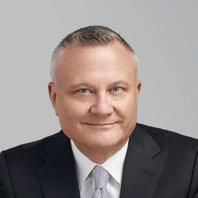
Richard Tollefson is founder and president of The Phoenix Philanthropy Group (phoenixphilanthropy.com), an Arizona-based international consulting firm serving nonprofit organizations as well as institutional and individual philanthropists.

from Scott M. Drucker of Arizona REALTORS®
The real estate sector in Arizona serves as a cornerstone of the state’s economic growth. That should continue in 2025 due to the favorable cost of living, desirable climate and business-minded environment that Arizona has to offer.
As Arizona’s population continues to climb, so too does the demand for both residential and commercial real estate. The United States Census Bureau estimates Arizona’s current population to be roughly 7.5 million people. However, according to Arizona’s Office of Economic Opportunity, that figure is expected to reach close to 7.8 million residents in 2025, meaning that real estate will play an even greater role in driving our state’s economic growth.
Arizona’s housing market has been marked by limited supply and rising prices over the last several years, creating challenges for homebuyers. However, this demand has also led to new construction projects, which will ease supply constraints as we head into the new year.
In fact, according to the REALTORS® Property Resources October 2024 Arizona Housing Report, we are already seeing positive signs. Through October 2024, the Arizona residential housing market has seen a year-over-year increase of 23.7% in listings with a year-over-year increase in sales of 9%.
Nonetheless, housing affordability remains a concern, with a median sales price in Arizona of $439,000. Although slightly higher than the median sales price across the U.S. ($419,000), it is significantly lower than the growth rate experienced over the last several years.
To address the state’s limited housing supply and high demand, there is an increased focus on the development of affordable housing and multi-family units. Incentivization for affordable housing construction — including financial subsidies, regulatory changes to zoning and land use, streamlined approval processes, and strategic partnerships between state government and private developers — will assist
in stabilizing home prices while offering more residential options. By way of example, in January 2024, the Arizona Department of Housing announced it had awarded $49 million in funding to 19 housing developers statewide to build more affordable homes and help alleviate Arizona’s housing crisis.
Although Arizona is not quite a “buyer’s market,” buyers are, and should continue to be, in a relatively stronger position than in recent years. Sellers will still see a fair market value for their property, especially if their home is competitively priced and they work with an experienced REALTOR® who has an in-depth understanding of the local market.
In addition to residential growth, Arizona’s commercial real estate sector is also undergoing a significant boom, with Phoenix in particular seeing a surge in demand for office, industrial and retail spaces. And as major companies like Intel, Taiwan Semiconductor Manufacturing Company and Lucid Motors are establishing or expanding their operations in the state, the commercial real estate market is benefiting from the flow of corporate investments. While this trend is expected to continue in Arizona’s business environment, investors and developers must still carefully consider local economic conditions, interest rates and long-term demographic trends to prove successful in 2025.
The real estate sector will also continue to play a crucial role in Arizona’s economic growth through 2025 by generating jobs in construction, architecture, engineering and related fields as new housing and commercial properties are developed. Increased property values also boost local tax revenues, allowing for investment in infrastructure and public services.
Arizona’s real estate market is well-positioned as a key component of the state’s economic expansion in the coming years. However, the real estate market is complex, as are both residential and commercial transactions. It is important for both buyers and sellers to use a knowledgeable REALTOR® to maximize available residential and commercial opportunities.

Scott M. Drucker is CEO at Arizona REALTORS®
(www.aaronline.com). These professionals help consumers navigate financial complexities such as mortgage rates and terms, appraisals and inspections, contract deadlines, and coordination with lenders. They also assist consumers in understanding local community elements like property taxes, public property information, price trends, and neighborhood details. Additional information can be found at www.hireazrealtors.com

from Vanessa Williams of CBR E
Phoenix is positioned for sustained economic prosperity in 2025, driven by significant advancements in the commercial real estate sector. The city’s economic landscape is being reshaped by robust job creation, population growth and substantial investments across various industries.
Phoenix’s economy continues to expand steadily, with job growth rates surpassing national averages. The labor market remains resilient, marked by low unemployment and rising personal incomes. Diverse industries, including technology, healthcare, manufacturing and tourism, support this economic vitality.
The CRE sector is a critical driver of this economic success. Several key trends are shaping the landscape in 2025. Demand for traditional office space is evolving as hybrid work models take hold. Companies are increasingly seeking flexible office solutions that prioritize modern amenities and sustainability. According to CBRE research, office space absorption returned to positive territory in Q3, with 31,349 square feet of space absorbed. Optimism surrounding return-to-office initiatives is expected to further strengthen office leasing activity into 2025 and beyond.
The growth of e-commerce continues to fuel demand for industrial properties, particularly near major transportation hubs. Warehouses, last-mile distribution centers and cold storage facilities are in high demand as companies emphasize efficient delivery and inventory management. Phoenix’s strategic location makes it an ideal market for these developments. Since the end of 2019, the metro has added more than 109 million square feet of industrial space, marking a 33.4% increase in total inventory. Meanwhile, the retail sector is undergoing significant transformation. While many traditional stores are downsizing or closing, experiential retail spaces offering immersive experiences are rising. Shopping centers are being reimagined as mixed-use developments that combine residential, office and entertainment spaces. For instance, the redevelopment of Paradise Valley Mall on the northwest corner of Cactus Road and Tatum Boulevard saw its first phase open in the fall. This phase includes AVE Paradise Valley, a 400-unit luxury multifamily community, and a 50,358-square-foot Whole Foods Market. Additional restaurants and retail stores are set
to open in the new year, creating a vibrant livework-play environment.
Phoenix’s thriving CRE market is attracting significant domestic and international investment. This influx of capital is funding new developments and revitalizing existing properties, enhancing the city’s economic dynamism. The diversification of CRE uses — from industrial hubs to mixed-use projects — fosters economic resilience and positions Phoenix to navigate fluctuations while sustaining long-term growth.
In 2025, the commercial real estate sector will remain pivotal in shaping Phoenix’s economic trajectory. The evolution of office spaces, the industrial boom and retail transformation collectively create jobs, attract investments and diversify the economy. These developments have ensured that Phoenix remains a dynamic and thriving city for years.
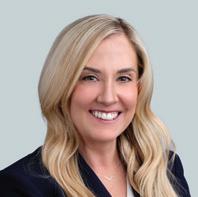
An 18-year industry veteran and native Phoenician, Vanessa Williams is Arizona market leader and senior managing director at CBRE (www.cbre.com). She oversees Arizona business operations and drives the market’s growth strategy for all Advisory Service lines, including leasing, sales, debt and structured finance, valuation, and property management.

from Wendy Briggs of Veridus, LLC
What now?
That’s what Arizona business leaders are wondering as the 2024 election is put behind us and a new slate of federal and state officials prepares to take office in January. The changeover has significant regulatory and policy implications for employers across every industry. Government relations firms like mine are hired to keep our clients ahead of the curve. These are the issues we’ll be watching closely in the months ahead.
The most significant transformation is occurring at the federal level, where Presidentelect Donald Trump and Republicans promise big changes upon taking control of the White House and both chambers of Congress.
Of high importance to employers, Trump has said he plans to extend a package of 2017 tax cuts —major portions of which are scheduled to sunset next year. Look for Trump and the GOP-led Congress to notch an early victory by moving quickly to extend the cuts and go even further — potentially reducing corporate income-tax rates and exempting workers’ tipped wages and overtime pay from taxation.
What about the other “T” word … tariffs?
Trump boasted during the campaign about imposing aggressive tariffs to correct trade imbalances with other countries, particularly China. Many economists fear this will raise costs on consumers and may spark a trade war, though it’s too early to tell whether Trump tariffs are a real threat or merely a bargaining ploy.
Immigration policy also will figure heavily in 2025, as Trump is likely to seek significant changes to asylum rules and has pledged mass deportations. Depending on the size and scope of this effort, existing workforce shortages may be aggravated across migrant-heavy industries, especially agriculture, construction and hospitality.
Arizona industries like mining are following closely Trump’s promise to roll back a raft of environmental and other federal regulations. Thousands of Arizona jobs are at stake as multiple mining projects remain in various states of regulatory and legal limbo.
The election saw legislative Republicans strengthen their control of the Arizona House (33–27) and Senate (17–13). Couple that with a Democratic Governor likely to seek re-election in 2026 and you’ve got a recipe for political gridlock.
Housing and water will again be issues that loom over the legislative session. Arizona home prices and rental costs have escalated since the onset of the pandemic, and the state now ranks among the nation’s least affordable places to live. Build our way out of it? Not so fast. The state has stopped issuing building permits in parts of Pinal County and semi-rural areas south and west of Phoenix, saying a 100-year water supply is no longer assured. The coming year will bring renewed efforts to address both issues, including


with legislation to encourage transition of irrigation-heavy farmland to housing.
Meanwhile, state policymakers face growing pressure to address shrinking aquifers in rural Arizona and an overdrawn Colorado River. Arizona is among seven states that rely on the Colorado River and continue to negotiate new terms for how to allocate its diminishing supplies. An agreement must be reached before 2026, when the existing compact expires, and the federal government may step in earlier if it appears talks are at a stalemate. Arguably no issue has bigger long-term ramifications for Arizona business and the economy.
Just halfway through her first term, Gov. Hobbs has already broken the state’s record for vetoes. Her veto stamp will again get a workout in 2025, no doubt. But there is at least one more major issue of economic significance where the Governor and GOP-led Legislature may find common ground: K–12 education.
Prop 123 is the Ducey-era funding mechanism that delivers nearly $300 million per year from the State Land Trust for Arizona K–12 schools. The measure will expire in 2025 unless voters approve an extension. Legislative negotiations fell apart last year, but look for a bipartisan legislative coalition to reach agreement and ask voters to approve a Prop 123 extension during a special election in 2025. This has real economic implications, as business leaders routinely cite the quality of local schools as a key factor they consider when determining where to locate and expand operations.
The end of the campaign always brings a sense of relief. Now, Arizona employers are anxious to see how all the promises and plans translate into policy and action. And remember: if you’re dissatisfied with this new iteration of state and federal government, the next general election is less than two years away!
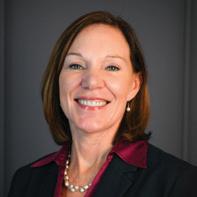
A registered lobbyist and partner with Veridus, LLC (www.veridus.com), Wendy Briggs is a lobbying powerhouse with a reputation for taking on the toughest legislative issues and an unmatched record of success. In addition to being involved in regulatory, legal and campaign activities, she is widely recognized as one of Arizona’s most accomplished lobbyists and has been named the top female lobbyist in the state.
from Alexis Glascock of Fennemore
President-elect Donald Trump’s decisions regarding the federal CHIPS Act will strongly impact Arizona’s growth as a new semiconductor manufacturing center for the nation. The CHIPS Act has been the source of large grants to Arizona chip manufacturers such as Intel and Taiwan Semiconductor Manufacturing Company.
TSMC’s $12-billion factory in North Phoenix is substantially complete. In December 2024, it announced plans to build a second factory that will open in 2026, bringing its total investment in the state to $40 billion. A large part of that investment was funded by the CHIPS Act, which also funded Intel’s plans also to build a new semiconductor manufacturing facility. Additionally, the CHIPS Act committed to a $400-million investment for Amkor, a semiconductor packaging company constructing a $2-billion manufacturing facility in Peoria.
The surge in semiconductor manufacturing in Arizona has already caused 24 suppliers for TSMC and Intel to buy, lease or otherwise announce plans to set up manufacturing in Arizona. Today, Arizona leads the nation in semiconductor investment, supplier expansions and jobs, as the Arizona Commerce Authority spells out on its website on Semiconductor Advantages (www. azcommerce.com/industries/manufacturing/ semiconductor-advantages/). Since 2020, Arizona has won more than 40 semiconductor expansions, representing more than $102 billion in capital investment and more than 15,700 direct industry jobs. These projects span the entire ecosystem, including manufacturing, advanced packaging, research and development, equipment, supply chain and workforce development.
To fulfill the semiconductor workflow, The CHIPS Act provides $50 billion to train and develop Arizona’s workers. This funding allowed Governor Katie Hobbs to commit $48 million to Maricopa Community College so it could work in tandem with these companies and build classrooms for workers to be trained or retrained as the technology advances.
The concern voiced by some is that the new administration may hold back some of those investments or redirect them toward other industries. Arizona’s newly elected Republican
majority U.S. Congressional delegation along with Governor Hobbs will need to work closely with the administration to ensure that these key investments are, in fact, provided to these semiconductor manufacturers and suppliers to assure the success of this industry in Arizona.
Other key state laws that drive Arizona’s economic engine are also front and center as we look toward 2025. HB 2720, Accessory Dwelling Units, mandates that cities with 75,000 or more residents must implement regulations before January 1, 2025, to allow at least one accessory dwelling unit in the house and one detached guest house. This law bars local governments from requiring additional parking, restricting advertising or requiring setbacks of more than five feet from the property line. There is some concern that the law will result in more shortterm rentals and provide no additional long-term housing to urban residents.
The second new housing law to watch how it impacts our economy is HB2721, establishing requirements for middle housing developments. It applies to cities of 75,000 or more and prescribes that all lots zoned for single-family residential use within a mile of the community’s central business district allow for duplexes, triplexes, fourplexes and townhomes. It also states that multiplexes can be built outside the central business district in new developments of 10 acres or more anywhere in the city. While this will lead to more density, it will likely provide more housing as builders can construct multistory condominiums and apartments in areas where it is needed but previously prohibited by local regulations. With the smaller building footprints, this will reduce the cost for builders to acquire the land.
Arizona is poised to move full steam ahead in 2025 provided the new Administration leaves critical provisions and funding of the CHIPS Act in place. At the same time, our state is set up for continued growth bolstered by new laws designed to increase construction jobs and boost the housing supply for workers wanting to live in the cities where they work.
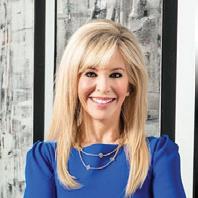
Alexis Glascock chairs Fennemore’s Government Relations and Regulatory Practice Group where she focuses on assisting businesses and associations to achieve their goals by advocating for or opposing changes to laws at the legislature, agency, county and municipal level. (www.fennemorelaw.com)

from Steve Chucri of Arizona Restaurant Association
Rising menu prices and inflation greatly impacted the 2024 hospitality industry on a national and statewide scale. In September 2024, Arizona restaurant sales were up just 1.81% over September 2023. While year-to-date, total restaurant sales reached $16.793 billion, that is only 1.92% higher than last year.
Unfortunately, this shines the spotlight on the continuing trend of declining same-store sales and Arizona diners’ pull-back on spending at restaurants. With an adjustment for inflation, Arizona restaurant sales were down 3.97% through September 2024.
However, there is hope, based on stats at the national level. According to preliminary data from the U.S. Census Bureau, in September, eating and drinking places registered a total sales of $96.4 billion on a seasonally adjusted basis. This is 1% higher than the month prior and an indication that consumer willingness to spend on dining out is perhaps regaining actuation.
Despite inflation, the hospitality industry is still strong in Arizona and continues to serve as a robust contributor to the state’s economy. This summer alone, the Bureau of Labor Statistics reported that eating and drinking places, the primary component of the total restaurant and foodservice industry, added a net 19,500 jobs in July on a seasonally adjusted basis. This uptick is compared to June, which was revised from negative 3,100 to unchanged, and May, which was revised from an added 11,200 to an added 16,500.
Meanwhile, the increase in size of the industry workforce continues to expand its distance beyond pre-pandemic levels. In June of 2024, eating and drinking places were nearly 64,000 above their employment peak of February 2020. Eating and drinking places provide jobs for approximately 80% of the total restaurant and foodservice workforce of 15.5 million.
This is indicative that eating and drinking
places are continuing their tireless efforts to rebound since the devastating impact of COVID closures and subsequent issues, including supply chain shortages and rapidly rising costs. The hospitality industry and its personnel are the backbone of the state’s economy. With the number of new restaurants opening their doors and the sheer number of people dining out on any given day, the Arizona restaurant industry continues to be an economic powerhouse for the entire state.
And, though quick service may have taken a hit in 2024, it appears the format, which really took off during COVID, is here to stay. Those looking to develop or grow in 2025 need to look at how to incorporate quick-service components into their current format, including digital pointof-sale systems, delivery options and other high-tech services that make dining out easy and convenient, without losing sight of the biggest component of success: high-quality customer service. While AI and other high-technology services are making dining out or dining to go more convenient than ever, most diners still want a hyper-personalized dining experience that can’t be replaced by a bot.
Eating and drinking places need to be responsive to what the diner wants. Trends for 2025 continue to be similar to 2024: sustainability, zero-waste practice and local sourcing, global ingredients presented in unique combinations as well as vegan and plant-based options.
In 2025, Korean and Vietnamese cuisines are going to inspire menus. Diners are looking for fermented and pickled foods, hot honey, cold brews, hyperlocal beers and wines as well as wellness drinks and creative spritzes. Customers are also looking for value and dining deals.
While trends come and go, it’s important to recognize that quality customer service and interaction transcends the trends. Creating a memorable experience for guests never goes out of style. So, while it’s crucial to embrace and encompass trends and advances in the industry into one’s hospitality business, it’s even more essential to provide an unforgettable experience, whether in a quick-service or fine-dining format.
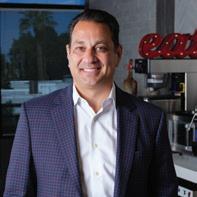
Steve Chucri is president and CEO at Arizona Restaurant Association (azrestaurant.org). During his more than 20-year career with the organization, Chucri has relentlessly advocated for and promoted businesses within the Arizona hospitality industry, which serves as an economic powerhouse for the state.
from Rachel Sacco of Experience Scottsdale
While I wish I had a crystal ball to see into the future, Experience Scottsdale leverages economic forecasts, trend reports and consumer sentiment studies from industry experts to help us hone our efforts to promote travel and tourism to Scottsdale.
Visitation has steadily increased since the pandemic, with Scottsdale welcoming 11.2 million visitors in 2023, the latest year data is available. Hotel research company STR at the time of this writing in mid-November forecasts that Scottsdale-area hotels and resorts will close out 2024 at 64.2% occupancy and will experience a slight increase in occupancy in 2025 at 65.4%. STR also anticipates Scottsdalearea hotels and resorts will see year-over-year increases in average daily rate and revenue per available room, key industry measurements. No matter what may lie ahead in 2025, we have long known tourism to be a resilient industry. According to Tourism Economics, consumer spending will experience strong growth in the coming years, led by high-income households. The latest consumer sentiment study from Future Partners reveals American travelers’ financial status and outlook remains steady, and nearly half of American travelers are optimistic their households will be better off financially in the next year. Fifty-seven percent of American travelers say travel will be a high budget priority in the near term. Longwoods International’s study found that 91% of American travelers have travel plans in the next six months, and only 28% report that concerns about their personal financial situation would impact their decision to travel.
With travel remaining a priority, what types of trips will travelers be taking this year? Booking. com surveyed 27,000 travelers to predict the travel trends that will dominate 2025, including “noctourism” and longevity retreats. Nearly two-thirds of travelers are considering dark sky destinations, and 60% of travelers are seeking well-being itineraries that lead to longer, healthier lives. Expedia also compiled its trend forecast from the responses of 25,000 consumers, determining 63% of travelers will be looking to visit “Detour Destinations” to explore less well-known and less crowded spots. “Setjetting” also remains a top trend, as two-thirds


of travelers report film and television influence their travel choices.
Meetings and conferences are essential to Scottsdale’s tourism industry, traditionally accounting for nearly half of all occupancy and revenue at Scottsdale’s resorts and uppermoderate hotels. According to American Express Global Business Travel, about two-thirds of meeting planning professionals expect larger budgets for meetings in 2025 compared to 2024.
We have so much to offer those traveling to Scottsdale, whether for leisure travel, business travel or meetings. Throughout the year, Scottsdale will benefit from the return of our tourism-driving events like the BarrettJackson Collector Car Auction, WM Phoenix Open, Scottsdale Arabian Horse Show and Cactus League Spring Training in the winter and spring, as well as Canal Convergence in the fall. We’ll also see the opening of new hospitality businesses like The Remi Scottsdale Autograph Collection and Élephante Scottsdale, and the Grand Hyatt Scottsdale Resort & Spa will complete its rebranding, renovation and expansion.
As the destination marketing organization for the City of Scottsdale and Town of Paradise Valley, Experience Scottsdale will continue to share our destination’s stories and promote local hospitality businesses to potential visitors, meeting planners, travel professionals and media around the globe. Our programs and promotions will reach new audiences and new markets, helping drive leisure travel bookings, secure group business and generate positive media coverage. Scottsdale’s visitors generate $3.5 billion in annual economic impact and support the livelihoods of more than 27,000 people in the community, and it will remain an important economic driver not only for the city but also for the state in the year ahead.
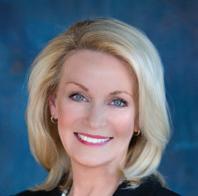
Rachel Sacco is president and CEO of Experience Scottsdale (www.experiencescottsdale.com), which she has led for nearly 40 years. In 2016, the Past Presidents’ Council of the Scottsdale Area Chamber of Commerce inducted Sacco into Scottsdale’s History Hall of Fame, recognizing her contributions to the hospitality industry.

from Sintra Hoffman of WESTMARC
The West Valley is owning the music scene. Consider: When Metallica toured in 2023, the band visited only eight cities nationwide — and Glendale was one of them (State Farm Stadium).
The VAI resort is coming online as a game changer, with its design focused on amplifying the music experience over and above offering an industry-leading concert venue.
Desert Diamond Arena in Glendale moved from hockey to attracting more concerts and the new home of the Arizona Rattlers. The departure of the Coyotes opened up opportunity for the city to invest in renovations to strengthen its attraction as a concert venue; the recently released details of the arena’s dramatic $42 million transformation from a traditional sports arena into a premier “music mecca” and entertainment destination spotlight that Glendale has become one of the largest entertainment and sports hubs in the western United States.
Set for completion in spring 2025, Desert Diamond Arena’s reimagination spans nearly 25 redesigned spaces in the venue and is expected to redefine live entertainment, offering fans dynamic ways to connect and celebrate their shared passion for music and events.
We’ve been known for sports and entertainment by attracting the Superbowl, Final Four, NASCAR Championship Race and other events that draw large, out-of-town visitors. But these venues are now hosting concerts in their off season.
Broader than the individual venues, we have
exciting entertainment districts. The West Valley’s own downtown, Westgate, has a lot of unique restaurants that are always packed. It’s exciting to see the new and unique restaurant and entertainment venues such as Chicken N’ Pickle, Pop Stroke, Johnny’s Chicken and Waffles who all opened their first Arizona locations in the West Valley. Hotels as well, such as the boutiquestyle A Loft.
In the past four to five years, pretty much every West Valley city has started creating its own downtown as a mini entertainment center. The Boulevard in Avondale is a great walkable concept, ready to serve race and concert visitors in the area. GSQ in Goodyear is the West Valley’s newest downtown with anchor entertainment: The Stillery, offering live music nightly, has definitely leveled up the region’s nightlife. And the Village at Prasada — offering family entertainment with Fat Cats, bowling, movies and more — is part of the post-pandemic trend of people not wanting to drive any distances but rather stay local.
Desert Diamond Casino has a second property on the verge of opening as I pen this 2025 forecast, Desert Diamond White Tanks at San Lucy, further bolstering the West Valley’s entertainment repertoire. Sam Fox just opened Blanco and North Italia in a new walkable section of P83, with the West Valley’s first Postinos as their neighbor.
We anticipate continued growth to also increase visitors to our other attractions, which include outdoor recreation at Lake Pleasant and the White Tank Mountains, and cultural draws such as the Desert Caballeros Western Museum in Wickenburg and Theater Works in Peoria.
The West Valley already attracts more than 20 million visitors annually and is shaping up to be its own tourist destination.
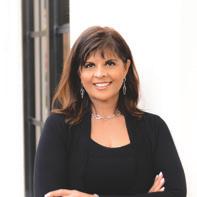
An influential leader, Sintra’s career is reflective her values — strengthening communities through sustainable relationships. With more than 25 years of experience in Arizona, she serves as president and CEO for WESTMARC (www.westmarc.org), focusing on growing the West Valley’s economic vitality within the 15 communities she represents.


Nicole Neumarker has more than 20 years of enterprise software experience setting strategic direction, leading people and ensuring results across business, operations, technology and finance functions.
As chief operating officer at WorkForce Software, she oversees solutions product strategy and delivery, directing Product Development, Product Management, Cloud Services, Global Support and Professional Services organizations. Together, these groups design, develop, deliver and support industry-leading products to meet global customers’ requirements and ensure a high-quality, scalable and secure cloud SaaS software delivery platform for WorkForce Software and its customers. Neumarker holds a degree from Brigham Young University and is an active female leader in STEM programs.
WorkForce Software, now part of ADP, is the No. 1-rated workforce management solution for large, global employers and the first to deliver integrated employee communication capabilities. workforcesoftware.com
The true potential of AI lies in its capacity to empower and uplift the workforce
by Nicole Neumarker
Businesses often leverage technology to gain or maintain a competitive advantage. This can come in many forms, from market expansion to new business models to new solutions for growth in order to capture additional or more profitable market share. With a growth focus, it can be easy to overlook or underestimate the effort required to ensure their workforce is prepared to help them meet business demands.
Employees should be tapped to bring expertise, creativity and dedication to work. They are the ones who translate the company’s vision into action, forge meaningful connections with customers, and execute business plans. In short, tapping into their insights and creating alignment can set a business apart. Off-loading work that can supplement their actions, create insights faster and/or make their work more efficient and effective is a place to look to AI.
Today’s employment landscape shows just how valuable the workforce is to a company — according to the U.S. Chamber of Commerce, there are 8 million job openings but only 6.8 million unemployed workers. What’s more, the Bureau of Labor Statistics reports that total factor productivity increased by 0.7% in 2023, significantly improving from 2022’s 1.6% decrease.
Yet, employees can bring more to the table. This is where artificial intelligence comes into play.
Many businesses and industries are still early in their ability to leverage AI to optimize processes, gain valuable insights and make data-driven decisions. However, the true potential of AI lies not just in its ability to streamline operations but in its capacity to empower and uplift the workforce.
By integrating AI technologies into HR processes and workforce management strategies, companies can create a more supportive, engaging and productive work environment for their employees. AI can automate repetitive tasks, provide personalized training and development opportunities, uncover root-cause issues and detect patterns that can be leveraged proactively to change business outcomes.
Among the most significant benefits of future proofing with AI are cost savings and labor optimization. By automating repetitive and time-consuming tasks, AI can help reduce the workload on employees, allowing them to focus on highervalue activities that require human intuition and creativity. Alleviating these tasks increases productivity and efficiency, helps reduce turnover rates and, ultimately, lowers overall labor costs. Employees who feel their time and skills are utilized effectively are more likely to remain engaged and committed to their roles. According to Gallup, “Highly engaged

business units realize an 81% difference in absenteeism and a 14% difference in productivity.”
Moreover, AI-powered tools can enhance employee engagement and operational efficiency by facilitating better communication and collaboration across the organization. This is particularly crucial for the deskless workforce, who often face challenges in staying connected and informed. By leveraging AI to personalize employee experiences and provide easier access to information, companies can bridge the gap between frontline workers and management, fostering a sense of inclusion and belonging.
For example, a company could use AI to identify employee scheduling patterns or employee skills and training that may correlate with an increase in safety incidents. HR and operations professionals can devote time to proactively adapt procedures to reduce employee fatigue and improve safety based on information about what will have the greatest impact. As another example, companies can use generative AI to create intelligent search tools that help employees find relevant documents, templates and other resources, further streamlining processes and reducing the time spent looking for information or on administrative tasks.
Another key benefit of AI in the workplace is its ability to improve focus on employee wellness. By analyzing real-time work data, AI algorithms can identify patterns and trends that may indicate potential impacts to employee engagement. This proactive approach allows organizations to address concerns before they escalate, creating a safer and more supportive work environment. Additionally, AI can help reduce workplacerelated stress and burnout by optimizing workloads and ensuring employees have the resources and support needed to do their best work.
Beyond the internal benefits, AI can help companies better serve their customers by enabling faster, more personalized experiences. By automating routine customer service tasks and providing instant access to information, AI can free up employees to focus on more complex and nuanced customer interactions. This improves customer satisfaction and allows
By automating repetitive and time-consuming tasks, AI can help reduce the workload on employees, allowing them to focus on higher-value activities that require human intuition and creativity.

employees to develop deeper, more meaningful relationships with the people they serve.
Organizations must carefully navigate a range of technical, ethical and cultural considerations to ensure that AI is deployed responsibly and effectively.
One of the most significant challenges is developing comprehensive AI policies that govern these technologies’ ethical use and deployment. As AI becomes more sophisticated and pervasive in the workplace, organizations must have clear guidelines to ensure it is used fairly and transparently, covering issues such as data privacy, algorithmic bias and the potential impact of AI on job displacement.
To develop effective AI policies, organizations must engage in a collaborative process that involves stakeholders from across the business, including HR, IT, legal and employee representatives. This process should be guided by a set of principles that prioritize the well-being of employees and the responsible use of AI technologies. Organizations can build trust and confidence in AI while mitigating potential risks and unintended consequences by taking a proactive and inclusive approach to policy development.
Another critical challenge is ensuring that the benefits of AI are accessible to all employees, regardless of their role or technical expertise. While AI can potentially transform the way we work, it could exacerbate existing digital divides and create new barriers to entry for certain groups of workers. Organizations must provide training and support to mitigate this risk and help employees develop the skills and knowledge needed to work effectively with AI.
The potential applications of AI in future proofing the workforce are vast and may take some time to be fully realized. Organizations can unlock new levels of efficiency, insights and employee empowerment by taking a phased approach to AI implementation. In doing so, they can create a more agile, resilient and engaged workforce better equipped to navigate the challenges and opportunities of the future of work.
As AI becomes an increasingly integral part of our daily lives, we must not lose sight of what matters most: people. The key to success is approaching AI as an extension of our human capabilities, not a full replacement for all employees. It’s about finding the right balance between the efficiency of automation and the ingenuity of human creativity. It’s about using data not to replace human judgment but to inform and enhance it.
Instead of businesses looking to wield AI externally, their own employees can be excellent stewards of the technology and improve the organization from within.

Over the past two decades, monetary policy has been deployed in unprecedented ways, as central banks attempted to mitigate the adverse consequences of the 2007–2008 financial crisis, the COVID-19 global lockdown and recent inflationary surges. In Monetary Economics and Policy, Pierpaolo Benigno offers a new way to understand the potency and effectiveness of monetary policy. He examines how central banks control the value of their currency amid competition from cryptocurrencies and private money-like securities; discusses the desirability of inflation targeting for macroeconomic stabilization; and explores theoretical grounds for the unconventional monetary policies seen in the recent period of zero nominal interest rates. He accompanies his analysis with an innovative visual representation of the New Keynesian model and inflation-targeting policies.
Monetary Economics and Policy: A Foundation for Modern Currency Systems
Pierpaolo Benigno
Princeton University Presss Available 1/7/2025
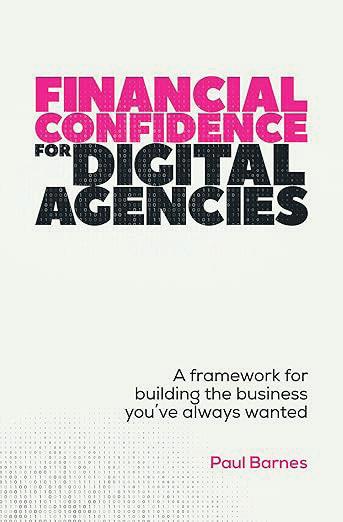
$49.95
432 pages
Financial Confidence for Digital Agencies addresses those who are short-changing their digital agency with poor financial management.
Business owners have a distinctive vision for their business, which means they need a distinctive financial plan and benchmarks to get there. And that means making finance a core part of the business, not a support function. Businesses should stop comparing themselves to other businesses and start getting clear on what results they want and confident about how to get them. Paul Barnes has been helping digital agencies achieve this for years; in this book, readers will discover his simple methodology and scorecard, and start their own journey to financial maturity.
Financial Confidence for Digital Agencies: A framework for building the business you’ve always wanted
Paul Barnes
Practical Inspiration Publishing Available 1/28/2025
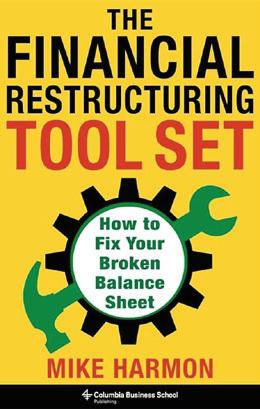
$36.99
198 pages
Excessive corporate debt can lead to financial distress, which prevents a business from realizing its full potential. When this occurs, a company transforms into a “zombie,” incapable of making essential investments for its future growth or attracting the resources required to execute its business strategy effectively. Restructuring veteran Mike Harmon provides an indispensable go-to guide tailored for executives, business owners, boards of directors, creditors, advisors and investors grappling with financial distress. He equips stakeholders with an invaluable tool kit for mending a company’s fractured balance sheet while demystifying complex techniques and explaining restructuring methods in an accessible fashion.
The Financial Restructuring Tool Set: How to Fix Your Broken Balance Sheet
Mike Harmon $45
Columbia Business School Publishing On shelves and Online 360 pages
By analyzing real-time work data, AI algorithms can identify patterns and trends that may indicate potential impacts to employee engagement. This proactive approach allows organizations to address concerns before they escalate, creating a safer and more supportive work environment.
It’s important to recognize that the industry experiences a lot of variation from one year to the next by
Kyle McMillian
In any metropolitan area, one of the biggest indicators of growth is construction. Phoenix saw 10.7 million square feet of industrial projects this past year, according to the November 2024 Industrial Market Report from CommercialEdge, opening the door for continued growth in the industrial and manufacturing space and more opportunities for construction companies. Heading into 2025, as interest rates have begun to drop, it is expected even more projects will commence.
With so much local activity, finding the right bank to work with can be challenging for construction companies. For starters, the industry experiences quite a bit of variation as revenue is project-based, which can vary from one year to the next. Other variables like weather conditions, the broader economic environment and vacancy and absorption rates also impact construction, all of which are largely outside a contractor’s control. These nuances can make it difficult for banks without experience in banking contractors to provide resources that can aid a company’s working capital management — resources that are critical to construction companies and contractors.
To find the right fit in a bank, business owners should begin by noting the intricacies of the business. The three questions below can help outline the structure and support to consider when reviewing banking relationships.
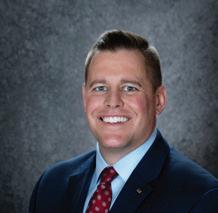
in banking both small and large general contractors and trade construction companies.
UMB has been banking the construction industry since its inception in 1913 and recognizes that each client has unique needs. umb.com
Question 1. What are the business’s specific banking needs?
Even within the construction world, companies approach business differently. For example, general contractors and subcontractors operate differently.
Typically, general contractors have fewer hard assets, or “collateral,” and fewer financing needs to run their business. In this case, a banking relationship might focus more on setting up accounts receivable solutions like online payments and ACH capabilities.
In the case of subcontractors, who are typically buying tools and equipment while being paid progress payments throughout the project, there may be a need for bank debt and lines of credit to support those costs.
When it comes to securing financing, banks need to understand the timing and consistency of revenue and profit margins from year to year. For example, how much revenue is tied to any one customer? Additionally, providing a backlog, as well as a summary of projects in various stages of negotiation, can provide insight into a company’s future performance. Ultimately, a bank will want to understand how a company has
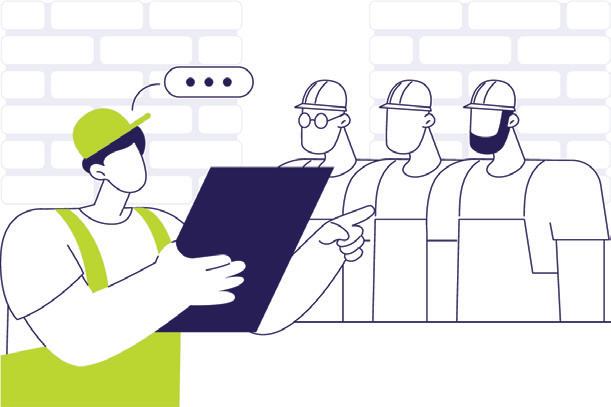
historically performed and how likely that performance will continue.
The right banker can help keep owners updated on new banking industry technologies and systems the company may want to utilize to help maximize cash flow and streamline processes. Starting a business begins with the right working capital capacity, but success often comes down to using the right tools.
One tool construction companies are using to streamline payables is card payment programs, such as Visa Payables Automation (VPA), which allows them to move away from paper checks. This is often a good fit for construction companies, as they have multiple payables to manage. VPA can be used to automate the procure-to-pay process and can enhance reconsolidation through reporting. Setting this up can potentially improve the payables process for both the company and the recipient.
Question 3. Is the business protected from financial risk?
Construction companies are very familiar with the need for risk management tools specific to the industry, but they should also consider how to manage risk when it comes to their bank accounts.
It’s important to understand the company’s payment processes, any fraud risks associated with those payment types, and protections that can be added to attempt to protect against bad actors. For example, for companies that write a lot of checks, tools such as Positive Pay can be utilized to potentially mitigate some of the risk of attempted check fraud.
Next, it’s time to identify the best fit. Construction companies want a bank that understands their business and the industry’s nuances. Some questions to ask a bank include:
• What is the bank’s experience in banking contractors?
• How does the bank handle industry cycles?
• Does the bank have any references in the industry?
• How does the bank look at lending? Does the bank lend on progress receivables, require borrowing base reporting, allow borrowings on bonded receivables, etc.?
Those currently sidelined with working capital financing should reevaluate the business needs and complexities and create a game plan alongside the right institution.
Nuances can make it difficult for banks without experience in banking contractors to provide resources that can aid a company’s working capital management — resources that are critical to construction companies and contractors.











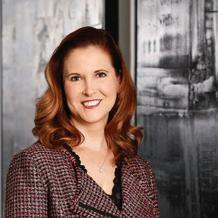
Attorney Andrea Marconi serves as chair of Business Litigation at Fennemore. Her areas of practice include business and complex litigation, real estate, banking law, and health care.
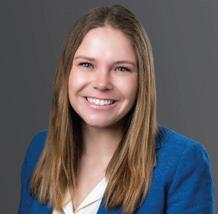
ClaireMacCallum is an attorney with Fennemore, practicing in business litigation. fennemorelaw.com
by Andrea Marconi and Claire MacCallum
We are all conditioned to click “agree” to terms and conditions when we get a new app, update our cell phone operating system, or purchase a product or service online. But most of us do not take the time to read what we have agreed to. And many do not fully appreciate that such terms and conditions are binding contracts — even if the user did not read them before clicking “agree.”
Courts in Arizona and around the country routinely enforce these agreements, called “clickwrap” agreements. They govern the relationship between a company and a user, requiring users to click a button on a website or other interface affirming that they have read the terms and conditions before accessing services. So long as it is clear what the user is agreeing to by clicking “agree” or “accept,” has an opportunity to review the terms being agreed to, and there is a record of the user’s agreement by “click,” these agreements are generally enforced.
Clickwrap agreements often include important terms such as warranties, limitations on liability, consent to the use of personal data and waiver of the right to pursue a lawsuit in court with a jury in the event of a dispute.
We all are responsible for our own decisions to click through and accept these agreements without reading them first, but what happens if we allow someone else access to our online account, such as a food delivery service or social media account, and that other person clicks “agree” when new or updated terms and conditions are presented? Are we held to these terms even if we did not agree but someone else did on our account?
A New Jersey court recently said, yes, under certain circumstances, users can be bound to terms and conditions on their online account even if someone else clicked “agree” after logging into their account. The New Jersey court found that the plaintiffs’ minor daughter assented to an arbitration provision contained in the most recent version of Uber’s Terms of Use when she checked the box next to the statement: “I have reviewed and agree to the Terms of Use,” and pressed “Confirm” in the app prior to using her mother’s Uber Eats account to order a pizza.
Months later, the plaintiffs sued Uber for injuries they suffered from a car accident during an Uber ride when the driver ran a red light. In response to the lawsuit, Uber moved to dismiss the suit and compel arbitration because the plaintiffs had agreed to Uber’s arbitration provision through the clickwrap agreement. In reply, the plaintiffs argued that their minor daughter had consented to Uber’s most recent Terms of Use and, therefore, the plaintiffs themselves did not assent.

Ultimately, the arbitration provision was deemed valid due to the clickwrap agreement, despite the fact that the plaintiffs’ minor daughter, and not them, had agreed to Uber’s Terms of Use. The court found that, even though the plaintiffs’ daughter most recently agreed to Uber’s updated Terms of Use, the agreement was in the plaintiff mothers’ account, which she allowed her daughter to use and the plaintiff had herself agreed to three prior versions of the Terms of Use, which all contained an arbitration provision.
This court ruling should serve as a warning to consumers to read through the terms and conditions they are assenting to before clicking “I agree.” Although Arizona has not explicitly addressed the issue of whether another person can bind the user to a clickwrap agreement in the user’s account, courts in Arizona and around the country routinely enforce these types of agreements because they require active consent by the user, putting users on notice of the terms and demonstrating mutual assent.
Consumers should be particularly aware that online terms and conditions may include arbitration clauses that waive the right to commence a lawsuit with trial by jury, forum provisions dictating what state may decide a potential future lawsuit, clauses limiting liability for the business, code of conduct policies, intellectual property clauses, and procedures regarding data privacy. Consumers should ensure they understand the extent of their obligations and rights prior to assenting to the terms and conditions. Given the recent New Jersey case, users who share joint accounts should also check that they understand what another account user has agreed to.
For businesses, recent court cases clarify that clickwrap agreements are binding contracts when done properly. To create a valid clickwrap agreement, businesses should ensure that the terms are clear and transparent, the user has an opportunity to review the terms before agreeing, and the consumer actively consents to the terms by opting in through a click or other affirmative means.
Although Arizona has not explicitly addressed the issue of whether another person can bind the user to a clickwrap agreement in the user’s account, courts in Arizona and around the country routinely enforce these types of agreements because they require active consent by the user, putting users on notice of the terms and demonstrating mutual assent.

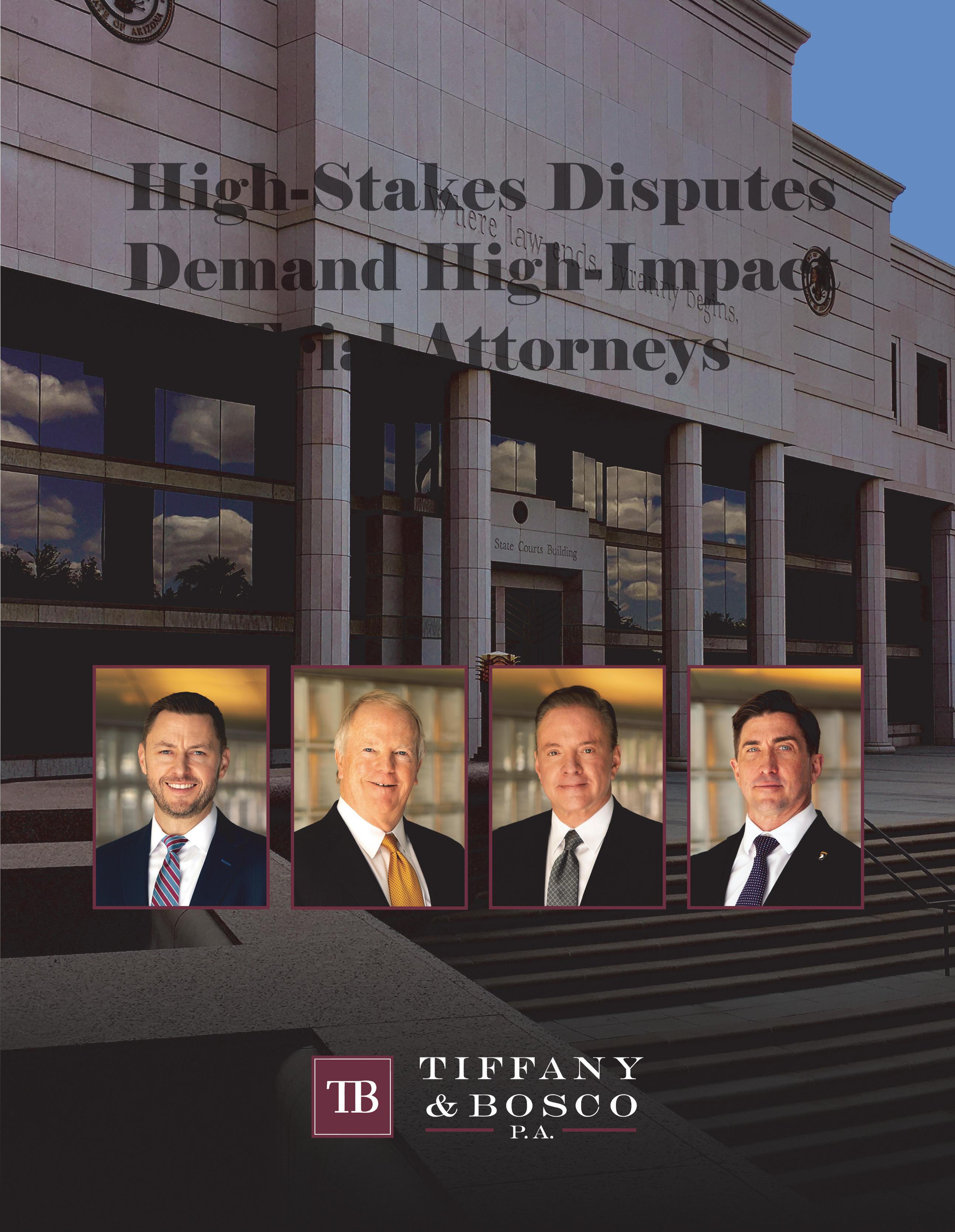

The Arizona Lottery continues to fuel vital programs across the state, supporting education, health, economic growth and conservation. From funding scholarships to improving public transit and preserving wildlife, these contributions create a lasting impact in Arizona communities.
Key Figures:
Higher Education:
$37 million
Health & Human Services:
$35.7 million
Business & Economic Development:
$14.9 million
Environmental Conservation: $10 million
State General Fund: $217.3 million
Building a better future one ticket at a time by
Tyler Butler
The Arizona Lottery has been a transformative force for good since its establishment in 1981, creating far more than winners with its games of chance. Behind every Scratchers ticket and Powerball play is a mission to fund vital programs and initiatives that shape the lives of Arizonans and the state’s future. Through its philanthropy and community engagement, the Lottery has become a cornerstone of hope and opportunity, contributing more than $5.6 billion to programs in higher education, health and human services, environmental conservation, and economic and business development.
This focus on giving back has been central to the Lottery’s identity. “At the heart of our mission is a deep-rooted dedication to empowering Arizona’s communities,” says Alec Thomson, executive director of the Arizona Lottery. “The programs we support are catalysts for positive change, enabling us to fund initiatives that empower vulnerable Arizonans, preserve our stunning natural landscapes, increase access to world-class education, and build a thriving economy.”
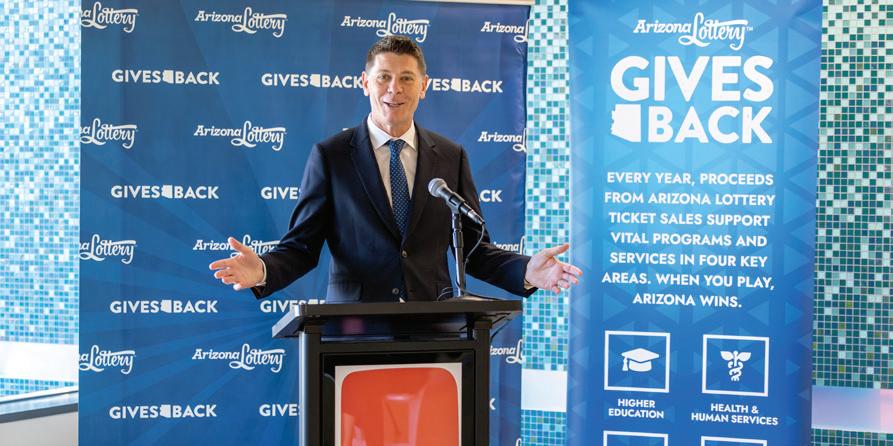
Charitable Campaign, supporting more than 400 nonprofits in partnership with Valley of the Sun United Way.

Tyler Butler, a trailblazer in ESG and corporate citizenship, has led Fortune 500 sustainability programs, contributed to two IPOs and founded Collaboration for Good. With degrees from ASU, Boston College and Cornell, she writes for top publications and serves as head of Public Affairs for Phoenix Rising FC. collaborationforgood.com
State law mandates that the Arizona Lottery funds 17 specific programs, ensuring that ticket sales contribute directly to initiatives that benefit all residents. Among these beneficiary organizations are Court Appointed Special Advocates; the Arizona Supplemental Nutrition Program for Women, Infants, and Children (WIC); and the Department of Game and Fish’s Heritage Fund. Beyond its mandated contributions, the Lottery has expanded its impact through its Gives Back program, which has provided more than $2.8 million to local nonprofits in just the past six years.
These partnerships have empowered a diverse range of initiatives. From supporting Habitat for Humanity of Northern Arizona’s Timber Sky Starter Home program to backing Phoenix Children’s Foundation’s Homeless Youth Outreach efforts, the Lottery’s contributions have extended far beyond financial assistance. Sarah Beaumont, M.D., medical director for the outreach program, highlights the importance of this collaboration: “This partnership is a significant step toward addressing the health needs of homeless youth in our state. Through contributions from valued partners like the Lottery, we aim to create a safe haven where children and youth can receive the support they need to overcome challenges and thrive.”
In addition to funding, the Arizona Lottery fosters deeper community engagement by encouraging employee volunteerism. Team members have participated in initiatives with organizations like the Arizona Association for Foster and Adoptive Parents and Habitat for Humanity, where they have taken part in hands-on efforts to build stronger communities. Employees also contribute through the State Employees
The Arizona Lottery’s commitment to environmental conservation is another standout aspect of its work. Programs like the National Forest Foundation and the Department of Game and Fish’s Heritage Fund help protect the state’s unique landscapes and wildlife. These initiatives underscore the Lottery’s vision of creating opportunities to give while safeguarding Arizona’s natural beauty for future generations.
At the helm of the Lottery’s outreach efforts is a leadership team deeply invested in community engagement. Thomson serves on the board of Friends of Public Radio and the State Forty-Eight Foundation, while Chief Marketing Officer Chris Rogers lends his expertise to the Phoenix Children’s Foundation. Their dedication reflects the Lottery’s broader commitment to building partnerships that make a tangible difference.
Governor Katie Hobbs, a staunch supporter of the Arizona Lottery’s initiatives, encapsulates its impact: “The collaboration between Habitat for Humanity of Northern Arizona and the Arizona Lottery is a powerful example of how we can unite to support our neighbors. The Timber Sky Starter Home program is not just about building houses; it’s about building stronger, more resilient communities.”
The Arizona Lottery’s vision, encapsulated in its mission to create moments to dream, chances to win and opportunities to give, is realized in every dollar it transfers and every life it touches. From funding scholarships to supporting foster children, its work goes beyond immediate impact, fostering a legacy of hope and progress.
As Arizona continues to grow and evolve, the Lottery remains steadfast in its role as a driver of community empowerment and economic development. Its contributions have sparked change, uplifted the vulnerable and inspired collective action, demonstrating that a ticket to dream can also be a ticket to do good.
Arizona Lottery arizonalottery.com
Through its philanthropy and community engagement, the Lottery has become a cornerstone of hope and opportunity, contributing more than $5.6 billion to programs in higher education, health and human services, environmental conservation, and economic and business development.
For over 40 years, the Arizona Community Foundation has supported nonprofits and students across our state by mobilizing the collective passion and generosity of thousands of Arizonans.
When you are ready to take the next step in your personal charitable giving journey, we are here to help you achieve your goals.
Samantha McIntosh is the content manager at Valley of the Sun United Way. Valley of the Sun United Way is creating Mighty Change throughout Maricopa County. Information on the program and how to get involved is available on the website. vsuw.org
by Samantha McIntosh
In a time when people spend an average of 10% of their day on social media, organizations must recognize the vital role this medium plays in their marketing strategy. The use of social media allows organizations to maximize visibility and brand recognition, which, in turn, will bolster sales or fundraising efforts, increase awareness and garner a larger audience for activating community support.
Social media is ever-growing and evolving to meet the current needs of target audiences. The benefit of this expansive collection is the ability to target niche and varying audiences through individual social platform strategies. It offers a vast and dynamic opportunity to showcase work, highlight partnerships and underscore the importance of the organization’s impact in its targeted areas.
In addition to conveying messaging and overarching brand, social media is a valuable leveraging agent when participating in events, building new partnerships, driving business and initiating an awareness or giving campaign. To gain the highest return on social media implementation, it is essential to utilize targeted and unique content in combination with tools that will elevate visibility and foster authentic and recurring engagement.
With the activation of unique online social identities, organizations should research trending and high-traffic hashtags relevant to their brand, content and audience. From these findings, organizations can incorporate active and trending hashtags, imagery and audio, allowing them to use platform algorithms to obtain higher visibility among new and existing audiences.
As organizations increase relevancy and expertise in the social space, unique brand-specific items, including hashtags, can be utilized to cultivate a collective “homebase” for their online community. Through this, engaged audiences can easily locate relevant posts and gain a better understanding of values, goals and messaging.
Following social media accounts parallel to the organization will build mutually engaged relationships. Accounts to consider include like-minded organizations, on-brand influencers, government officials and agencies, current and potential sponsors, media outlets, local venues and other audiences that can provide support, collaboration and message amplification. Creating authentic interactions and online relationships can translate into valuable support and help the organization stay informed of upcoming events, panels and roundtables it can participate in.
When generating organic content, organizations should first identify opportunities that create the content for them. For example, engagement and fundraising events the organization is participating in, hosting or sponsoring naturally provide unique and targeted visuals as well as stories, information and interactive topics.
Social media does not call for expensive camera equipment, which is ideal for budget-conscious organizations. The enhancement of cell phone technology makes capturing photo, video and audio content easy and affordable. However, static photos and written posts alone are no longer sufficient when it comes to effectively using most social platforms. Video is key to portraying a diverse and relevant brand.
When content is captivating and entertaining, as video often can be, audiences have a higher likelihood of sharing to their personal digital community, which creates longer engagement and an amplified opportunity to deepen audience connections. When it comes to video, the longer it is, the less likely audiences are to view and share. A good rule of thumb is to keep videos under 55 seconds.
Real-time content is an additional opportunity to pull audiences in and give them diversified content. Unlike carefully curated content for feeds and highlights, stories and live feeds give a more authentic look into an organization and its work.
One prime time to utilize live content is during events. By posting short video clips, key talking points, event details such as attendance numbers, fundraised amounts and participating sponsors, online audiences can feel as if they are part of vthe event.
Post-event recaps that include participants, volunteers, collaborators and sponsor gratitude are valuable not only for the organization’s current online community, but they can also play a key role in promoting future events and soliciting return and new sponsors. Utilizing account tagging and hashtags to cross-promote collaborators demonstrates the value and appreciation an organization places on its community through mutual recognition and promotion. This paves the path to build long-term relationships and leave a positive, lasting impression on those involved at all levels.
Social media is a huge part of everyday lives but, with limited resources, organizations can easily dismiss its importance. However, with social media’s ability to provide high-impact marketing at no additional cost, organizations cannot afford to overlook it any longer.
Engagement and fundraising events the organization is participating in, hosting or sponsoring naturally provide unique and targeted visuals as well as stories, information and interactive topics.







A new standard for the uncompromising SUV, Lucid Gravity lets you have it all, with epic range, electrifying power and incredible technology that doesn’t just move its drivers — but moves them. This is an SUV with the soul of a sports car. With up to 828 horsepower, outpacing and outmaneuvering the competition is what Lucid Gravity was born to do.
Lucid has reimagined and reengineered every inch to create more space than nearly any other SUV, making room for life and everything in it. With spacious seating for up to seven adults and completely fold-flat second and third rows, there’s enough space to bring everybody along for the ride — and all their stuff. The cabin is so versatile, it defies all expectations. With up to 120 cubic feet of cargo space and countless seat configurations, it can effortlessly convert from daily drives to surfing vibes in seconds.
Thoughtful, ingenious extras abound, with tray tables that give a practical additional surface, ports and outlets keep



users connected, and clever consoles store all of each person’s essentials within arm’s reach, no matter where they’re sitting. With an EPA estimated range of up to 450 miles, it frees the driver to take the scenic route — there and back again — without worrying about where to charge.
Drivers can head out every day with a full charge thanks to the Lucid Connected Home Charging Station, which can replenish the battery overnight, and the confidence of knowing they’re behind the wheel of an SUV with a steadfast commitment to safety, backed by advanced engineering and sophisticated technology.
Lucid Gravity isn’t just a way to get around; it’s a place to work, unwind or spend time with loved ones. Mike Hunter
Lucid lucidmotors.com/gravity
In this fast-paced world, reputation is everything. Businesses may need to prioritize response to unexpected hits to their brand.
Subscriptions to the following can help with fast-fix marketing and events exposure:
• Adobe – design and photos adobe.com
Software company offers a wide range of programs from web design tools, photo manipulation and vector creation through to video/audio editing, mobile app development, print layout and animation software.
• Canva – design canva.com
Canva is a free-to-use online graphic design tool available to create social media posts, presentations, posters, videos, logos and more.
• Hootsuite – social media hootsuite.com
Platform enables users to schedule, engage, monitor and analyze social media posts, all in one user-friendly dashboard.
• Eventbrite – event ticketing eventbrite.com
Eventbrite is a global self-service ticketing platform for live experiences that allows anyone to create, share, find and attend events, from major music festivals and marathons to conferences and fundraisers to local community events and niche gaming competitions.
—Mike Hunter


MSRP: $94,900 EPA Range: Up to 450 mi
Charging Speed: Up to 200 mi in 15 min. Power: Up to 828 hp
Smart Driving Is a Dream: Harness smart driving and parking assistance features with DreamDrive™, which senses a car’s surroundings and supports the driver along the journey. Lucid Air was the first electric vehicle offered with the combination of an advanced sensor suite, high-resolution LIDAR, a driver monitoring system and a fully redundant platform. Now available on the Lucid Gravity as well
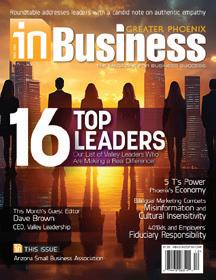

Tender, slow-cooked beef complemented by a rich consommé for dipping
$6 a la carte

en Nogada
A classic Mexican dish with a flavorful stuffing of meat and dried fruits, topped with a creamy walnut sauce and pomegranate seeds
$22

Tampiquena
A grilled skirt steak topped with Oaxaca cheese, charred green chili and accompanied by rice and beans
$18
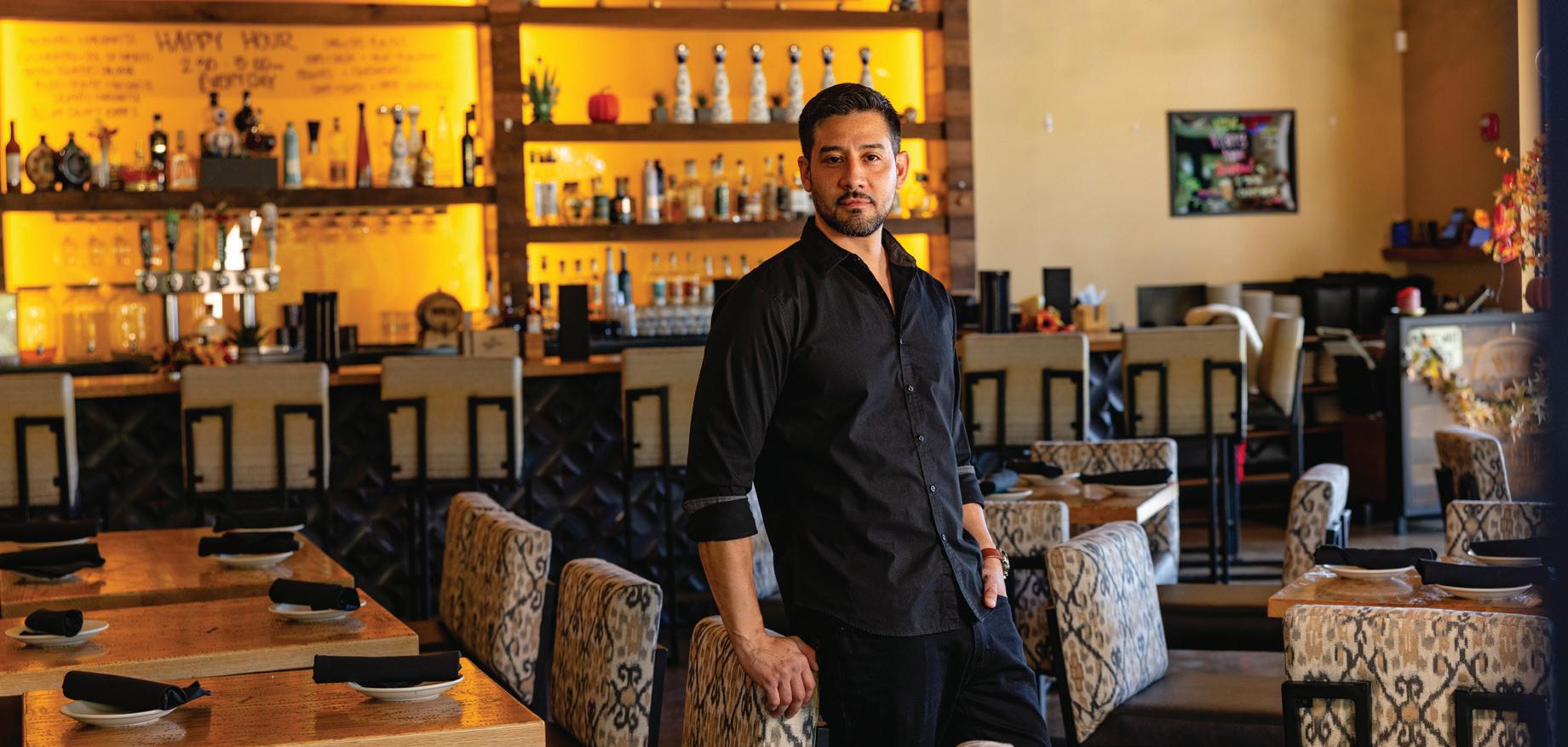
by Holly Morgan
In just a handful of years, Mochilero Kitchen has grown from a startup, new-concept restaurant to a two-location, much-talked-about favorite that spans the Valley, making it a convenient and tasty stop for a quick lunch to brainstorm, collaborate, impress or relax. This fresh, farm-to-table restaurant brings the vibrant flavors of Mexico to life with a modern flair. Founded with a vision to celebrate authentic Mexican cuisine while embracing sustainability, Mochilero Kitchen has quickly become a local favorite for food enthusiasts who value quality, tradition wwand creativity.
Mochilero Kitchen is the perfect destination for lunch meetings, offering a welcoming ambiance that balances professionalism with a touch of warmth and vibrancy. Both the Peoria and Scottsdale locations are open and welcoming with intentional touches of character and charm, including handpainted murals depicting the culture from which the menu was drawn. With its unique rooted-in-tradition farm-to-table philosophy, attentive service and thoughtfully crafted meals, Mochilero ensures that every guest leaves satisfied, making it an ideal spot to impress clients or connect with colleagues.
From its inception, Mochilero Kitchen has prioritized quality food, using fresh ingredients to provide a Mexican-food menu unlike any most patrons have seen. Mochilero sources fresh, local ingredients to craft its dishes, a commitment that ensures every plate is not only bursting with flavor but also supports the community’s farmers and producers. The menu evolves with the seasons, reflecting the best ingredients available while staying true to its Mexican roots. Mochilero Kitchen is renowned for its innovative yet traditional dishes, each prepared with care and artistry.
What’s a delicious power lunch without a drink to wash it down? The cocktail program at Mochilero Kitchen is as creative as its cuisine, offering handcrafted drinks like the Margarita de la Casa, made with freshly squeezed lime juice and premium tequila. The Spicy Mango Mezcalito combines smoky mezcal with the sweetness of mango and a spicy kick. The bar also features a curated selection of Mexican beers and artisanal tequilas, ideal for pairing with the robust menu.
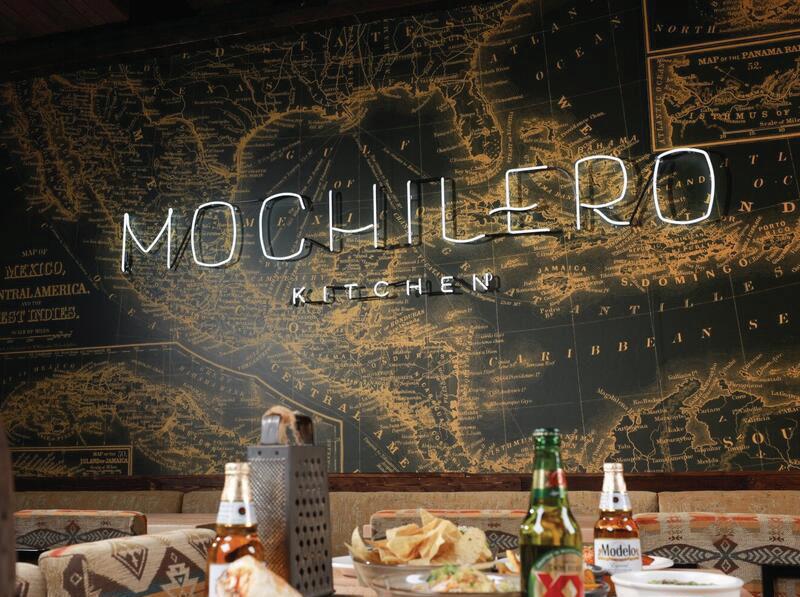
Mochilero Kitchen
14850 N. Frank Lloyd Wright Blvd., Scottsdale (480) 590-0514 mochilerokitchenscottsdale.com
Mochilero Kitchen’s name means “backpacker” in Spanish and reflects its dedication to exploring and celebrating the diverse culinary regions of Mexico. The founders traveled throughout Mexico to learn techniques and gather ideas that would represent the authenticity and diversity of the country. The restaurant blends time-honored recipes with contemporary techniques, offering diners a menu that feels both nostalgic and exciting.
As I reflect on this transformative year as president of NAWBO Phoenix, I am filled with immense gratitude for the vibrant community we have cultivated. This role has been a journey of growth, both for me personally and for our organization, as we’ve embraced the collective wisdom of our members to empower women entrepreneurs across the Valley.
NAWBO (National Association of Women Business Owners) has been at the forefront of championing women entrepreneurs for more than 50 years. As the largest and most influential organization of its kind, NAWBO continues to be a powerful force in advocating for women business owners, fostering leadership and creating opportunities for growth.
Our Phoenix chapter proudly carries forward this legacy by serving as a resource for women to connect, learn and thrive. This year, we leaned into this mission by providing programming and initiatives that address the unique challenges and opportunities faced by women in business today.
One of the initiatives I am most proud of is our year-long Wealth Wise Women series, where we’ve tapped into the incredible expertise within our community to educate and inspire. These monthly luncheons have covered topics from marketing and artificial intelligence to operations, financial strategies and beyond. Each session is designed to equip entrepreneurs with the tools they need to transform their businesses into assets for their families.
These sessions aren’t just about learning technical skills — they’re about fostering a mindset shift. We are teaching women to view their businesses as legacy-building opportunities, with the potential to create generational wealth and impact. The response has been overwhelmingly positive, and it’s a testament to the power of education and collaboration within our NAWBO community.
Continued on page 2
NAWBO® prides itself on being a global beacon for influence, ingenuity and action and is uniquely positioned to provide incisive commentary on issues of importance to women business owners.
NAWBO Phoenix propels women entrepreneurs into economic, social and political spheres of power.
We provide opportunities to connect, collaborate, and cultivate through our events each month.
Events are open to both members and guests. Check out our calendar at nawbophx.org and join us!
Take advantage of this great opportunity to connect — we can’t wait to see you there!
Winter 2025 • nawbophx.org

Tanaha Hairston
NAWBO Phoenix President
Tanaha Hairston is the founder of RISE The Movement, a collaborative investment community dedicated to empowering women through impactful investments. Her vision is to provide women with the tools and knowledge to make a positive impact through investing in areas such as climate, gender equality, and social change.
With a background in engineering and entrepreneurship, Hairston successfully navigated a business exit, showcasing her business acumen. She has a strong passion for empowering women and supporting ethical projects.
Through RISE The Movement, Hairston promotes financial empowerment, gender equality, and social impact by fostering sound investments in diverse asset classes. Her advocacy for financial literacy aims to empower women for financial success.
Hairston holds an MBA with a focus on finance from the Thunderbird School of International Management, along with a Bachelor of Science in Computer Science and Engineering from Arizona State University.
Her ultimate aspiration is to contribute to a better world for future generations. risethemovement.com
For more infomation, visit www.nawbophx.org.

Phoenix Metropolitan Chapter of the National Association of Women Business Owners 7729 E Greenway Rd. #300, Scottsdale, AZ 85260 480-289-5768 • info@NAWBOphx.org
This year, we were fortunate to receive funding from Ti any & Bosco, which allowed us to secure a new space for our events. This investment underscores a belief in the importance of educating and empowering business owners to build thriving, sustainable businesses.
I am especially thankful to Mayor Kate Gallego, who joined us to share her vision for Phoenix and the importance of fostering community support to strengthen Arizona’s entrepreneurial ecosystem. Her insights remind us that strong businesses build strong communities, and when we support each other, we lay the foundation for lasting growth.
We’re also looking forward to one of our most exciting events of the year: the Women with Vision Conference, scheduled for March 5th. This conference will feature a Shark Tank-style competition, where women entrepreneurs will pitch their business ideas to a panel of judges. It’s an incredible opportunity to showcase innovation, secure funding and celebrate the ingenuity of women business owners.
This event will be a culmination of our e orts to uplift and inspire women entrepreneurs, providing them with the resources, connections and confidence they need to succeed.
In my own work as an impact investor, I have seen firsthand the importance of aligning financial success with purpose. This year, I’ve been grateful for the enthusiastic support from our community for syndicating investments in real estate and impact-driven projects.
Our investors aren’t looking just for high returns, passive income and tax benefits — they’re looking to make a di erence. Every opportunity we present must have an impact component, whether it’s providing a ordable rents or incorporating clean energy solutions. This intentionality makes every investment not just a financial win but a step toward creating a better future.
Gratitude
Of course, none of this would be possible without the unwavering support of my family. My son is thriving as a freshman baseball player in college, and my daughters, both athletes in their own right, are charting their collegiate paths forward. Watching them grow and succeed fills me with pride and reminds me why I strive to build a legacy of impact through my work and leadership.
As this year comes to a close, I am thankful for the community of women entrepreneurs who inspire me daily. Together, we are building businesses that not only support our families but also strengthen our communities. I look forward to another year of growth, collaboration and impact.
NAWBO’s 50-year history reminds us that empowering women in business isn’t just about individual success — it’s about creating a movement. Together, we are carrying that legacy forward, building a stronger foundation for the future, one business at a time.
Thank you, NAWBO Phoenix, for believing in the power of education, connection and purposedriven leadership.

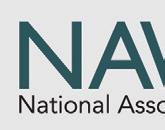
by Andi Hess
We are constantly told that routines (and discipline!) are the secret to success. Advice on how to structure your day is everywhere — and everyone, it seems, has a 27-step routine that you should be following. And while these methods work for some, they often fall flat for others. Why? Because they’re not designed with your unique energy, values and needs in mind.
For me, as a woman with ADHD, I’ve struggled with the rigidity of traditional routines. I want them all!! The idea of waking up at 5 a.m., hitting the ground running, and sticking to a predetermined schedule all day felt great — until I wanted to sleep in. It left me feeling like I had to choose: The 5 a.m. Club, or the 4-Hour Work Week? Which one is the secret to success?
The truth is, routines are meant to serve us, not the other way around. When we follow routines that don’t align with ourselves, we risk disconnecting from what truly matters: our vision, our well-being and our ability to thrive. You don’t have to conform to someone else’s definition of a “successful” routine. By customizing routines to fit yourself, you can create a structure that supports your growth and aligns with your goals.
For instance, I’ve learned that I don’t have to choose between hustling out of bed at dawn or sleeping in until noon. My version of a decadent, beautiful morning routine now means waking up early and staying in bed for a couple of hours with my dogs, allowing my body to wake slowly and easing into the day. Now, I still get out of bed at a fairly early hour, but there’s no rush — and no brain fog, because I am fully awake.
This is the freedom that comes from breaking the rules: You get to design a routine that works for you, not against you.
Creating a routine that aligns with your vision and energy requires intention and experimentation. Here are a few tips to help you get started:
1. Assess Your Energy Patterns.
Pay attention to when you feel most energized and focused throughout the day or week or even month. Are you a morning thinker, an afternoon doer or an evening creator? Do you have weeks you feel great followed by weeks you deal with debilitating symptoms? Track your energy levels and notice patterns. This awareness will help you design routines around yourself, perhaps recording all your videos when you feel like you’re really “on” and allowing yourself to spend the day tying up loose ends in sweatpants when you don’t feel like talking to people. Pay attention to what feels good and what doesn’t. The beauty of a customized routine is its flexibility; you’re always free to change something.
2. Define Your Priorities.
What matters most to you? Your routine should reflect your personal and professional goals, not just a checklist of what others say you “should” be doing. Perhaps you get lots of movement in your job so you choose reading a book over going to yoga for your evening routine. Ask yourself: What activities truly move the needle in my business? What brings me joy or fulfillment? Let these answers guide how you structure your day.
3. Let Go of Guilt.
This may be the hardest step, but it’s the most important. Give yourself permission to ignore the advice that doesn’t resonate with you. Success isn’t about doing what others do; it’s about doing what works for you. Whether that’s staying in bed a little longer or working in short bursts instead of long stretches, own your choices and let go of the guilt.

Routines are powerful tools when they align with who we are and what we value. Breaking free from the expectations — about how we should work, how we should lead and how we should live — allows us to reclaim our time, our energy and our vision. So, ask yourself: What kind of routine would truly support you? What rhythms feel natural, energizing and sustainable? Start there. Break the rules. Build a routine that works for you — and watch how it transforms not just your day but your entire business.
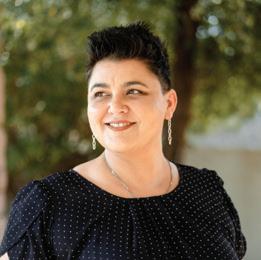
Andi Hess Remix Coaching remixcoach.com
by Joanna Horton McPherson
Are you on podcasts, panels or interviews? Giving talks on stage? Is your audience getting value out of your appearances? Speaking to audiences is a great way to sell our services, raise awareness and build our following. There’s one way to know if you’re succeeding, and that’s whether you’re making sales and building your following. If you aren’t, there is likely a reason: Your message doesn’t land with the audience.
We want to inspire them, help them connect with us, and serve them in solving the problem they have — the most inspiring speakers do this well. What is the di erence between you and them?
You know inspiring speakers when you see them — they confidently command the stage or tell a story that has you on the edge of your seat. Anyone can do this, but not everyone knows how. If we’re not confident or are unclear or, worse, trying hard to sound good, we’re losing out on an opportunity to serve others and grow our business.
Have you heard this statistic? Seventy-five percent of us fear talking in front of a group of people more than death. That includes business owners; we’re just better at hiding it because we are so used to talking with people. The thing they struggle with most, actually, is not fear but imposter syndrome: the inner doubt about whether what we are saying actually matters or is valuable to others.
Today, I am going to show you the way you didn’t know was possible!
People who want to be a powerful speaker hire me to learn confidence and share their transformative message. As a public speaker and former professional actor, I have performed for thousands of people on stages and sets across the world. For 20 years of that time, I have trained hundreds of actors and speakers in a method I developed for becoming confident in front of audiences. It hasn’t just led to success on stage; it has changed lives.
Past client successes include being featured in Forbes magazine, gaining 1 million followers, being on the cover of Vogue magazine … and these people weren’t just studying being on stage; they were learning about themselves. They become clear on who they are — and feel good about it — which changes the way they show up in front of audiences.
The conflict is when you know something is not working but don’t know how to fix it! Often, it comes down to realizing you’ve been living according to others’ expectations rather than your own. When you make your own definition of success and fulfillment according to your values and vision, you validate yourself — and live on your own terms for once!
The other part is anxiety of speaking to a group of people. Whether it’s fear of sounding stupid or wondering if your message is clear or is important to your audience — none of this is about performing. It comes down to confidence in yourself. We address this by my three-fold approach:
• Know your story and what challenges you came through that taught you some important lessons. The way we do this is to go back and understand some of the personal growth you came through that normally you wouldn’t think you’d ever discuss. The most inspiring speakers know which parts of their story will inspire and help their audience; now it’s your turn.
• Know your message and what valuable lessons your challenges have taught you. The vulnerability you have as an inspiring speaker only works because of the value it brings you and others. You got wisdom about life from those hard times, and those become your message that is the heart of your talk.
• Know yourself. This is the magic, and makes all the di erence between being an inspiring speaker and just a speaker. When we sit in the seats watching and listening to someone talk, we can immediately tell whether a) they’re forcing it or b) they’re being authentic. Self-knowledge gives you the feeling like you’ve done the work, so when you get up in front of people you don’t feel like you need to cover for yourself, explain yourself or feel afraid.
Taking time to understand your values and path on a deeper level allows you something magical: a greater awareness of your growth, your power and how inspiring you really are. What you develop by going deep is discovering why your message matters. This is real confidence, and nothing can substitute for the real thing. This is the transformation that my clients experience that changes their life. It causes them to succeed because they feel confident not just on stage but in themselves as a whole across di erent sectors of life.
Your growth makes you unique and gives you a distinct perspective in the world. I want you to discover your unique voice. Do you know that your professional accomplishments have in some way resulted from the growth you have had? Do you know why your path and lessons are valuable to your audience? This is what the audience wants. They want help on their journey. You help them by sharing the valuable lessons from yours. This is the power of an inspiring, authentic, powerful speaker whose message resonates with those listening. When you stand in your confidence, you move people. That’s good for you, good for others and good for business.
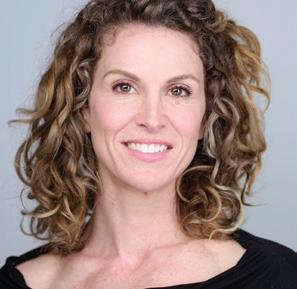
by Joanna Horton McPherson
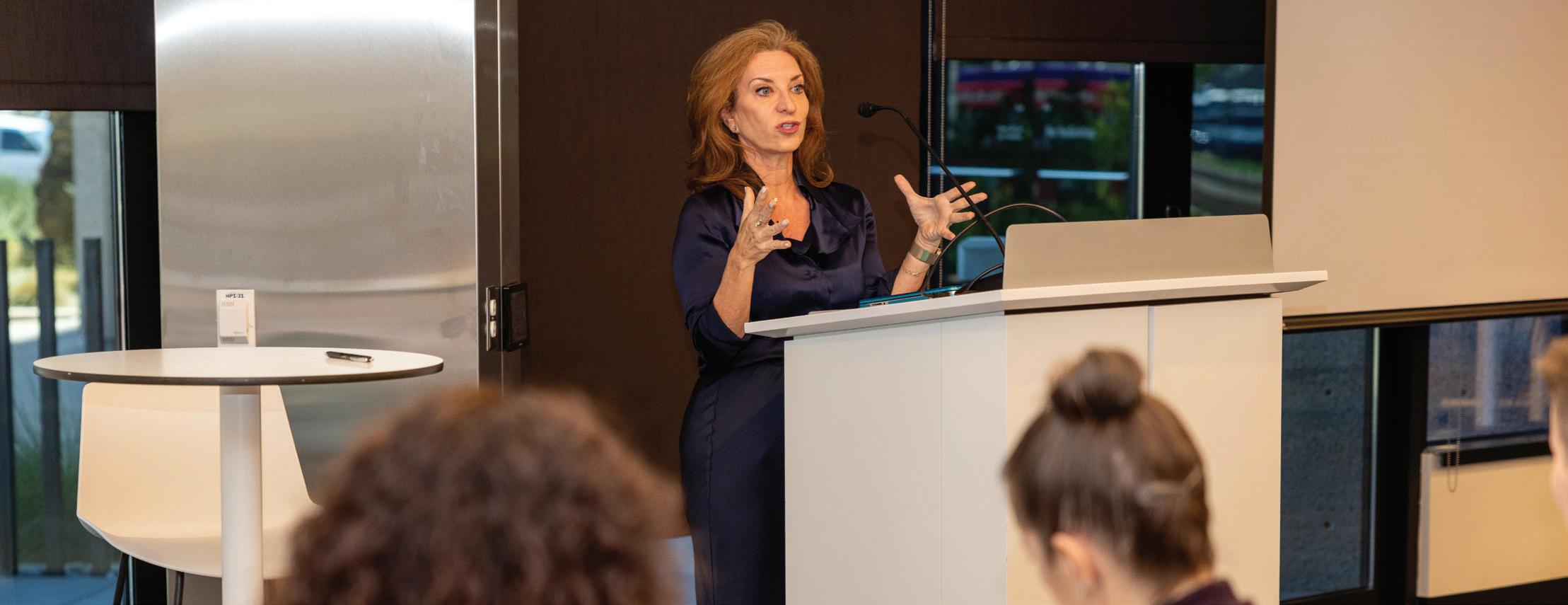
Phoenix is home to a very active and growing community of business owners. According to a study, Phoenix outpaced the GDP growth rate of other U.S. cities by almost double after the pandemic. That was due in large part to the small-business-friendly ecosystem that supports entrepreneurs to launch their ventures in Arizona.
Where do women stand in this picture? Nearly 50 years ago, a group of women led by Susan Hager, co-founder of NAWBO, descended upon Washington, D.C., legislators. They carried a vision they needed to execute on: legalizing the right for women to work on their own behalf as business owners. In 1974, they helped pass what is now known as the Equal Credit Opportunity Act. Until then, banks required a woman to bring a man along to cosign any credit application, regardless of their income. This act enabled women to launch businesses of their own. In the following year, 1975, the first woman-owned commercial bank opened in New York City — First Women’s Bank. As Margaret Mead says, “Never doubt that a small
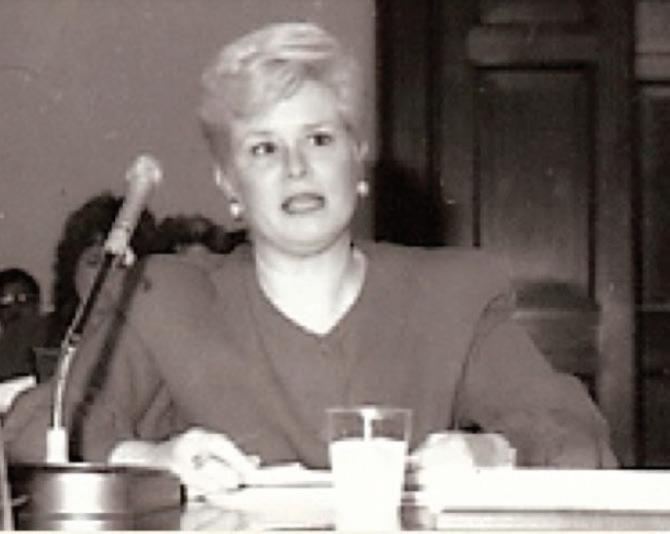
group of thoughtful, committed citizens can change the world; indeed, it’s the only thing that ever has.”
We have come a long way since that time. Now entering its 50th year in existence, NAWBO has chapters around the country and is one of the longest-running women business organizations in the country. NAWBO Phoenix hosts events to help women expand their business and grow assets. One attendee said, “I go to a ton of events like this in the Valley, and what you’re doing here has the most electricity of them all.”
Indeed, women business owners are entering a new era of power and influence, and Phoenix is no exception. According to a recent groundbreaking study by Wells Fargo, the number of woman-owned businesses in the U.S. during the same timeframe increased at nearly double the rate of those owned by men. Woman-owned businesses represent 39.1% of all businesses (more than 14 million) and employ 12.2 million workers. This wasn’t always true, however. During the period of the pandemic and beyond, the growth of woman-owned businesses has been impressive. According to statistics from the Wells Fargo report:
• From 2019 to 2023, woman-owned businesses’ growth rate outpaced the rate of man-owned businesses by 94.3% for the number of firms, 252.8% for employment and 82.0% for revenue.
• Nearly half a million woman-owned businesses with revenues between $250,000 and $999,999 grew their aggregate revenues by about 30%.
• Between 2019 and 2023, Black/African American woman-owned businesses saw average revenues increase 32.7% and Hispanic/ Latino woman-owned businesses 17.1% compared to all womanowned businesses’ 12.1% rise.
As we continue to develop NAWBO Phoenix’s role in supporting
women’s business growth, we o er special events to our members and community. This includes a Pitch Competition for women building their following, selling services and raising money. Applicants receive free training to compete in the event early spring 2025 at our signature summit, Women with Vision. This day-long event includes break-out sessions and inspiring panelists on topics ranging from finance to mental health to tax prep and leadership, as well as powerful speeches and an award ceremony. To attend, find information on the NAWBO Phoenix website listed below.
NAWBO members find these in-person events to be the most powerful way to connect. One CEO said recently of attending our WealthWise Woman event, “I have assembled my entire team from tax to book-keeping to virtual assistant to marketing — from women I met at these events.”
As we enter NAWBO’s 50th year, we turn to inspire more leaders like Susan Hager who will continue to change
history for the better. As we continue building NAWBO’s local impact, membership is on the rise. More women entrepreneurs seek a supportive and inspiring community that will provide access to growing their business. As women join our events, they meet new clients and expand their reach. If this sounds like something you want too, join us by visiting https://www.nawbophx.org/.
Additional resources for women in business include:
• 40 small-business grants for women listed by NerdWallet.
• Women in Business Grants 2024/2025 from USgrants.
• Women-owned business certification through WBENC for support and development programs and the SBA for federal contracting opportunities. (From https://bigideasforsmallbusiness.com/state-ofwomen-owned-businesses-in-2024)
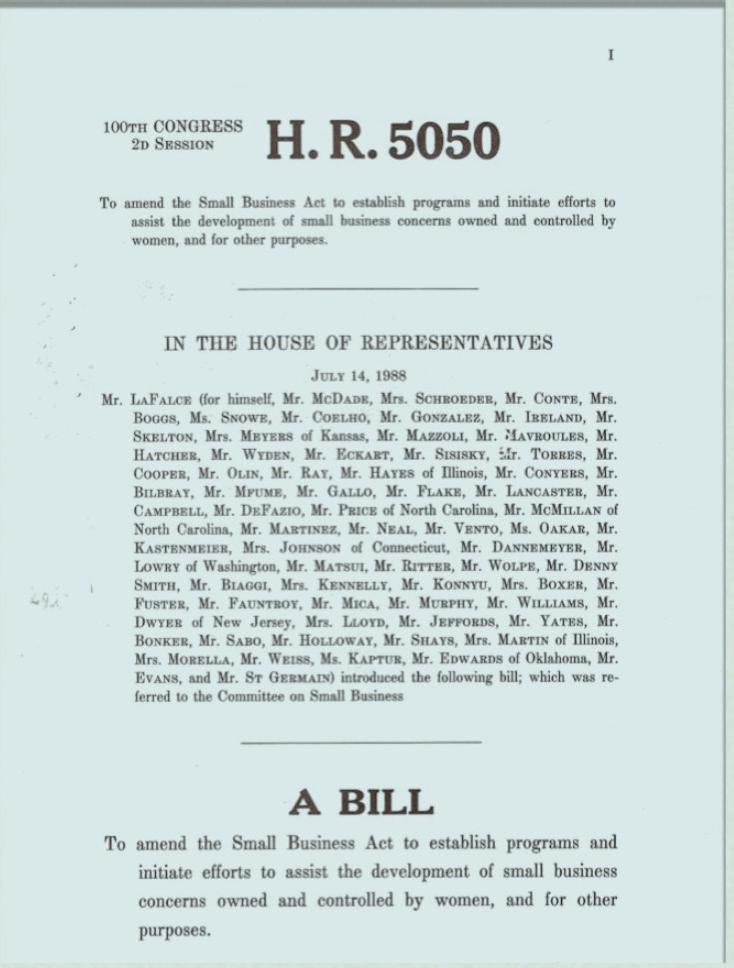
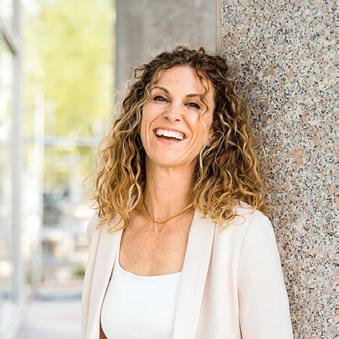
Joanna McPherson is a leader, speaker, and 6x founder. As a coach, she provides expert training to confidently deliver a transformative message that builds a following, drives business, and changes lives for the better. A graduate of Harvard University, Joanna has founded and led schools, non-profits & businesses in the U.S. and abroad since 2005, and has unique expertise as a professional actor and Buddhist meditation guide. To inspire the next generation of global leadership, Joanna serves as strategic advisor on boards in the U.S., Rwanda and Costa Rica, and serves as NAWBO Phoenix President-Elect. More at joannahortonmcpherson.com

Some handshakes will hurt your influence
by Stacey Hanke
Have you ever wondered what your handshake says about you? Your handshake is like your business card. It conveys your confidence, credibility and influence without a single word being spoken. Studies have shown this one simple gesture can enhance a social situation and make a positive impact on others.
In our culture, a handshake accompanies almost every introduction and initiates many conversations. It sets the tone for new relationships by signaling others of your integrity. People often admit to judging others based on this small gesture. Because of this, The Journal of Personality and Social Psychology encourages everyone to pay attention to their handshake as it has found significant consistencies in a firm handshake and a positive first impression.
Perfecting the Perfect Handshake
Practice the perfect handshake first by seeking feedback on yours. Ask someone you trust to help identify areas of opportunity. Then practice it on others to solicit feedback and more guidance until you’ve mastered the art.
Some keys to the perfect handshake:
• Anticipate the handshake. Ensure your hand is free, out of your pocket and not holding onto any items. Switching hands to shake is distracting and awkward.
• Use your right hand. Even if you’re a leftie, our culture dictates right-handed handshakes as key.
• Maintain a strong, confident posture. Remain upright and refrain from leaning. If necessary, take a step toward the person with whom you’re greeting. If you’re seated upon meeting someone, stand up before shaking their hand. This signifies respect to the














person you’re meeting.
• Make intentional eye contact as you greet the other person. Once your hand makes a connection, ensure your eyes connect, too. Use a kind greeting such as “nice to meet you” or “great to see you again.” Incorporate their name with your greeting to help better solidify your introduction. This interaction trifecta will warm up anyone with whom you connect.
• Remain firm throughout the handshake. Grasp the other person’s hand with a firm grip without squeezing. Maintain the grip for two seconds before releasing. Don’t allow your hand to fall limp upon the initial grip.
• Shake from your elbow, not your wrist. Two or three pumps will do. Any more and your partner will begin to feel uncomfortable.
You want to be so confident in your handshake style that it is second nature. Seeking feedback and frequent practice will help solidify your good habits, so you can concentrate more on meeting the person and less on the impression you’re making. The more comfortable you become, the more confidence you’ll convey.
Stacey Hanke is the founder and communication expert of Stacey Hanke Inc. (staceyhankeinc.com). She is the author of Influence Redefined: Be the Leader You Were Meant to Be, Monday to Monday and Yes You Can! Everything You Need From A to Z to Influence Others to Take Action. Hanke and her team have delivered thousands of presentations and workshops for leaders of Fortune 500 companies, including Coca-Cola, Nationwide, FedEx, Kohl’s and AbbVie.
We hope you will enjoy this comprehensive compilation of the Valley’s top sites for business events, conventions and meetings. Our Valley is home to some of the best properties, with state-of-the-art technology and facilities to ensure the success of your next great event. In Business Magazine has compiled this guide so companies can compare amenities and make choices for their local events. This guide will be online at www.inbusinessphx.com for a full year.
Black Canyon Conference Center 9440 N. 25th Ave. Phoenix, AZ 85021 (602) 944-0569
blackcanyonconferencecenter.com
Desert Willow Conference Center
4340 E. Cotton Center Blvd. Phoenix, AZ 85040 (602) 431-0001
desertwillowconferencecenter.com
Poco Diablo Resort & Conference Center 1752 Arizona 179 Sedona, AZ 86336 (928) 282-7333 pocodiablo.com
Glendale Civic Center 5750 W. Glenn Dr. Glendale, AZ 85301 (623) 930-4300
glendaleciviccenter.com
Mesa Convention Center
263 N. Center St. Mesa, AZ 85201 (480) 644-2178
mesaconventioncenter.com
Phoenix Convention Center 100 N. 3rd St. Phoenix, AZ 85004 (602) 262-6225 phoenixconventioncenter.com
Experience Scottsdale
4343 N. Scottsdale Rd., Suite 70 Scottsdale, AZ 85251 (480) 421-1004
experiencescottsdale.com
Glendale Convention & Visitors Bureau 9494 W. Maryland Ave., Third Floor Glendale, AZ 85305 (623) 930-4500 visitglendale.com
Tempe Tourism Office 222 S. Mill Avenue, Suite 120 Tempe, AZ 85281 (480) 894-8158 tempetourism.com
Camby Hotel 2401 E. Camelback Rd. Phoenix, AZ 85016 (602) 468-0700
Doubletree by Hilton Chandler 7475 W. Chandler Blvd. Chandler, AZ 85226 (480) 961-4444 chandlersouthgatehotel.com
Courtyard Scottsdale Old Town 3311 N. Scottsdale Rd. Scottsdale, AZ 85250 (480) 429-7785 marriott.com
Crowne Plaza Hotel Phoenix –Airport 4300 E. Washington St. Phoenix, AZ 85034 (602) 273-7778 crowneplazaphx.com
DoubleTree by Hilton Hotel Phoenix Tempe 2100 S. Priest Dr. Tempe, AZ 85282 (480) 967-1441 hilton.com
DoubleTree Suites by Hilton Phoenix 320 N. 44th St. Phoenix, AZ 85008 (602) 225-0500 doubletreephoenix.com
Chaparral Suites Hotel Scottsdale
5001 N. Scottsdale Rd. Scottsdale, AZ 85250 (480) 949-1414 chaparralsuites.com
Four Points by Sheraton North 2532 W. Peoria Ave. Phoenix, AZ 85029 (602) 943-2341
four-points.marriott.com
Embassy Suites by Hilton Phoenix Biltmore
2630 E. Camelback Rd. Phoenix, AZ 85016 (602) 955-3992 hilton.com
Embassy Suites Hotel PhoenixTempe 4400 S. Rural Rd. Tempe, AZ 85282 (480) 897-7444 hilton.com
Hilton Phoenix/Mesa 1011 W. Holmes Ave. Mesa, AZ 85210 (480) 833-5555
hilton.com
Hotel Palomar Phoenix, A Kimpton Hotel
2 E. Jefferson St. Phoenix, AZ 85004 (602) 253-6633
hotelpalomar-phoenix.com
Hotel San Carlos 202 N. Central Ave. Phoenix, AZ 85004 (602) 253-4121 hotelsancarlos.com
Hotel Valley Ho 6850 E. Main St. Scottsdale, AZ 85251 (480) 376-2600
Hyatt Regency Phoenix 122 N. 2nd St. Phoenix, AZ 85004 (602) 252-1234 phoenix.hyatt.com
Omni Tempe Hotel at ASU 7 E. University Dr. Tempe, AZ 85281 (602) 794-8600
Airport Marriott 1101 N. 44th St. Phoenix, AZ 85008 (602) 273-7373
Phoenix Downtown Hotel 100 N. 1st Street Phoenix, AZ 85004 (602) 333-0000 marriott.com
Tip 2: Document and share meeting results.
Fear of missing out (FOMO) compels people to attend meetings they shouldn’t. Organizers don’t want to leave people out, so they invite everyone who might possibly want to weigh in. Having irrelevant people in the room de-energizes the conversation and disrupts productivity.
Documented meeting results are the fastest and easiest way to combat meeting FOMO. Before the meeting, clearly document the meeting purpose and desired outcomes. After the meeting,
send out written meeting results. When people can see in advance what a meeting is for, then see afterwards what happened, they can decide whether they need to attend. This keeps meetings more focused, and it keeps everyone more productive. —J. Elise Keith, co-founder of Lucid Meetings (www.lucidmeetings.com) and author of Where the Action Is
Scottsdale Marriott Suites Old Town
7325 E. 3rd Ave. Scottsdale, AZ 85251 (480) 945-1550 marriott.com
Sheraton Crescent Hotel
2620 W. Dunlap Ave. Phoenix, AZ 85021 (602) 943-8200 sheratoncrescent.com
Sheraton Phoenix Airport Hotel – Tempe 1600 S. 52nd St. Tempe, AZ 85281 (480) 967-6600 sheratonphoenixairport.com
Sheraton Grand Phoenix 340 N. 3rd St. Phoenix, AZ 85004 (602) 262-2500 sheratonphoenixdowntown.com
Windemere Hotel & Conference Center
5750 E. Main St. Mesa, AZ 85205 (480) 985-3600 windemerehotelmesa.com
Wyndham Garden Phoenix Midtown 3600 N. 2nd Ave. Phoenix, AZ 85013 (602) 604-4900 wyndhamhotels.com
Adero Scottsdale Resort 13225 N. Eagle Ridge Dr. Scottsdale, AZ 85268 (480) 333-1900 aderoscottsdale.com
Arizona Biltmore, A Waldorf Astoria Resort 2400 E. Missouri Ave. Phoenix, AZ 85016 (602) 955-6600 arizonabiltmore.com
Arizona Golf Resort & Conference Center
425 S. Power Rd. Mesa, AZ 85206 (480) 832-3202 arizonagolfresort.com
Arizona Grand Resort & Spa
8000 Arizona Grand Pkwy. Phoenix, AZ 85044 (602) 438-9000 arizonagrandresort.com
Civana Carefree 37220 N. Mule Train Rd. Carefree, AZ 85377 (480) 653-9000 civanacarefree.com
Crowne Plaza Phoenix Chandler Golf Resort 1 N. San Marcos Pl. Chandler, AZ 85225 (480) 812-0900 sanmarcosresort.com
DoubleTree Resort by Hilton Hotel Paradise Valley Scottsdale 5401 N. Scottsdale Rd. Scottsdale, AZ 85250 (480) 947-5400 hilton.com
Fairmont Scottsdale Princess 7575 E. Princess Dr. Scottsdale, AZ 85255 (480) 585-4848 fairmont.com/scottsdale
FireSky Resort & Spa 4925 N. Scottsdale Rd. Scottsdale, AZ 85251 (480) 945-7666 fireskyresort.com
Found:RE Hotel Phoenix 1100 N. Central Ave. Phoenix, AZ 85003 (602) 875-8000 foundrehotels.com
Four Seasons Resort Scottsdale at Troon North 10600 E. Crescent Moon Dr. Scottsdale, AZ 85262 (480) 515-5700 fourseasons.com/scottsdale
The Global Ambassador Hotel 4360 E. Camelback Rd. Phoenix, AZ 85018 (480) 800-2211 globalambassadorhotel.com
Grand Canyon Squire Inn 74 Arizona 64 Grand Canyon Village, AZ 86023 (928) 638-2681 grandcanyonsquire.com
Harrah’s Ak-Chin Hotel & Casino 15406 N. Maricopa Rd. Maricopa, AZ 85139 (480) 802-5000 caesars.com/harrahs-ak-chin
The Hermosa Inn 5532 N. Palo Cristi Rd. Scottsdale, AZ 85253 (602) 955-8614 hermosainn.com
Hilton Scottsdale Resort & Villas
6333 N. Scottsdale Rd. Scottsdale, AZ 85250 (480) 948-7750
hilton.com
Hyatt Regency Scottsdale Resort & Spa at Gainey Ranch
7500 E. Doubletree Ranch Rd. Scottsdale, AZ 85258 (480) 444-1234
hyatt.com
JW Marriott Phoenix Desert Ridge Resort & Spa 5350 Marriott Dr. Phoenix, AZ 85054 (480) 293-5000 marriott.com
JW Marriott Scottsdale Camelback Inn Resort & Spa 5402 E. Lincoln Dr. Scottsdale, AZ 85253 (480) 948-1700 marriott.com
The Legacy Golf Resort 6808 S. 32nd St. Phoenix, AZ 85042 (602) 305-5500 golflegacyresort.com
The McCormick Scottsdale 7401 N. Scottsdale Rd. Scottsdale, AZ 85253 (480) 948-5050 millenniumhotels.com
Shadows 5445 E. Lincoln Dr. Scottsdale, AZ 85253 (480) 624-5400 mountainshadows.com
Omni Scottsdale Resort & Spa at Montelucia 4949 E. Lincoln Dr. Scottsdale, AZ 85253 (480) 627-3200 omnihotels.com/hotels/scottsdalemontelucia
Orange Tree Golf Resort 10601 N. 56th St. Scottsdale, AZ 85254 (480) 948-6100
The Phoenician Scottsdale 6000
(480) 941-8200
Tip 3: Define ‘The Way’ to meet for all core processes.
There are 16 different types of business meetings, and each has a purpose. A regular team meeting is good for confirming progress and identifying problems, but it’s a lousy place to make a big decision. Big decisions demand a dedicated decision-making meeting. Similarly, the initial meeting with a prospective client (or funder) should look very different from the meeting where you ink the deal. Each of these pivotal meetings can be optimized to drive the results your company needs.
High-performance organizations know the type of meetings they need to run and how to run each one well. Each meeting gets a name and becomes “the way” that kind of work gets done. For example, the team’s check-in meeting becomes “the huddle.” The meeting to impress prospective clients early in the sales cycle becomes a “services briefing.” Anything called simply a “meeting” isn’t specific enough. —J. Elise Keith, co-founder of Lucid Meetings (www.lucidmeetings.com) and author of Where the Action Is
Phoenix Marriott Resort Tempe at The Buttes
2000 W. Westcourt Way Tempe, AZ 85282 (602) 225-9000
Pointe Hilton Squaw Peak Resort 7677 N. 16th St. Phoenix, AZ 85020 (602) 997-2626 squawpeakhilton.com
Pointe Hilton Tapatio Cliffs Resort 11111 N. 7th St. Phoenix, AZ 85020 (602) 866-7500 tapatiocliffshilton.com
Rise Uptown Hotel
400 W. Camelback Rd. Phoenix, AZ 85013 (480) 536-8900 riseuptownhotel.com
The Ritz-Carlton – Paradise Valley
7000 E. Lincoln Blvd. Scottsdale, AZ 85253 (602) 922-2900
ritzcarlton.com/en/hotels/arizona/ paradise-valley
Sanctuary Camelback
Mountain Resort & Spa
5700 E. McDonald Dr. Paradise Valley, AZ 85253 (480)607-2350 sanctuaryoncamelback.com
Scottsdale Marriott at McDowell Mountains 16770 N. Perimeter Dr. Scottsdale, AZ 85260 (480) 502-3836 marriott.com
The Scottsdale Plaza Resort 7200 N. Scottsdale Rd. Scottsdale, AZ 85253 (480) 948-5000
scottsdaleplaza.com
The Scottsdale Resort at McCormick Ranch
7700 E. McCormick Pkwy. Scottsdale, AZ 85258 (480) 991-9000 hilton.com
Sheraton Grand at Wild Horse Pass 5594 W. Wild Horse Pass Rd. Chandler, AZ 85226 (602) 225-0100 wildhorsepassresort.com
Sonesta Suites Scottsdale Gainey Ranch
7300 E. Gainey Suites Dr. Scottsdale, AZ 85258 (480)367-4616 sonesta.com
Talking Stick Resort 9800 E. Indian Bend Rd. Scottsdale, AZ 85256 (480) 850-7777 talkingstickresort.com
Tempe Mission Palms, A Destination Hotel 60 E. 5th St. Tempe, AZ 85281 (480) 894-1400 missionpalms.com
W Scottsdale 7277 E. Camelback Rd. Scottsdale, AZ 85251 (480) 970-2100 wscottsdalehotel.com
We-Ko-Pa Resort & Conference Center
10438 N. Fort McDowell Rd. Scottsdale, AZ 85264 (480) 789-5300 wekoparesort.com
The Westin Kierland Resort & Spa 6902 E. Greenway Pkwy. Scottsdale, AZ 85254 (480) 624-1000 kierlandresort.com
The Westin Tempe 11 E. 7th St., Tempe, AZ 85281 (480) 968-8885 marriott.com/en-us/hotels/ phxwt-the-westin-tempe
The Wigwam Resort & Golf Club 300 E. Wigwam Ln. Litchfield Park, AZ 85340 (623) 935-3811 wigwamarizona.com
Wild Horse Pass Hotel & Casino
5040 Wild Horse Pass Blvd. Chandler, AZ 85226 (520)796-4923 wildhorsepass.com
Az Ice Arcadia 3853 E. Thomas Rd. Phoenix, AZ 85018 (602) 957-9966 arcadiaice.com
Arizona Center
400 E. Van Buren St. Phoenix, AZ 85004 (602) 271-4000
arizonacenter.com
Arizona Science Center
600 E. Washington St. Phoenix, AZ 85004 (602) 716-2000
azscience.org
Bentley Gallery
215 E. Grant St. Phoenix, AZ 85004 (602) 340-9200
bentleygallery.com
Boojum Tree 16026 N. 36th St. Phoenix, AZ 85032 (602) 867-8975
boojumtree.com
Castles ‘n’ Coasters 9445 N. Metro Pkwy. E. Phoenix, AZ 85051 (602) 997-7575
castlesncoasters.com
Chase Field
401 E. Jefferson St. Phoenix, AZ 85004 (480) 339-5000
azchasefield.com
Children’s Museum of Phoenix 215 N. 7th St. Phoenix, AZ 85034 (602) 253-0501 childrensmuseumofphoenix.org
Arizona Financial Theatre
400 W. Washington St. Phoenix, AZ 85003 (602) 379-2800 livenation.com
The Croft Downtown Phoenix 22 E. Buchman St. Phoenix, AZ 85004 (602) 462-970 thecroftdowntown.com n/a
Cutler-Plotkin Jewish Heritage Center
122 E. Culver St. Phoenix, AZ 85004 (602) 241-7870 azjhs.org
Desert Botanical Garden 1201 N. Galvin Pkwy. Phoenix, AZ 85008 (480) 941-1225 dbg.org
Enchanted Island Amusement Park 1202 W. Encanto Blvd. Phoenix, AZ 85007 (602) 254-1200 enchantedisland.com
Franciscan Renewal Center 5802 E. Lincoln Dr. Scottsdale, AZ 85253 (480) 948-7460 thecasa.org
Leaders spend up to 80 percent of their workday in meetings, yet many have never received meeting training. Meetings aren’t just conversations with a lot of people; there are skills and techniques to learn that radically improve meeting results.
High-performance organizations provide skills training to people leading meetings. They also train everyone how to
participate in the meetings, defined as “the way” to get their job done. Meetings represent an enormous salary investment, and high-performance organizations ensure their people get a good return on that investment.
—J. Elise Keith, co-founder of Lucid Meetings (www.lucidmeetings.com) and author of Where the Action Is
Heard Museum
2301 N. Central Ave. Phoenix, AZ 85004 (602) 252-8840 heard.org
Herberger Theater Center 222 E. Monroe St. Phoenix, AZ 85004 (602) 254-7399 herbergertheater.org
K1 Speed
2425 S. 21st St. Phoenix, AZ 85034 (602) 275-5278 k1speed.com/phoenix-location.html
MonOrchid
214 E. Roosevelt St. Phoenix, AZ 85004 (602) 253-0339 monorchid.com
Musical Instrument Museum 4725 E. Mayo Blvd. Phoenix, AZ 85050 (480) 478-6000 mim.org
The Penske Racing Museum
7125 E. Chauncey Ln. Phoenix, AZ 85054 (480) 538-4444 penskeracingmuseum.com
Phoenix Art Museum
1625 N. Central Ave. Phoenix, AZ 85004 (602) 257-1222 phxart.org
Phoenix Zoo
455 N. Galvin Pkwy. Phoenix, AZ 85008 (602) 286-3800 phoenixzoo.org
Rawhide
5700 W. North Loop Rd. Chandler, AZ 85226 (480) 502-5600 rawhide.com
Special Event Venues (con’t)
Rio Salado Audubon Center
3131 S. Central Ave. Phoenix, AZ 85040 (602) 468-6470 riosalado.audubon.org
Rise Uptown Hotel
400 W. Camelback Rd. Phoenix, AZ 85013 (480) 536-8900 riseuptownhotel.com
The Ritz-Carlton – Paradise Valley
7000 E. Lincoln Blvd. Scottsdale, AZ 85253 (602) 922-2900 ritzcarlton.com/en/hotels/arizona/ paradise-valley
Secret Garden 2501 E. Baseline Rd. Phoenix, AZ 85042 (602) 268-5522 secretgardenevents.com
Stand Up Live
50 W. Jefferson St., Suite 200 Phoenix, AZ 85003 (480) 719-6100 phoenix.standuplive.com
University of Arizona College of Medicine
550 E. Van Buren St. Phoenix, AZ 85004 (602) 827-2002 phoenixmed.arizona.edu
Valley Youth Theatre
525 N. 1st St. Phoenix, AZ 85004 (602) 253-8188 vyt.com
Venue at the Grove 7010 S. 27th Ave. Phoenix, AZ 85041 (602) 456-0803 venueatthegrove.com
The Wrigley Mansion 2501 E. Telawa Trail Phoenix, AZ 85016 (602) 955-4079 wrigleymansionclub.com
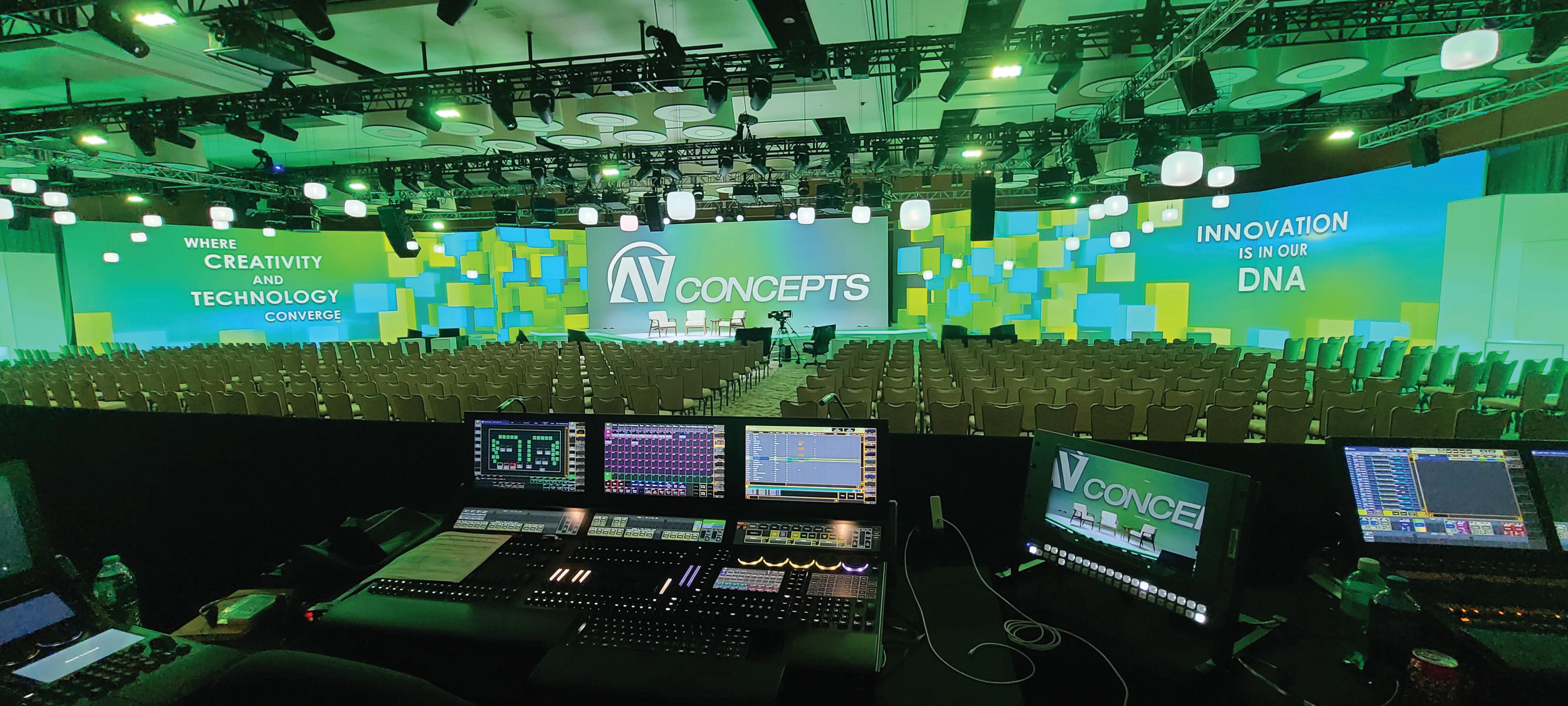
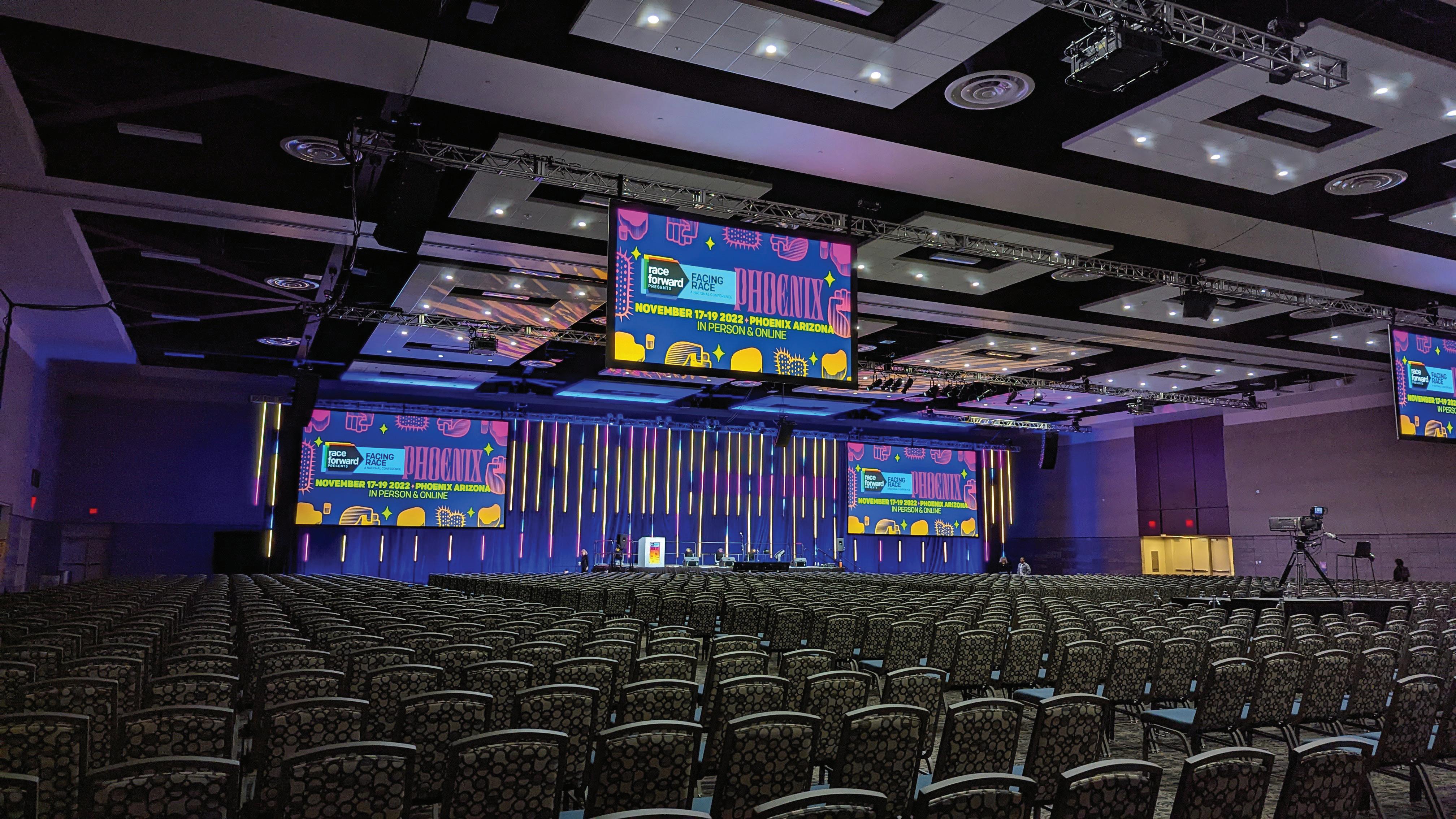
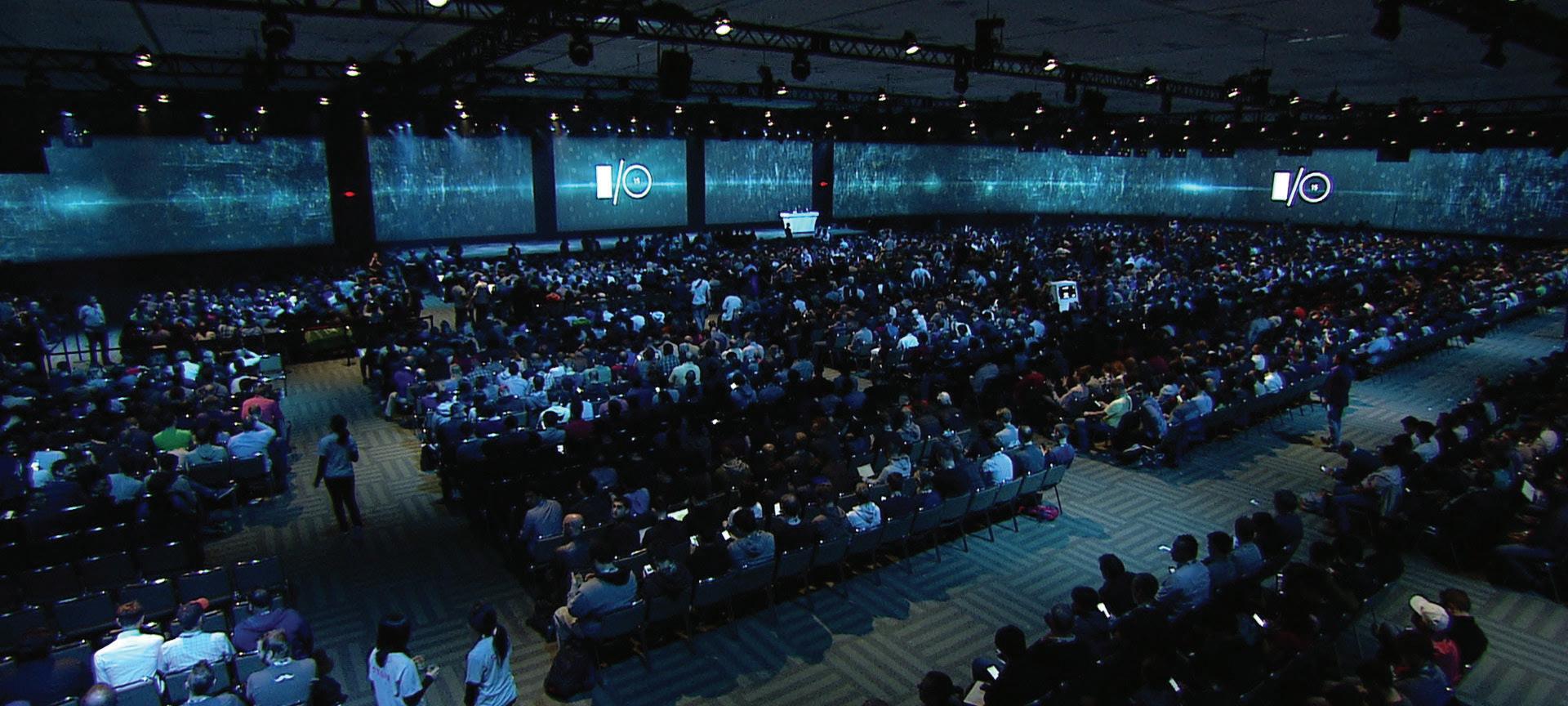
Arambula, Nick, 14
Barnes, Paul, 39
Beaumont, Sarah, 44
Benigno, Pierpaolo, 39
Briggs, Wendy, 28
Butler, Tyler, 44
Chucri, Steve, 28
Crow, Michael, 14
Drucker, Scott M., 28
Emmons, Jeff, 17
Freeman, Dean, 20
Glascock, Alexis, 28
Goetz, Calvin P., 28
Hager, Susan, 53
Adobe, 47
Aeriz, 12
Alliance Bank of Arizona, 19
American Red Cross, 3
Arizona Commerce Authority, 21, 22
Arizona Community Foundation,45
Arizona Financial Credit Union, 5
Arizona Lottery, 44
Arizona REALTORS®, 28
Arizona Restaurant Association, 28
Arizona State University, 14
Arizona Technology Council, 28 AV Concepts, 64
Banner|Aetna, 24
BCG, 26
Blue Cross Blue Shield of Arizona, 25
Brinshore Development, 17
Brown & Brown Phoenix, 28
Canva, 47
CBRE, 28
Collaboration for Good, 44
Copa Health, 11
Culdesac, 18
Delta Dental of Arizona, 14
Desert Caballeros Western Museum, 10
ElectraMeccanica, 22
Equality Health, 68
Hairston, Tanaha, 49
Hanke, Stacey, 56
Harmon, Mike, 39
Hebets, Jim, 14
Hess, Andi, 51
Hobbs, Governor Katie, 22, 44
Jones, Scott, 28
Juknys, Vaidotas, 15
Keller, Dan, 24
Khodabandeh, Shervin, 26
Kirane, Ryan, 24
Kirch, Chris, 16
Loscher, Tricia, 10
MacCallum, Claire, 42
Eventbrite, 47
Experience Scottsdale, 28
Fennemore, 28, 42
Goodmans, 13
Goodwill of Central & Northern Arizona, 7
Goodyear, City of, 41
Guidant Law, 10
Hebets Company, The, 14
Holmes Murphy, 14
HonorHealth, 24
Hootsuite, 47
Immedia, 17
Jive, 8
JX Advanced Metals USA, 22
Kitchell, 16
Kiterocket Insights, 20
Kiterocket, 23
Lucid Motors, 22, 47
Meade Engineering
Mochilero Kitchen, 48
National Association of Women Business Owners – Phoenix, 49
Neighbor, 14
NextSpace, 17
Nikola Corporation, 22
Opticos Design, 18
Phoenix Philanthropy Group, The, 28
Phoenix Theatre Company, The, 67
Plexus Worldwide, 14
Marconi, Andrea, 42
McIntosh, Samantha, 46
McMillan, Kyle, 40
McPherson, Joanna Horton, 52
Meade, Johnathan, 10
Neumarker, Nicole, 38
Parolek, Daniel, 18
Rogers, Chris, 44
Rollo, Holly, 66
Sacco, Rachel, 28
Saks, Sam, 10
Sayed, Ed, 26
Schultz, Stockton, 14
Skalicky, Kelly, 28
Thomson, Alec, 44
Tollefson, Richard, 28
Watson, Sandra, 22
Williams,Vanessa, 28
Wolfer, Macey, 12
Zhukov, Leonid, 26
Zylstra, Steven G., 28
Polestar Scottsdale, 2
PREP Kitchens Scottsdale, 14
ProTech Detailing, 27
Remix Coaching, 51
RISE The Movement, 49
Satellite Coffee Bar, 14
Save the Family Foundation of Arizona, 17
Smartproxy, 15
Sol Flower, 12
Stacey Hanke Inc., 56
Stearns Bank, 8, 28
Strategy Financial Group, 28
Sun State Builders, 17
Sunbelt Holdings, 27
Surge Strategies, 66
Tiffany & Bosco P.A., 43
UBS Wealth Management USA, 14
UMB Bank, 40
Valley of the Sun United Way, 46 Veridus, LLC, 28
Vimly Benefits Solutions, 26
WorkForce Software, 38


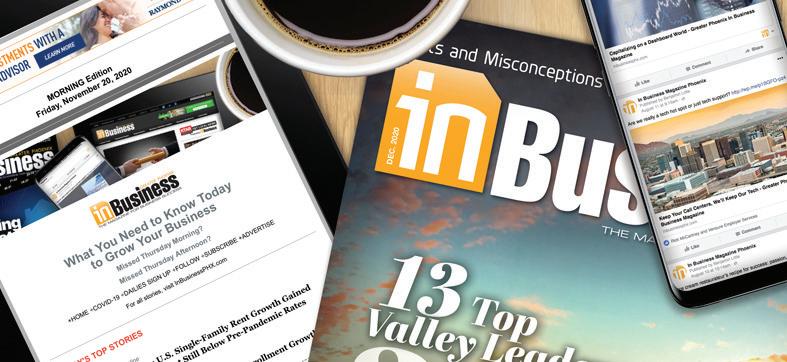


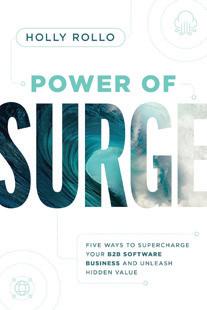
Holly Rollo is CEO of Surge Strategies, a strategic marketing advisory firm helping B2B software CEOs drive growth and scale. With more than 30 years of experience in the technology industry, Rollo is a strategic advisor who specializes in transforming go-tomarket (GTM) engines and repositioning products and services portfolios in the face of major market disruptions, turnarounds, hyper-growth, carve outs and pre/post-equity transactions. She has led and supported enterprise B2B, transformational and growth initiatives within multinational environments operating at scale, across various domains such as cybersecurity, cloud, ERP, HCM, and network security.
Her first book, Power of Surge: Five Ways to Supercharge Your B2B Software Business and Unleash Hidden Value (Advantage Media Group), provides the key steps for CEOs to transform their marketing strategies to gain competitive advantage and transaction success. surge-strategies.com
by Holly Rollo
For years technology companies have struggled with maintaining their culture as they grow and scale, but today’s challenge is even tricker because of the generational shift underway that is complicating matters.
The sheer number of technology companies starting up each day is massive, and competition for top talent has intensified as predicted over the last 10 years. With this as the backdrop, it’s often the case that founders and executives have set a culture and values structure that worked in the past, but risk being dated or irrelevant. Organizations must revisit and realign their corporate culture to attract the best talent and manage the generational changes in the workforce, which can be painful for many who either didn’t value or took culture for granted in the past.
At the same time, the retirement of the boomer generation poses the risk of losing valuable institutional knowledge while also opening the door for innovation and cultural transformation, which makes it a great time to look at it. This is happening in even the most established organizations, such as the National Security Agency, which is competing with the private sector for the best talent to protect and defend our nation’s best interests from foreign adversaries. NSA’s culture, long established as valuing serving in silence (thus garnering the nickname ‘NSA = No Such Agency’), no longer fits with the times, nor communicates to the motivations of younger talent.
There’s this culture that was established for decades from leadership at the top who values “sacrifice and service to country” trying to compete with private-sector employers who have the perks and pay beyond traditional government work. Pay is never a reason great talent wants to join the intelligence community; it’s much more about the mission, making a difference, and being able to work on our nation’s biggest problems. This doesn’t translate as “service” per se, as much as it does having a job with “purpose and meaning” and being part of an exclusive, elite team, so words and behaviors are important to define. The goal is to define values and behaviors that are inclusive across the organization, not just relevant and applicable to a few.
In this example, as with cybersecurity in general, threats and vulnerabilities expand and accelerate because of AI and Quantum, so certain cultural behaviors that have benefited the private sector such as agility, collaboration and resilience become even more important. The cultures of the past may not support how problems of tomorrow get solved. This means that not only does research and development need to be agile, but business decisions and workflow need to be agile across the entire organization.

This is especially true in many technology or STEM-based organizations with a bias for logic or outcomes, not the human factor. There’s a generational belief that getting the big idea done is what matters, but to younger generations, the “how” the work gets done is just as important. This is also the case with organizations that strive to maintain their mission regardless of who is running it. The armed forces strive to instill leadership, integrity and execution across the force, regardless of who the General is at the top. In the private sector, many tech companies have cultures that are based on the cult of personality of the CEO or key leaders that are difficult to sustain beyond their tenure.
It’s time for organizations to reevaluate their culture and values during these generational transitions, focusing on key strategies such as aligning with modern talent expectations, maintaining a competitive edge in the talent market, and mitigating the risks of high turnover and disengagement. It may also be time to take practical steps to ensure they are driving the right behaviors top down and bottom up to galvanize a culture that lasts beyond any one set of leaders. Having an operational culture requires holding people accountable and encouraging behaviors that reinforce the values. This can be a major cultural shift on its own, and leadership needs to have courage to change it. For example, if an organization has historically been hierarchical but now wants to drive certain behaviors around leadership and inclusion, one strategy is to set up upward feedback from teams on their leader’s performance against these behaviors. That’s a best practice today in the tech industry through 360 and upwards feedback review programs, but it isn’t prolific. In a government entity or in more hierarchical cultures, this could be a significant change that can make people at the top nervous. However, the only way to drive accountability for value-based behaviors — and get an intentional, sustainable culture — is to make sure people are held accountable for their behaviors.
Leaders are encouraged to view generational turnover not as a disruption but as an opportunity to refresh their company’s identity, embrace innovation and drive long-term success by establishing a lasting legacy that lives beyond their own careers.
There’s a generational belief that getting the big idea done is what matters, but to younger generations, the “how” the work gets done is just as important.



Miracle on 34th Street: A Live Musical Radio Show
November 20 – December 28, 2024
Seussical the Musical
December 18, 2024 – January 26, 2025
Churchill
February 5 – April 13, 2025
Jersey Boys
February 19 – May 4, 2025
Forbidden Broadway: the next generation
April 23 – June 22, 2025
Into the Woods
May 21 – July 13, 2025
Let the Good Times Roll: A New Orleans Gumbo
August 6 – August 31, 2025


The Phoenix Theatre Company invites you to experience world-class, self-produced plays and musicals at our vibrant multi-theatre campus, located in the heart of the Phoenix Downtown Arts District. As we celebrate our 105th season, join the over 150,000 patrons who visit us each year to enjoy everything from bold new works to cherished classics and modern hits. Coming in Summer 2025, don’t miss the grand opening of the Dr. Stacie J. and Richard J Stephenson Theatre — a Broadway-caliber venue featuring cutting-edge sound, lighting, and top-tier accommodations.
your tickets today at




